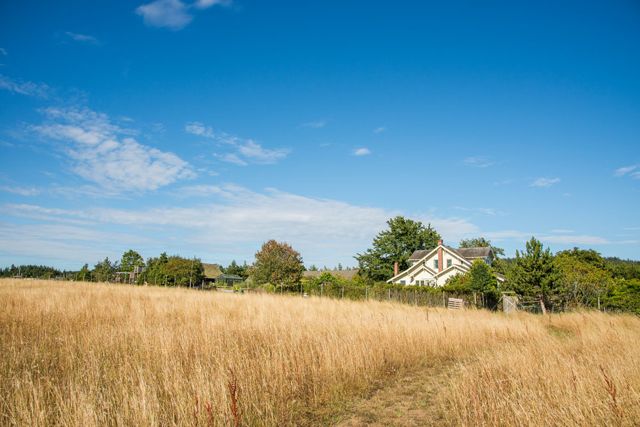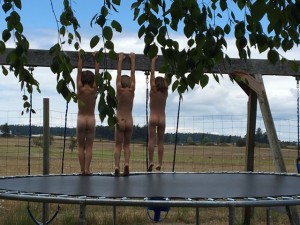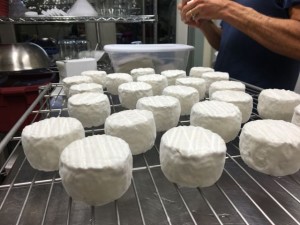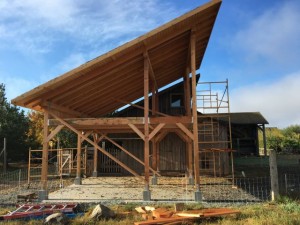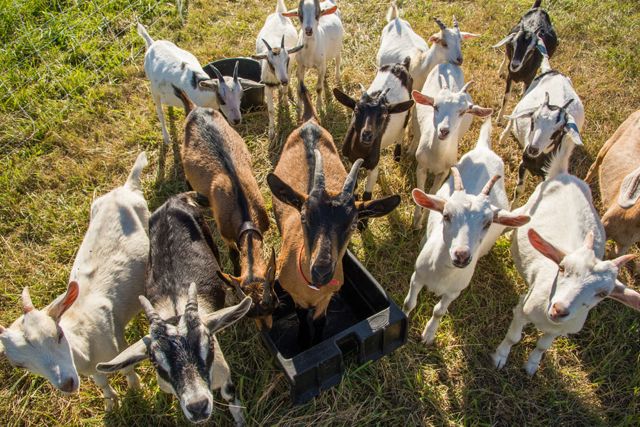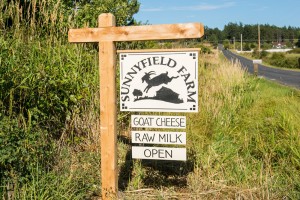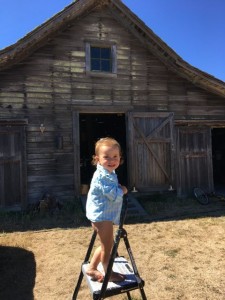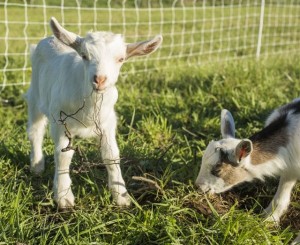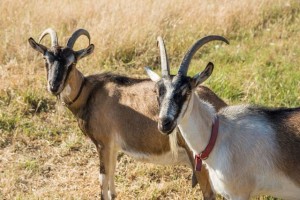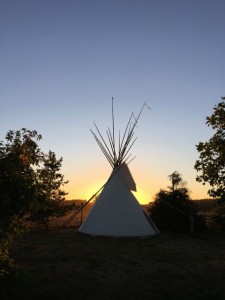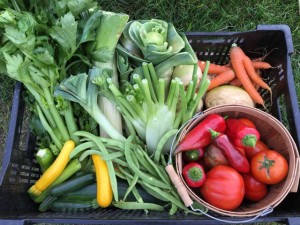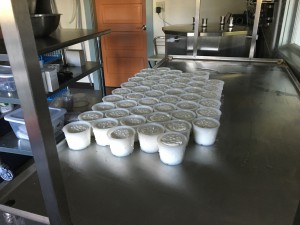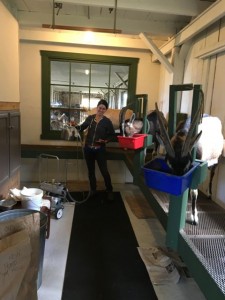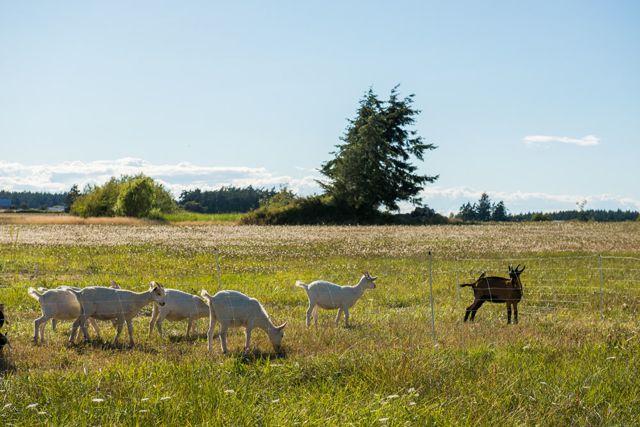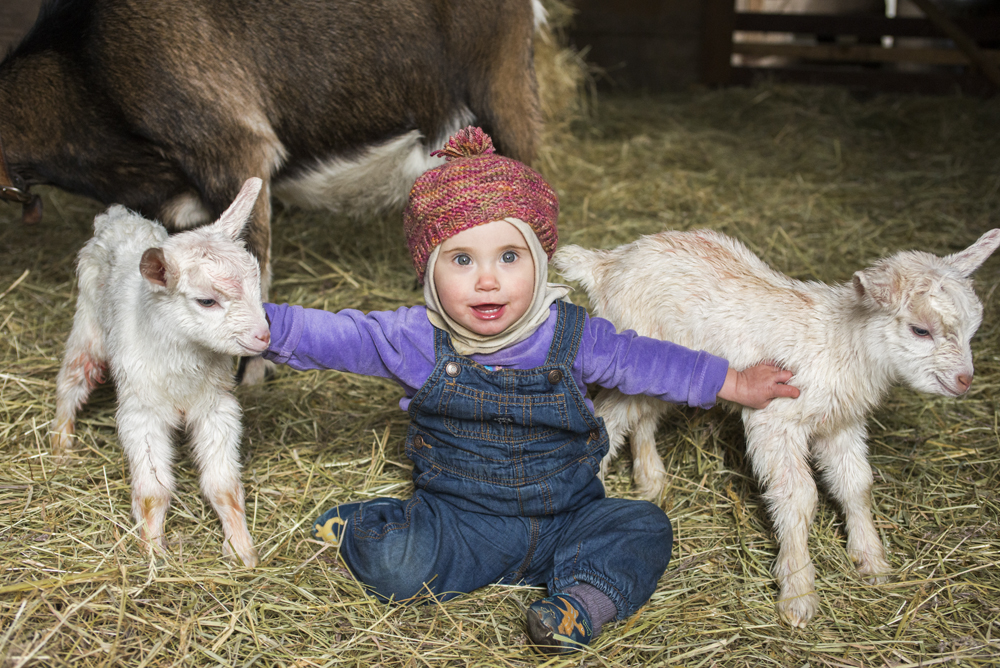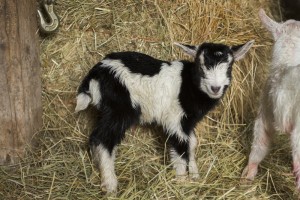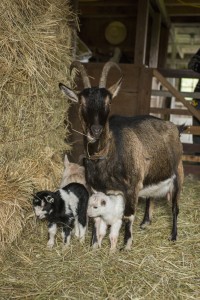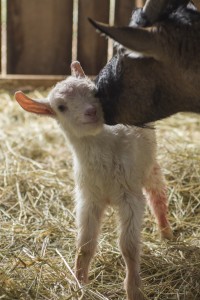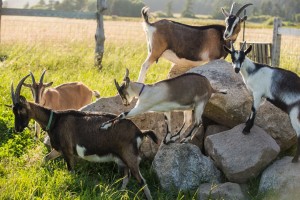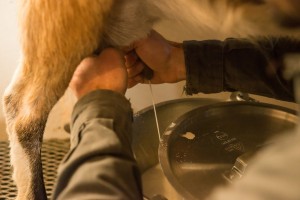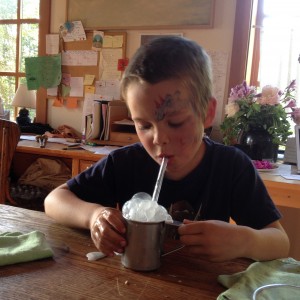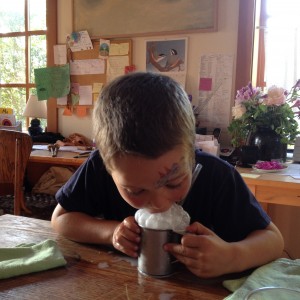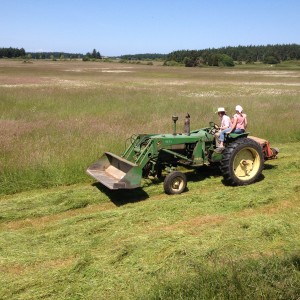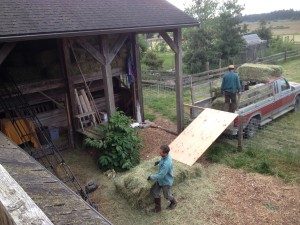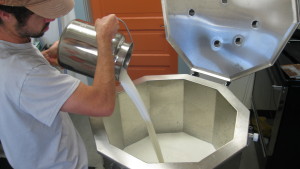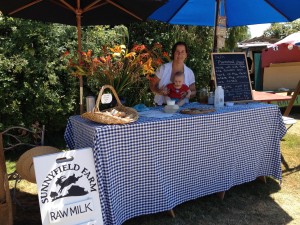A sweet moment to brighten your day!
Category Archives: Uncategorized
Spring Fling 2019
The first annual Sunnyfield Farm Spring Fling. A special community event to enjoy the farm in its spring glory with goat kid petting, face painting, good music and delicious food.
Here’s a slide show of the days festivities.
Notes from “the Intern”
Well, it’s a sunny Tuesday morning and I’d usually be doing some work around the farm at this time. The compost needs to get turned, goats need to be moved to a new pasture, a handful of trees could use some extra mulch. But instead of doing any of that I, the intern, am writing a blog entry while Andre works his butt off. That’s because just this weekend I took a bad spill on my bike and badly hurt my elbow. Nothing broken. 3 stitches. Still very sore and far from turning a heap of compost. So this entry is just a reflection on my time here on this land, with these people. But if you just want to see pictures of some faces and places here scroll to the bottom!
I came to Sunnyfield Farm in mid-december from Salt Lake City. I have always felt a deep connection to this Earth and the life it supports and I wanted to really begin to understand more fully this interaction between this living world and myself. How can we live kindly with soil, plants, and animals? What are these things? What can we learn from them?
I was really starting from scratch. I was raised in the suburbs eating processed food that just showed up on my plate. I had no idea where it came from. As a child I don’t think I actually understood that food comes from the Earth, not a box. We eat this Earth. And when we see where our food comes from, we understand something of what it means to be alive. And where we come from. And where we return.
December was cold and rainy. I slept in the yurt situated near the barn, just next to the Limbach’s little home. The goats made me laugh. The Limbach children were incredibly bright and welcoming. Andre and I started working together. I try my first bloomy rind cheese, a few months old. Andre loves these cheeses. They take a lot of work and careful attention to get it just right. I cannot believe how satisfying a small slice is.
On Christmas Eve my spirits are lifted by a snowfall. Leaving the warmth of the yurt I grabbed my headlamp and went out for a walk. Billions of snowflakes. I wanted, as always, to understand.Muffled footfalls. Up to Lopez Hill. So quiet. Then I saw two eyes reflected in the light of my headlamp, got spooked and ran home. Probably one of those flesh eating deer.
February. Only a few goats in milk. Just enough for everyone on the farm. Sunnyfield is closed for business until babies start coming in March. We hand milk, no machine. Its really nice. I assist Andre with odd jobs but much of my time is spent in the food forest. Elizabeth teaches me, drawing from a deep well of knowledge and experience working with plants. She is the mastermind behind the food forest, the vegetable garden and the breathtaking and seamless landscaping that brings this place to life. I dig holes for transplanting small hazelnuts and chestnuts. We plant a hedgerow of willow, dogwood, silverberry, and blackberry. It will serve as a permanent fence as well as browse for the goats. The cold weather and short days leave time for occasional movie nights. Morgen and Andre introduce me to the hilarious and wonderful world of Monty Python. I am forever indebted to them for this influence. Around this time Andre and I start playing chess. I win the first game. Now he’s ahead by 5.
March. Tantalizing hints of spring. I see an animal give birth for the first time. They rarely need any assistance and I stare in awe as two small, wet goats emerge from the backside of Cajeta, one of the Alpines. Well, alright then! Before you know it babies are everywhere! They’re warm and playful. This also means that the herd is making milk again. We have to milk twice a day. 6am and 6pm. Andre then uses magical spells to turn this bounty into yogurt, bloomy rinds, fresh chevre, feta, and the occasional hard wheel.
April. We’re really in the swing of it. Less rain, more sun. Goats going to pasture in the green growing grass, cheese to make, spills to clean, dishes to wash, hooves to trim, fences to make and move. The air is fragrant. Lots of love and lots of learning but no proper words for this gratitude.
Les Cheverie des Embetsches, France- The Land of Castles and Cheese
Amazingly enough, I traveled to France, and back. Just last week I arrived back in Seattle. It’s not easy to get away from running a dairy, but I had a little window between drying off the milking does and kidding time. With a great family connection (free air-fare) and my wife being willing to handle the beginning of kidding season I had the chance to see Paris and work at a goat dairy for almost 3 weeks.
I’m a cheese maker and what better place to go than the mecca of fromage. I had only read and you-tubed the famous cheeses like “Crottin de Chavignol”, “Valencay” and “Banon.” In Paris for three days before my high-speed train departure for the Alsace region to the east, I frolicked around eating croissants, baguettes, and looking for these famous cheeses.
In Paris I mostly walked all around trying to decide if I could have another croissant and where. The pastries were incredible. I could only eat so much cheese. I would go find a fromagerie and get a cheese to go with a baguette and then go sit down somewhere to try it out. Yum. But I also wanted to go to restaurants, Bistros and try some real french food. I guess I wish I had more time, and a kitchen to be able to purchase these raw ingredients I saw everywhere to take home and create dishes.
Notre Dame, the Eiffel Tower, Sacre Coeur, the Holocaust Memorial, all the history, the incredible effort, and the two hour lunch breaks! Really though, I found myself cussing out-loud all the time as I looked at these great cathedrals and stone buildings. “F*#*! F*#*! Look at that! I can’t believe I’m walking up to a castle, a real castle! I’m still in France! There’s the village, there’s the castle above and in a war they all go up there with some food and hide out in protection!” It was like a fairy tale.
A few weeks before i lined up my WWOOFing (Willing Workers on Organic Farms) membership and started looking for goat dairies I could work at for a short period of time. I WWOOFed in Australia for a couple years so I new the general culture of experience, but of course not that of France. Most hosts prefer long stays, but I had a special case and one farm took me in. I had a little window to travel, learn some cheese practicalities, and then return home in 2-3 weeks for our own dairy to take off again for the season.
The farm is Les Cheverie des Embetsches. http://www.embets.com/chevres.html Try saying that! 120 goats and 80 some odd sheep and 80ish pigs and a bunch of horses and the whole farm was on the side of a mountain. The nearest town was Lapoutroie, very small and very beautiful. Chestnuts, hazelnuts, oak, maple, pine, fir, bracken fern and scotch broom! In many ways a lot like home.
This picture is looking from where they bring the goats to browse (i was there in winter so the goats were on 100% hay as were ours) and is looking at the farm’s buildings.
The man who contacted me was Gaspard, and he said his parents started the fromagerie/cheverie and he is now managing much of the finances. He is not the cheese maker, though many times during the week i would see him and his sister in the cheese room (fromagerie) helping with packaging and organizing the deliveries. The cheese maker is Thierry and he has been making cheese on the premises for 32 years. I didn’t spend that much time with Gaspard, but we did manage to go on the most insane mountain biking trip i’ve ever gone on.

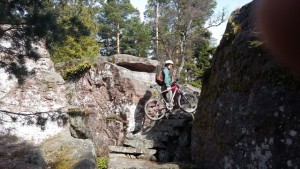 This was just after a four hour bike ride, mostly down-hill from 3000 meters, but lots of ridges and up hill sections. I was incredibly sore and the beer with a castle in the background was good. This picture of Gaspard was just after the waiter spilled a whole beer on his lap. I told him the waiter was distracted by his spandex pants. You can still see the wet spot on the table.
This was just after a four hour bike ride, mostly down-hill from 3000 meters, but lots of ridges and up hill sections. I was incredibly sore and the beer with a castle in the background was good. This picture of Gaspard was just after the waiter spilled a whole beer on his lap. I told him the waiter was distracted by his spandex pants. You can still see the wet spot on the table.
Oh yea right, the cheese, the Fromage! Everywhere one went on the farm it was up or down. I went uphill from the WWOOFing quarters to the Fromagerie each day for work. When the whey drained from the cheese, it went downhill, right to the pigs! I was very fortunate to be able to work with Thierry most days as they knew that’s why I came. He was a sweet man. He knew some English, but when he had trouble communicating he would stop everything, rinse the cheese off his hands and get his dictionary to help our understanding.
But we gotta back-up a bit.
The goats came up a ramp 20 at a time. We here at Sunnyfield milk 3 at a time, but when I came back from France I upgraded the efficiency to 4! This is where I started getting surprised and a bit happier. They did not wash the goat teats at all and the filtered milk went straight in to the vat for raw milk cheese, au lait cru, twice a day!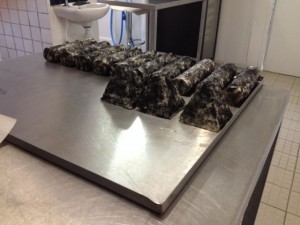
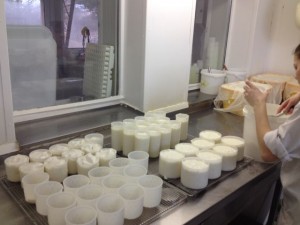
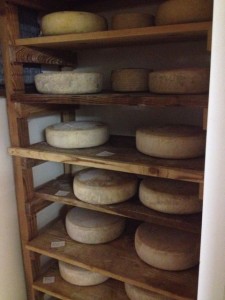 The cheese maker had a simple recipe for how much whey from the previous batch to put in the fresh, raw milk and off the fermentation went again, to be drained about 24 hours later. 32 years and no issues AND their milk is inspected just like ours is. Plus they barely washed their surfaces and their cheese racks. “if we use chemicals then we make it empty,” said Gaspard.
The cheese maker had a simple recipe for how much whey from the previous batch to put in the fresh, raw milk and off the fermentation went again, to be drained about 24 hours later. 32 years and no issues AND their milk is inspected just like ours is. Plus they barely washed their surfaces and their cheese racks. “if we use chemicals then we make it empty,” said Gaspard.
Once there was a student from a cheese school working in the Fromagerie. She decided to clean the aging room, the place where the mold grows, while Thierry was away. Thierry said afterwards he could not make cheese for weeks. It was too “clean.” He had won awards for his cheese and some of the starred restaurants in the area served it.
They made quite a few different kinds of fromage. All with goat milk or lait chèvre. Oh, except for a tomme which he had a cow dairy deliver some milk to make a 50/50 goat/cow hard cheese. And that was raw milk too.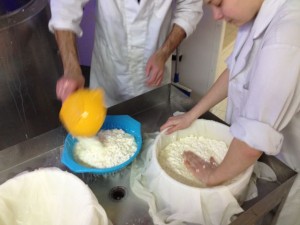
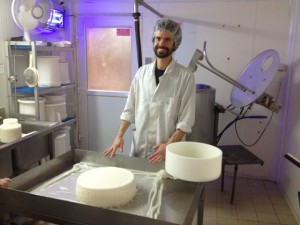 That wheel consists of about 25-30 gallons of milk. It was lightly pressed, will age 4 months and get 4 baths in brine during it’s ripening period.
That wheel consists of about 25-30 gallons of milk. It was lightly pressed, will age 4 months and get 4 baths in brine during it’s ripening period.
I’m not exactly sure what to do with the experience I gained. Last year we would save up 3 days of milk (considered to be the max to save up milk for quality cheese making) to make a batch to fill my 30 gallon vat. This fromagerie in France obtained around 40 gallons in one milking and made cheese immediately, which is far superior to what we have been doing. So i learned how to grow- As we get more goats on the milking line, we will just make cheese more often instead of saving it up and needing a bigger vat and bigger storage and bigger cooling systems, biggering and biggering.
The main hangup to my hopes and dreams is pasteurization. If I were to make cheese more frequently, fresher, better quality, then doing it raw would take around 30 minutes to cool it slightly and add some culture. But we are required in the US to pasteurize cheese that will be eaten in less than 60 days. SO this process takes me around 5 hours! Most of that time is waiting for the bulk of the milk to cool back down to 70 degrees so i can start fermentation. Pasteurization does probably allow me the grace of saving up milk and “cooking” out the built up spoilage organisms, but I wish I had the freedom to make what the French call the “only way to make cheese.”
-Andre
P.S. Chèvre means goat, not cheese.
P.P.S. The french eat cheese at the END of the meal, with red wine.
Still OPEN February and March
The farm stand will have our delicious crumbly aged raw milk Feta cheese available for sale over the next couple months. Please come on by anytime.
It is the only product available anywhere for the moment. 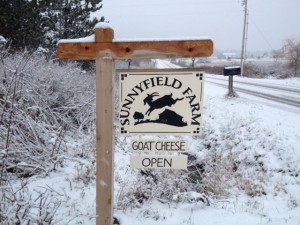 We are pretty much shut down for a little while as we prepare for another bustling season.
We are pretty much shut down for a little while as we prepare for another bustling season.

Enjoying the last of winter as we anticipate the promise of spring.
Kidding will begin mid March and that means more milk. Most will go to the baby goats at first. We will be making cheese again in April!
Highlights of 2016- Thanks for a great season!
No kidding. Yes kidding!
Thanks to over 100 contributors we made our crowd fundraising goal of $15,000, and then some. No kidding! Huge gratitude for this awesome phenomena. We are very excited to be moving forward with finishing the aging room and getting the equipment we need to grow the dairy.
And so the season begins. The does are kidding and so far we have 17 new baby goats born beautiful and healthy, jumping around and getting into mischief within days of birth. Ada, our daughter turning 1 year end of March, squeals with delight at the sight of them. The mamas are getting out to green pasture and come back to the barn often to visit their kids.
Now getting into the routine again of milking twice a day, and though most the milk goes directly to the kids (for a couple months), we are getting enough milk to start making batches of fresh goat cheese, aka chèvre, in the cheese vat and will begin selling at the “Little Spring Market” we hold here at the farm every other Saturday thru April. Next market is April 2nd 10-2. So come on by and revel with us in the joys of Spring!
-Elizabeth
More Local Cheese Please!
We have launched a crowd-funding campaign to grow our dairy! Getting a dairy up and running (and growing) is no small task. We are asking for help because we can’t do it with out you.
It is because of the support we feel from our community that we are taking this next step.
Click here for Sunnyfield’s Barn Raiser to view our video and campaign details. Please forward and help us spread the word.
We will finish the aging room and make necessary upgrades to the dairy as we get ready for our second year, working hard to meet the demand as it grows.
Thank you for all your cheese purchasing and milk drinking, and being a part of this community-raised goat dairy.
We are so grateful to have this opportunity to focus on our passions of raising goats and making cheese so YOU can enjoy farmstead cheese local to our beloved San Juan Islands.
Humbly,
Elizabeth and Andre
Goat Milk? Raw Milk?
Yea, i know goat milk is on the fringe and especially RAW MILK. Well if you want to learn more about goat milk check out a friend’s website cause she did a great job. St John Creamery
Basically, goat milk is closer to human milk than cow, so it’s said to be more digestible. Also goat milk is somewhat naturally “homogenized” so it doesn’t “require” the processing that cow milk receives cause they (big dairy business) want it to travel around the world and not end up with little cute butter balls on top.
But RAW MILK!!!??? Who would want to drink that? I think some Surgeon General said it was like playing russian roulette with your health!
Let’s see, where do i start… Blah blah, people were getting sick from cows in cities in NY around the late 1800″s early 1900″s cause the cows were fed distillery slop and never saw a grass blade and were in confinement on their own shit….. Then Mister Pasteur who “Pasteurized” for the wine industry began doing that to this sick milk and, Voila! Babies were saved! What a hero. Wrong. Well maybe a little bit, but he or his constituents missed the main point: Sick animals makes sick milk making people sick. Some of that germ theory stuff they were using i guess.
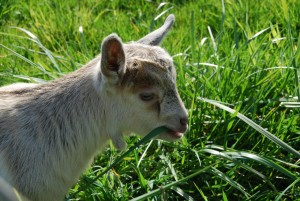 I know the health of my goats is first, before sanitation, as a priority. Sanitation is key too, but you can’t make good cheese with bad milk. (You CAN make bad cheese with good milk!)
I know the health of my goats is first, before sanitation, as a priority. Sanitation is key too, but you can’t make good cheese with bad milk. (You CAN make bad cheese with good milk!)
Mark McAfee runs the largest raw milk dairy in the nation. Organic Pastures in California has dealt with a lot of crap from the authorities. He is a hero to me and defends clean raw milk from pasture raised animals with lots of research. He’s a great speaker. I include an excerpt of the full letter he wrote to the Colorado Department of Health below:
“To study this issue further, Organic Pastures contracted with BSK labs in Fresno to perform multiple challenge and recovery tests on our raw milk and raw colostrum. When 7 logs (10 million counts) of pathogens were added to one-milliliter samples of organic raw milk they would not grow. In fact they died off. The salmonella was so badly out-competed that it could not be found less than 24 hours later. The listeria drop was less dramatic and was similiar to the E. Coli O157:H7 samples that were studied, but they also did not grow and declined substantially over time.
The lab concluded: “. . . organic raw milk and colostrum do not appear to support the growth of pathogens. . .” ”
Ha! Read em and weep you regulators. Not anecdotal at all, but research.
Another friend who tested her own milk (Her Goat milk) told me it was cleaner the day after milking, which proves raw, healthy milk has this “positive pressure” as i like to call it, to take care of itself.
The FDA allows us to have 10 coliforms per ml of milk. Coliforms are a broad class of bacteria. There are good and bad ones. If you have any, than you can dig deeper and find out what kind, like pathogenic for instance. I just accessed the results of the WSDA’s monthly testing of our milk and it said every test but 1 had <1 coliforms and the other had 1 count. I could be dirtier if i wanted to!
I’ve tested my own milk at the soon-to-be-up-and-running Food Safety Lab at the LCLT and found the same results- Clean and normal raw milk.
Raw milk has the stuff present in it to let you digest it. Amazing! Duh! Raw milk advocates have long lists of benefits. It’s a tense topic with many opposing bits of research. Some say pasteurizing destroys the calcium and reduces the vitamin C. Good luck weeding through all the info.
We can sell raw, retail milk, and raw approved cheeses that have been aged 60 days. All else must be Louis pasteurized. So we had to get this: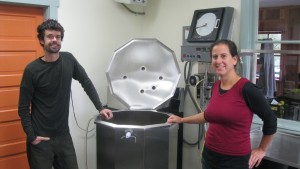
Don’t we look dorky? I don’t even look that stoked to get that $15,000 addition to our cheese room. Well, actually i was very pleased that our community helped us get it, but i’m making a point that i would rather make raw cheese because i believe it’s far superior and in some ways safer. This piece of equipment and the room that surrounds it are part of the “barriers to entry” in to the dairy business. It makes it kinda hard for someone who is passionate about cheese making and has a basic knowledge of herd health and sanitation to sell dairy products. This vat pasteurizer enables us to sell the chèvre that so many people love. Vat Pasteurization is 145° F for 30 minutes.
Once pasteurization is complete the medium is a void, a vacuum. Not much lives in it so i better get something growing in it that’s good. I am actually a little more nervous with pasteurized milk. So this is where i come in with a specific culture of lactic acid bacteria that ferment and convert the milk sugar, lactose, in to lactic acid. This drops the pH down to around 4.6, a pH that botulism cannot thrive in and i bet other bad ones find it intolerable too. Raw milk has these good flavor producing lactobacilli which can create it’s own unique and indigenous subtleties, your terrior. Some day i’ll experiment on myself with these natural starters like our friends the bakers use with their sourdough starters or leavens.
Ultra-Heat Treatment. UHT Milk That sounds delicious
You may notice this on your carton of milk, especially on Organic Valley. It is heated to 280° F for 1-2 seconds! I cannot find anywhere HOW this is done. Doesn’t water boil at 212! This gives their product a 70 day shelf life! Our milk lasts, usually, sometimes, i’m still getting hard data on it, about 2 weeks before it gets stronger flavor notes not in accordance with the american palate (or my wife’s). Often if in the right conditions, warm and breathing, raw milk will convert in to another product, whereas processed milk will putrefy.
Homogenization
Once again, not for your health, but for long distance jiggling in trucks. Your milk is forced through a “screen” at pressures exceeding 2000-3000 psi, therefore breaking up the fat globules so they can’t gather at the top for your cream in-your-coffee/butter making enjoyment. There are cream-top milks out there again, as well as your local cow.
RAW MILK has killed people, Pasteurized milk has killed people, so have those vicious cantaloupes. They (theres “they” again, who are those people?) are already pasteurizing eggs, maybe they will have some neat processing method to vaporize melons.
Raw milk intended for pasteurization (i’ve never typed that word so much) can be dirtier, and therefore your can “cook out your bad practices” and sell it “safe.”
I hope i’ve ranted in a way with such sarcasm that you’ll think again about your milk habits.
If you want to live on the wild side, let us know and we can get you on our raw milk pick-up list for next season as we’re ramping up our production. Not enough milk this year.
Look out for our crowd funding video on www.barnraiser.us we’re putting together to get our cheese aging room completed by spring for your diverse cheese eating pleasure!
Good evening. I need to go out and feed goats hay. It’s raining.
Andre
make hay when the sun shines and it’s not going to rain in a few days
This post is getting out a little late, unlike the hay or anything else this year. Making good hay seems to take a lot of experience. Not necessarily know how, but a little “luck” and feeling with when to do it.
I have been taking over a bit of the decisions out in the pasture(as opposed to Ron)since the goat dairy depends on it. This year i took it more in to my own hands to make the hay cutting call. The last two years our neighbor Skip Clark does the portion for our goats(most goes to him and his cattle), but i have to wait for when he’s motivated and when to get a square baler from another farmer. I thought that was too many lives to wait on and i had no control. So i called everyone who might be able to cut and ted and rake and bale, and found out that Ben Tompson could do the first 2 steps.
There was a weather window we were in, late may, and i was going to get the earliest hay in, which is better than late. The protein drops off significantly as the summer goes. Most wait till later when it is less risky. Make hay when the sun shines and is still shining throughout the process. Ben said to make good hay early, one has to ted it(stir it up, flip it over) frequently to dry it out. Early hay means wetter grass and ground and maybe more dew to burn off before tedding again.
I lined up MR Buffum to rake and bale for sunday and that day was not quite enough sun(its SUNday but it was only a bit sunny). I also lined up some buddies to bring it in to our barn. The bales were a little heavy. MR said he used to put salt in between the layers if they were wet and the cows liked it too.
The next day it poured. Ben said we did the best we could. About a week ago i opened up 3 bales- 2 were moldy. 150 bales, maybe i’ll get 50. About $580 total. $3.80 a bale. I feel like a smart-ass immature young farmer. “I’ll show em!” Skip was out there next week in that very long, dry window and seemed like the whole island brought in hay. And it was still early. Oh yea, we are still in that window! This early june, Skip was able to mow thru a section that is usually too wet to do in July! He said its going to be a bad year.
MR said he once had 100 acres cut and it poured. He said it was almost all they had so they fed it to their cattle mixed with a little better hay. They didn’t do very well on it.
This island has very depleted soils. Last year we had a truck apply 20 tons of lime to the pasture which came out to $2700! The soil had a low pH and that can lock up vital goodies for plants and animals. We figured if our pasture is healthy than our goats would be and so would the milk i sell to the people. How can we get that money back? Hopefully health all around and fewer vet bills. Skip may of gotten a higher hay yield this year, but yield is not necessarily the best judge. Quality folks, not quantity!
I picked up 2 tons alfalfa/orchard grass for the second year in a row from Whidbey island. Ebey’s landing has something like 17 inches of rainfall and very sandy soil. Alfalfa is good for producing milk and likes well drained growing conditions. We supplement this with our own grass hay and some even better certified organic dairy grade alfalfa from eastern wa. If we could not get hay from else where than i would be taking the goats on walks for evergreens thru the winter for some extra protein. Coming out of the winter, my goats have not looked so good on local hay only.
The milk is still flowing at about 7.5 gallons a day from 9 goats. During the late winter, early spring, this milk will be made from 100% hay and alfalfa.
We might want to make hay when the sun shines, we just hope it rains again to let the grass recover from it. They say it might rain this weekend. I guess that might screw up our farmer’s market sales, but i would rather some rain.
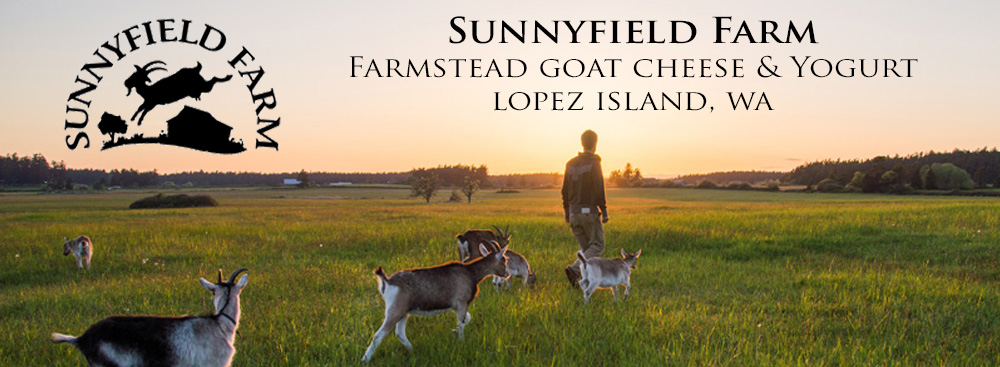
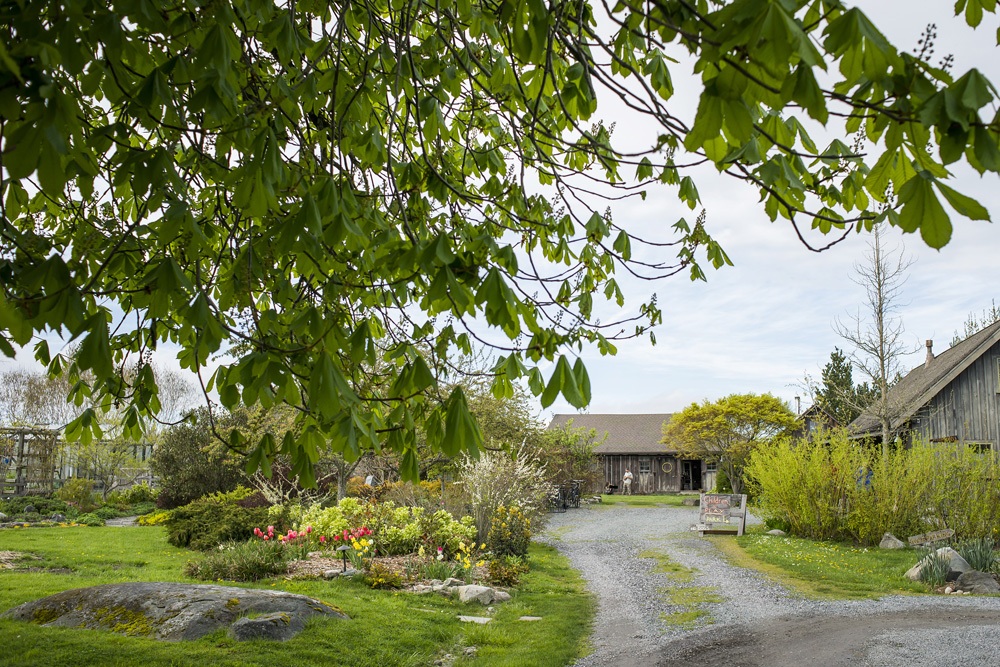
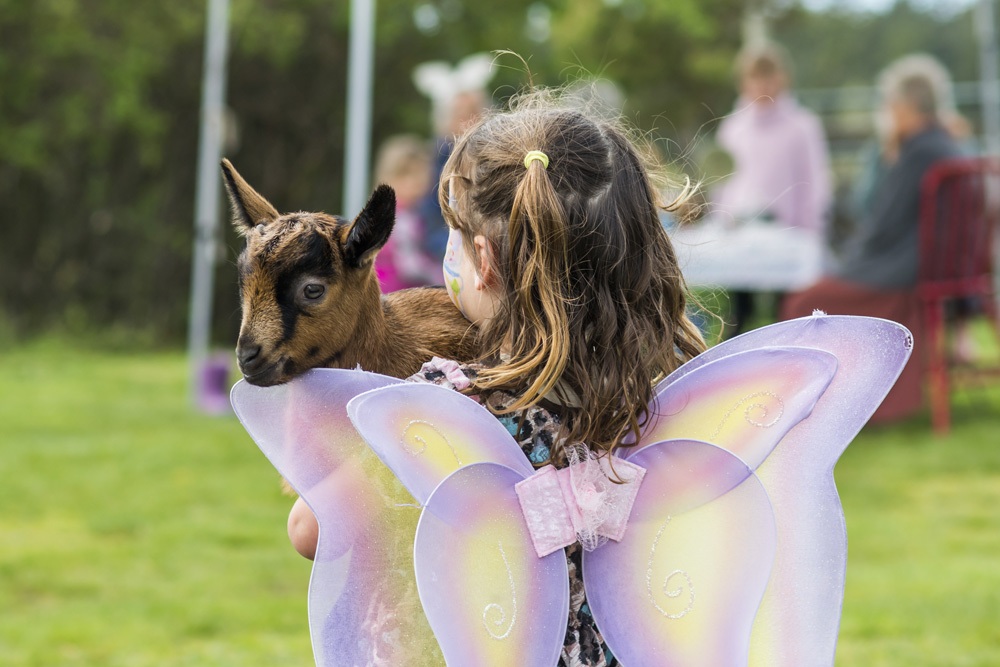
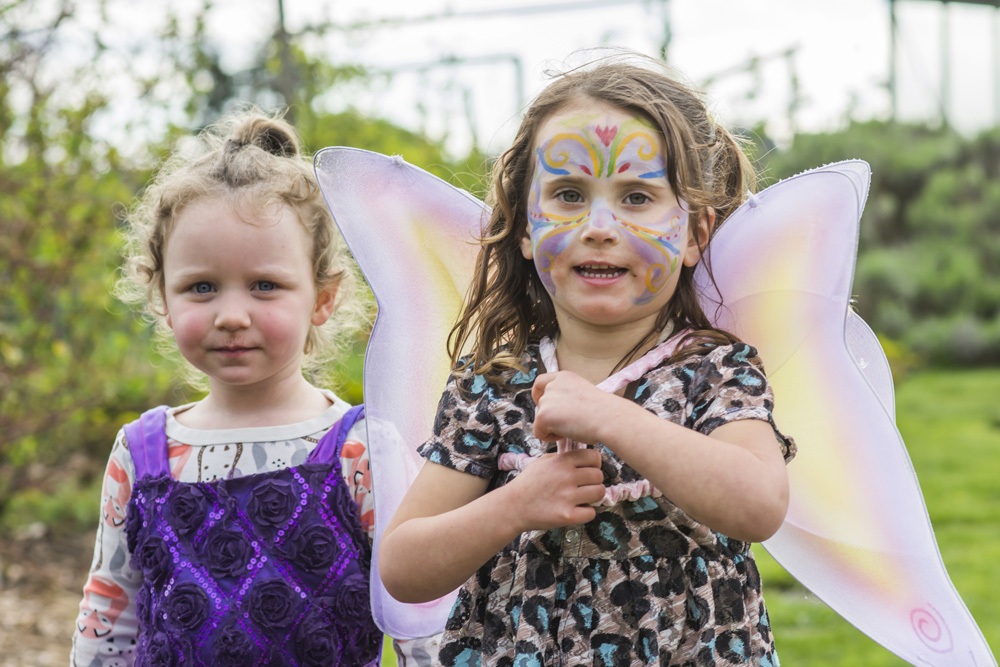

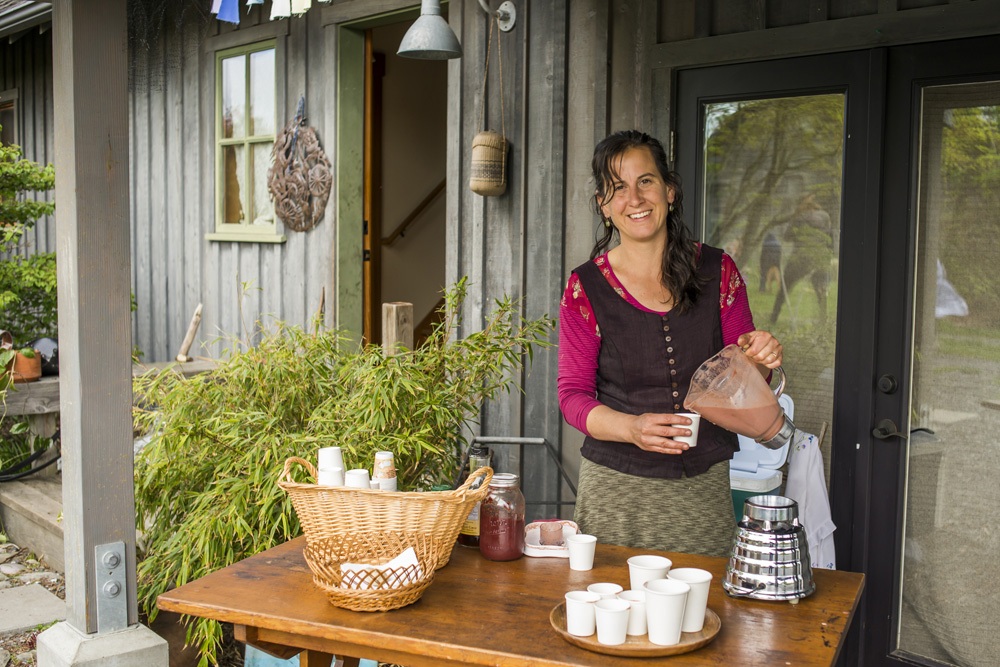
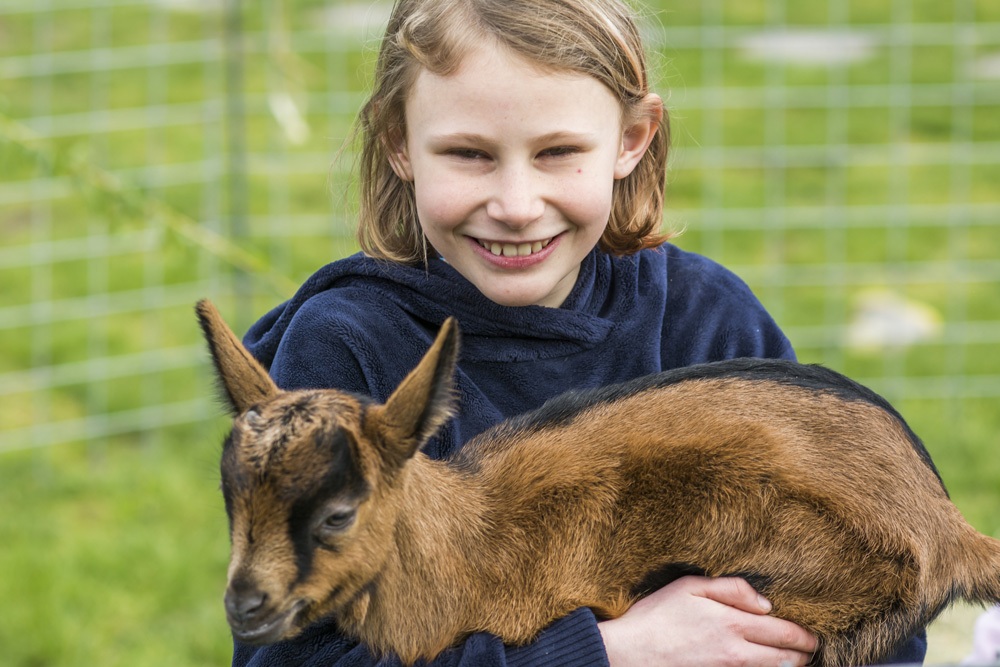
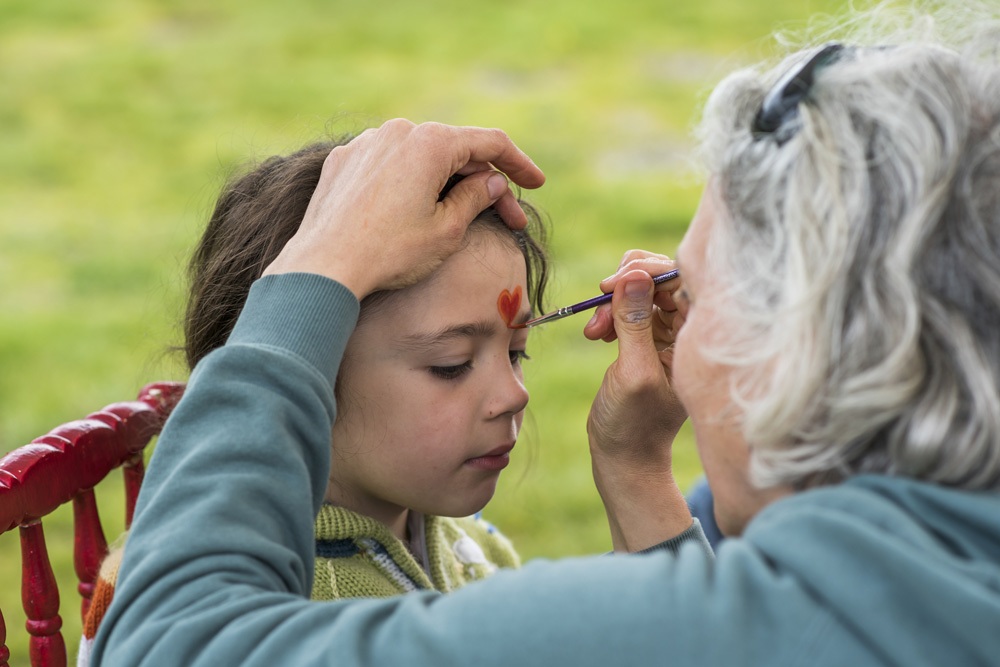
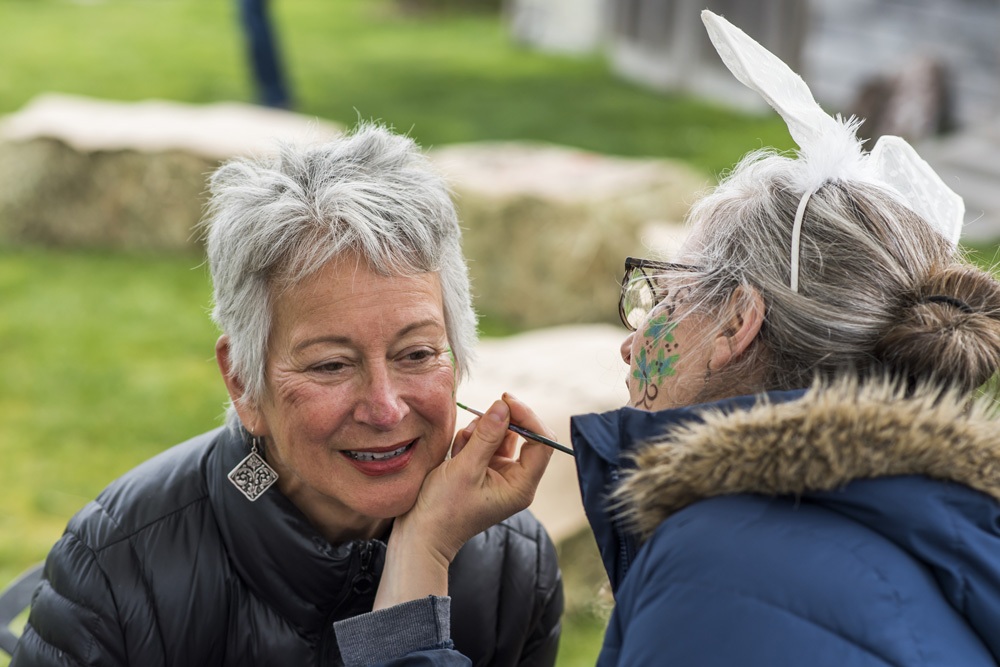

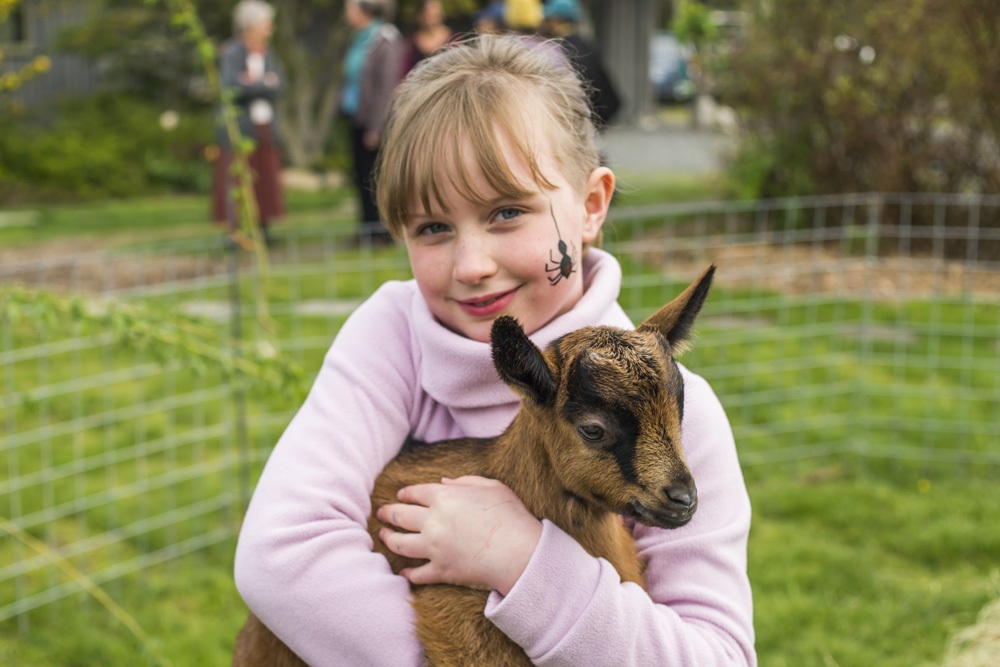
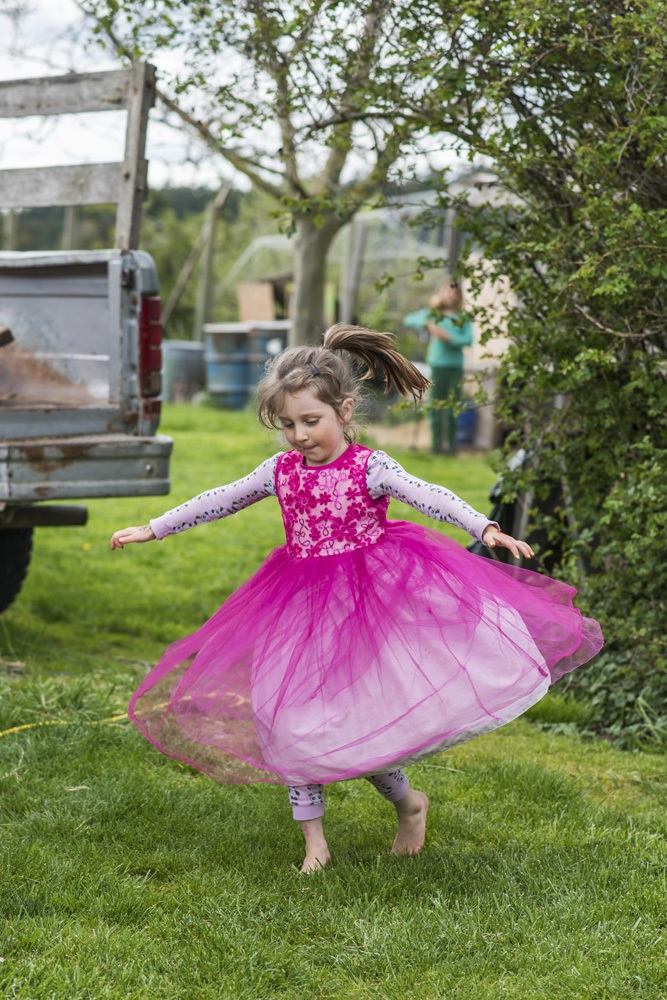
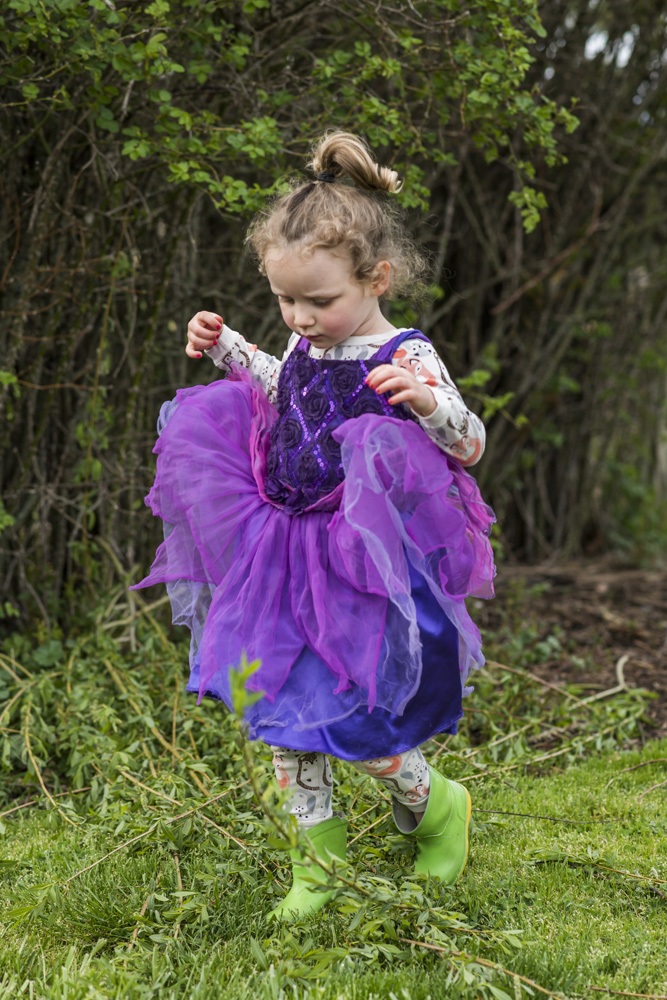
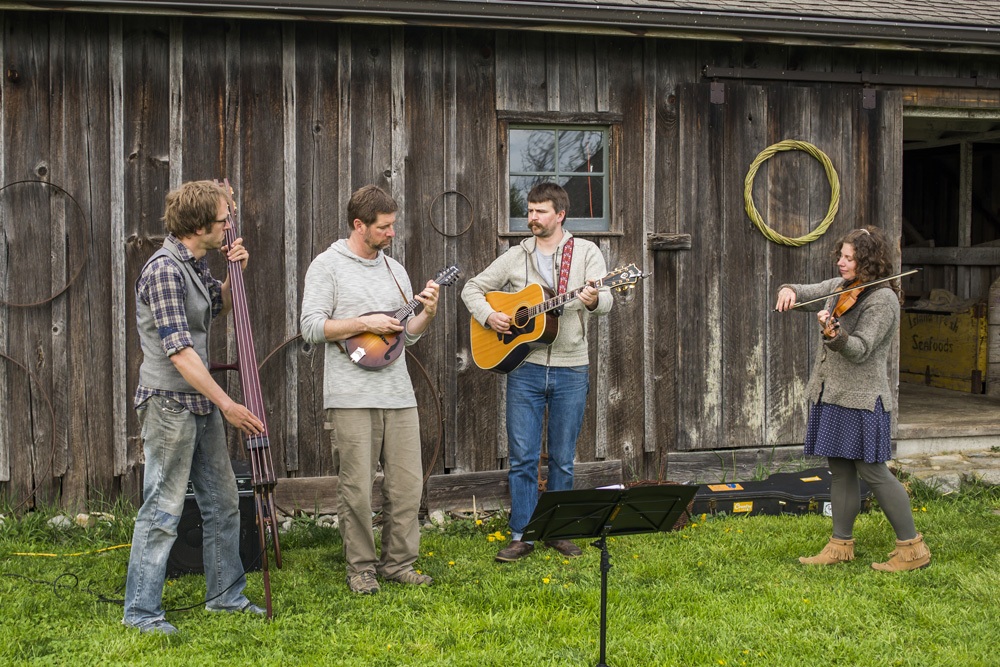
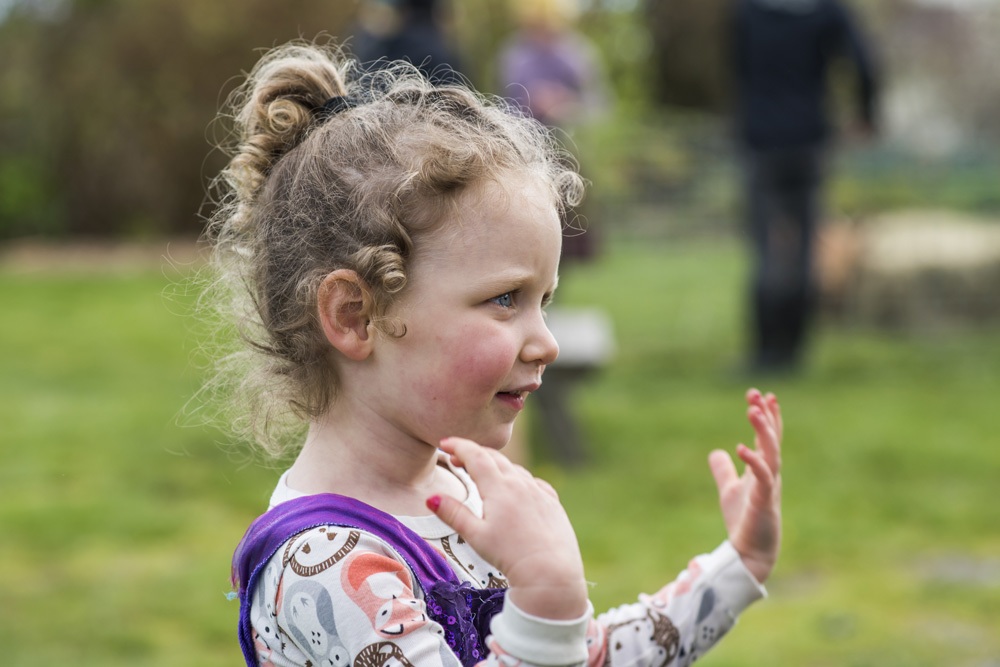
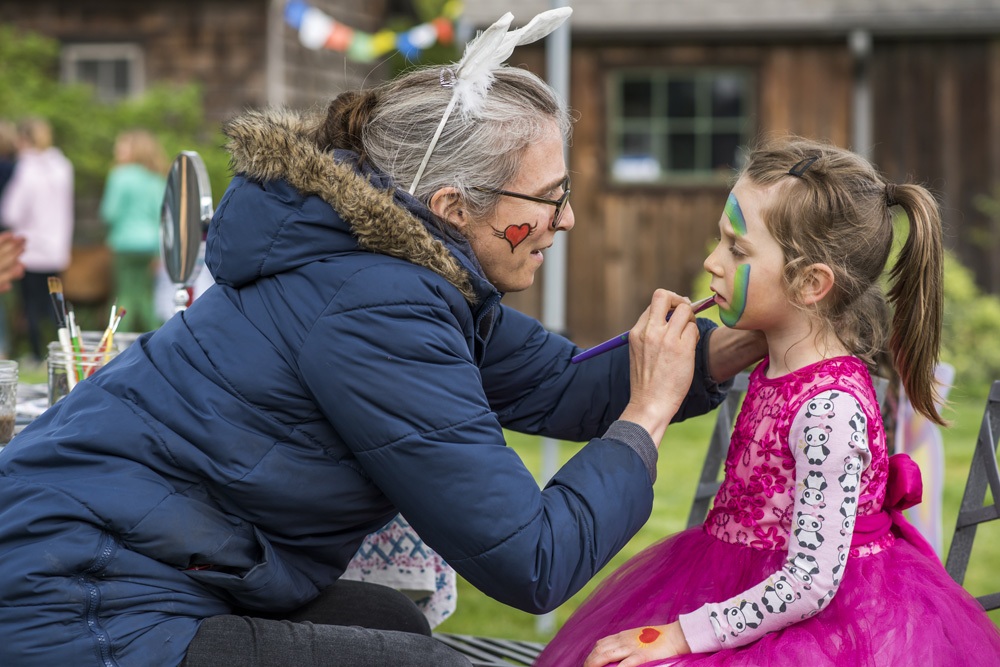

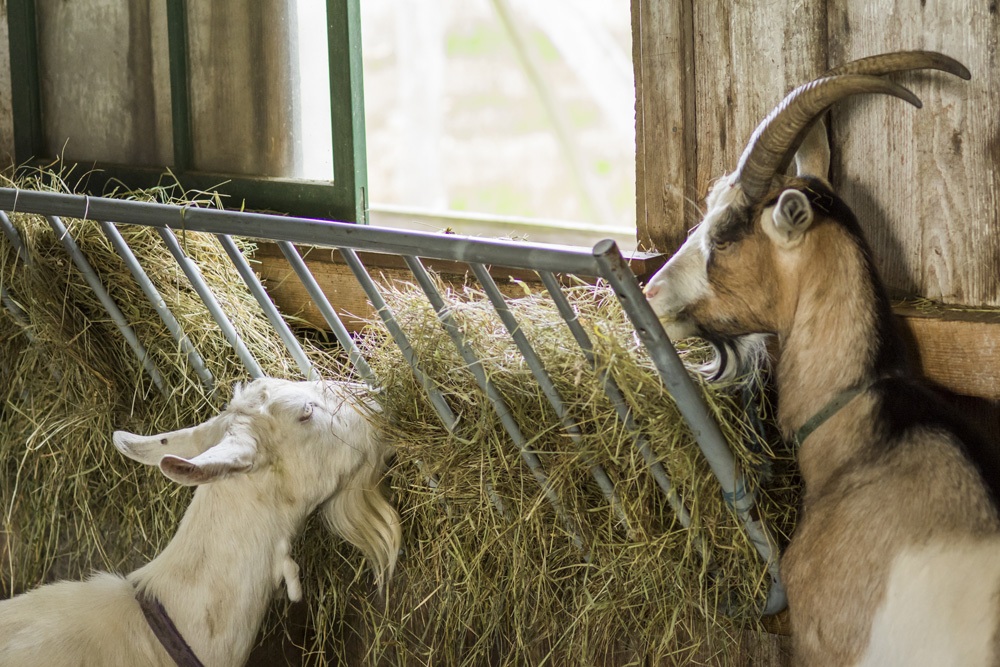
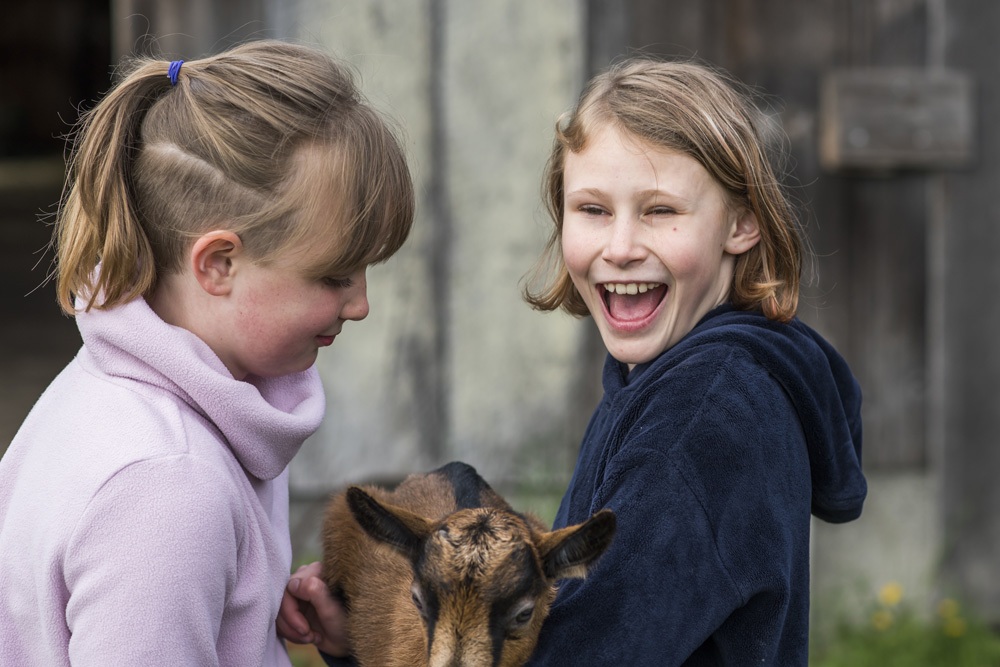
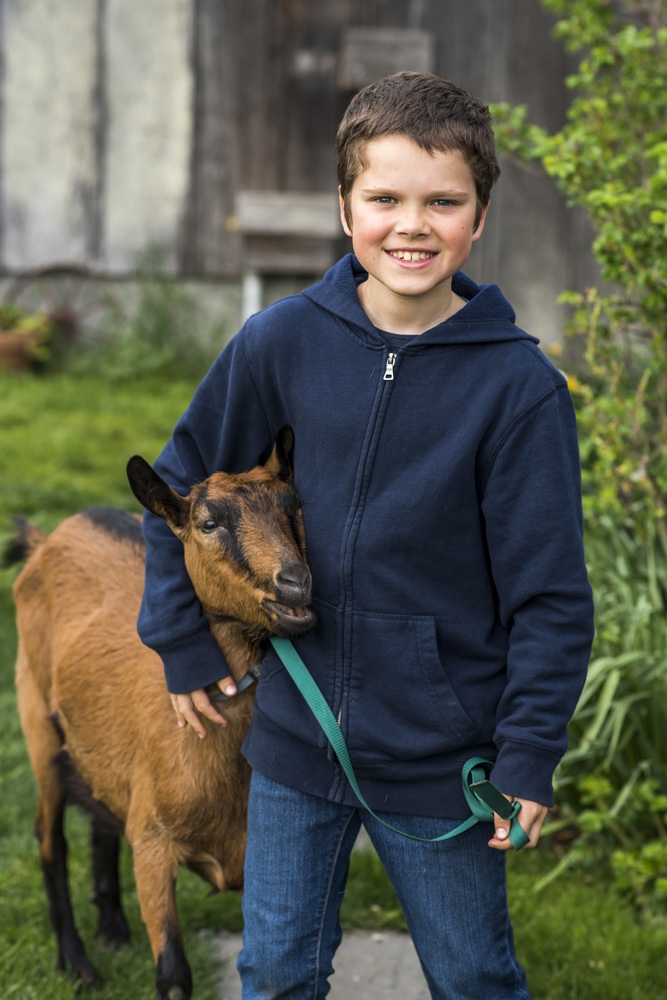
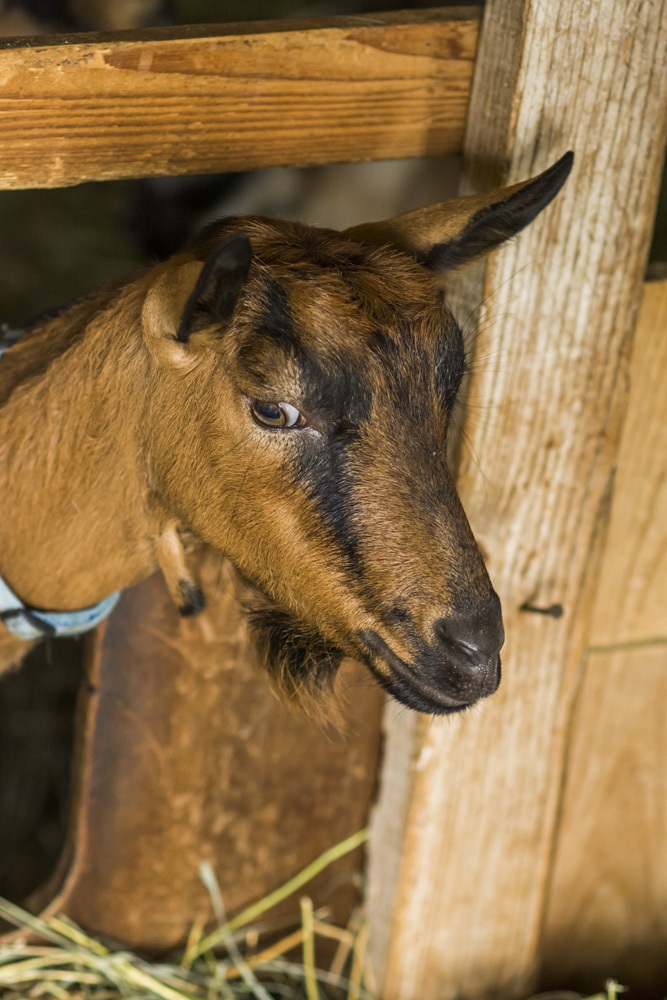
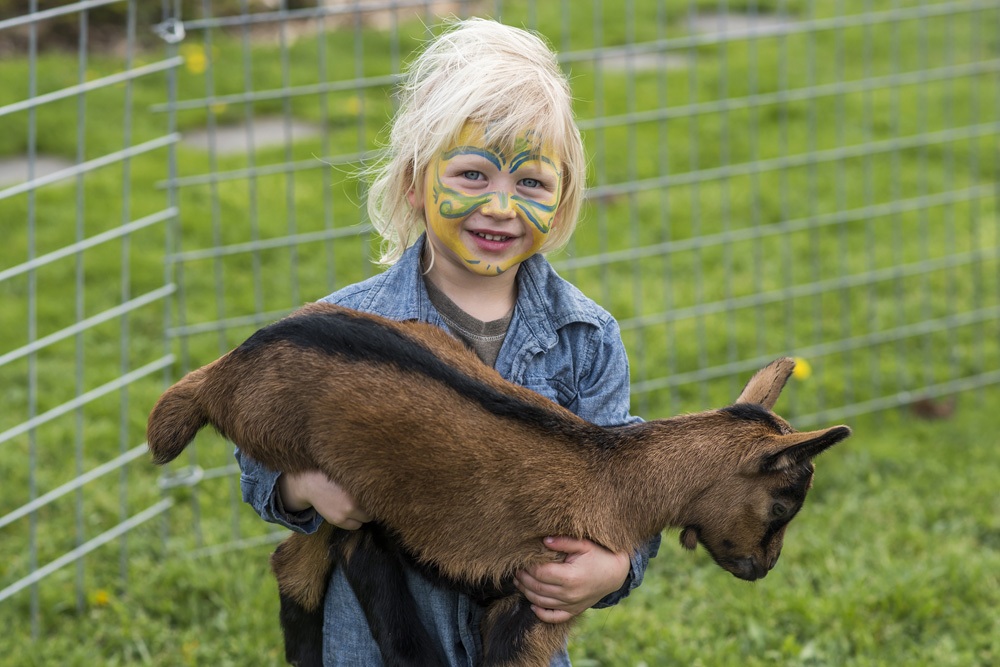
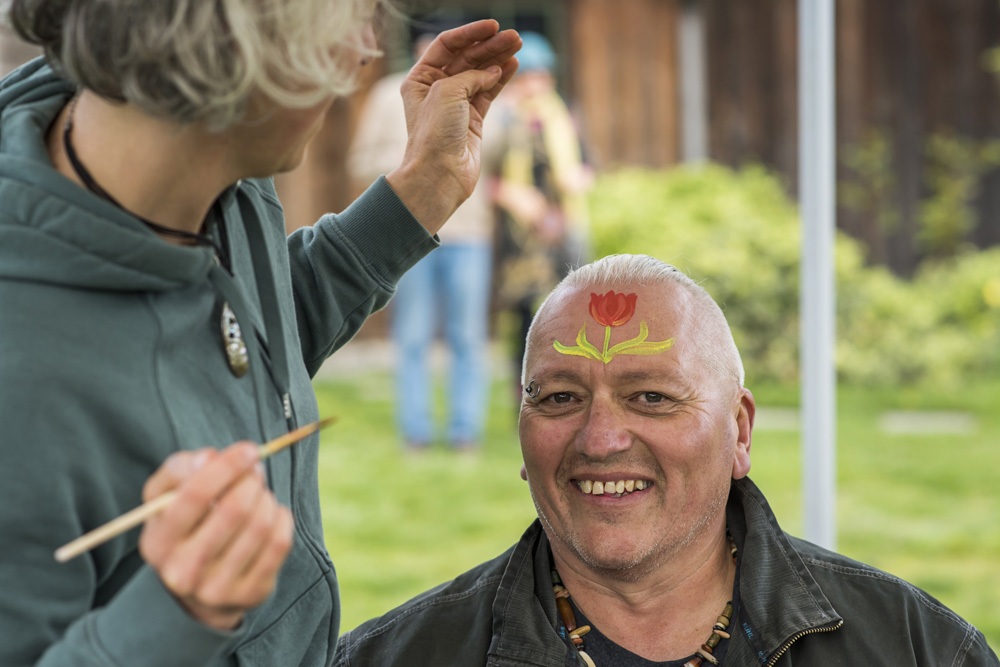
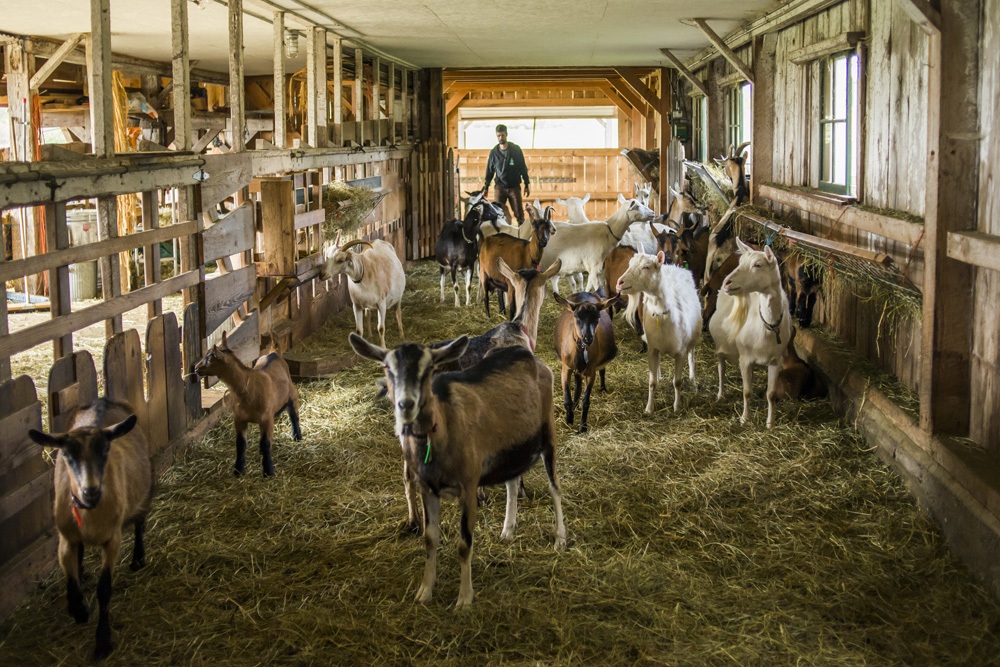
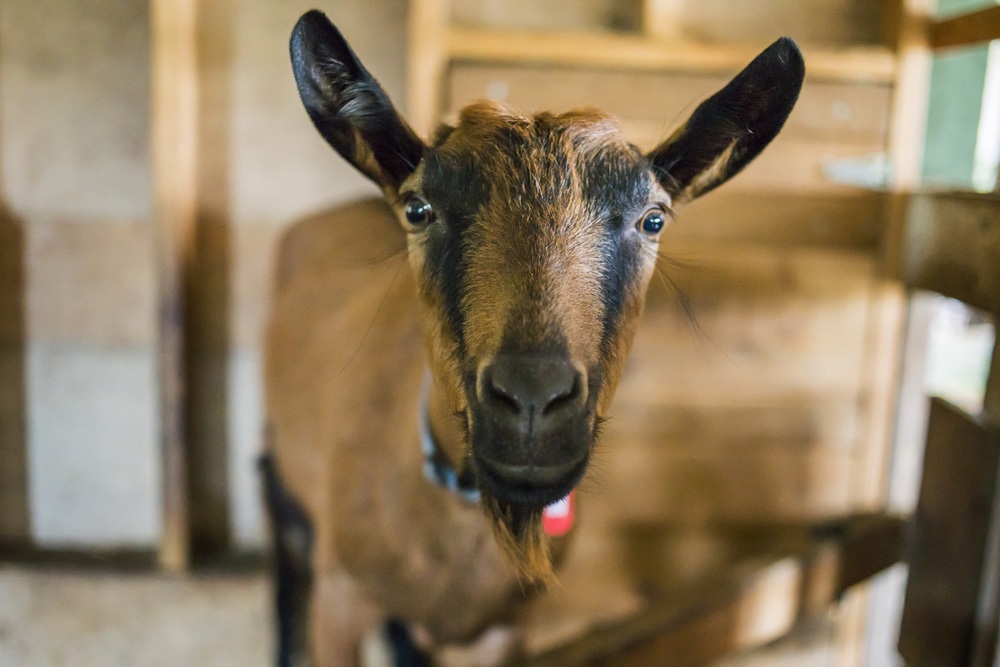
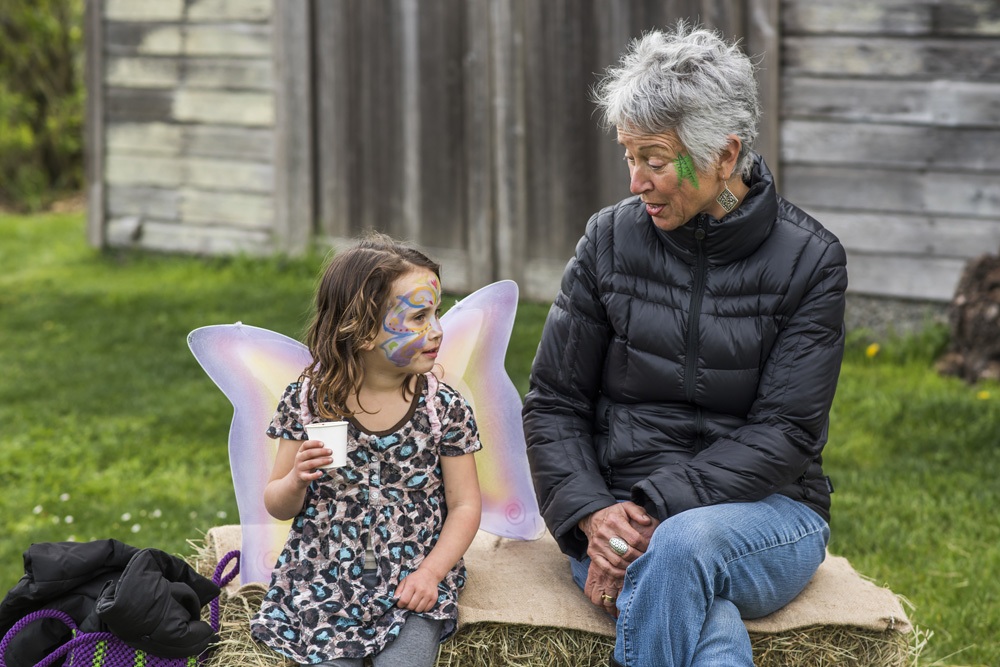
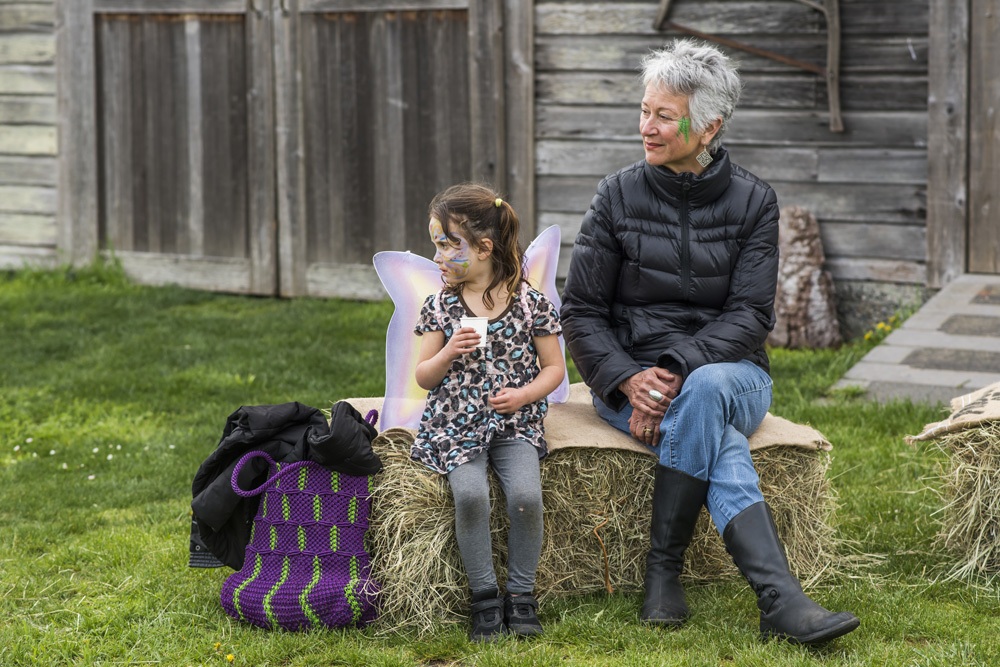
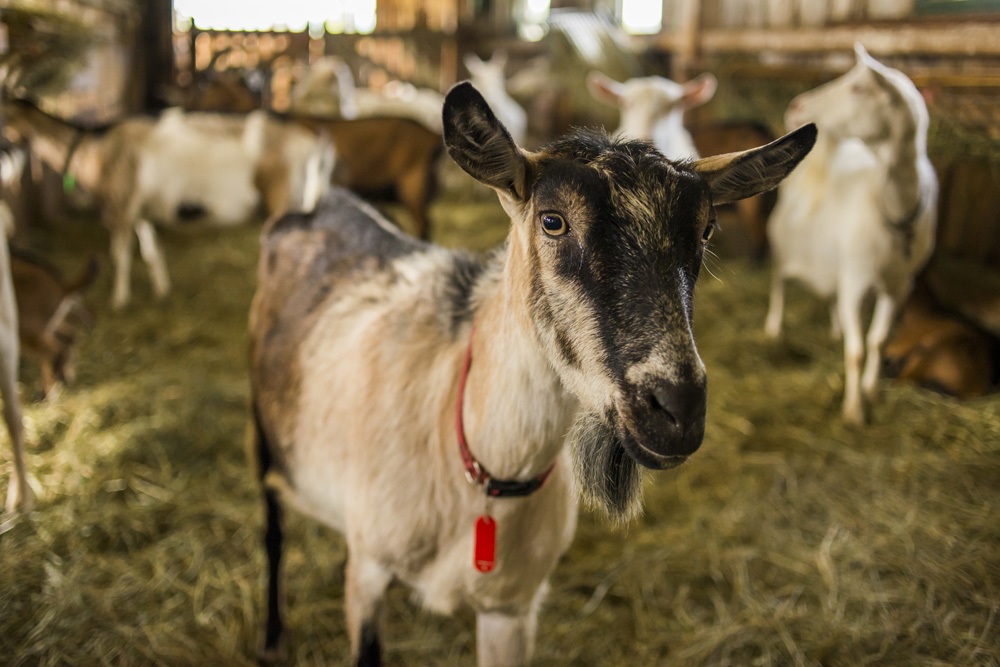
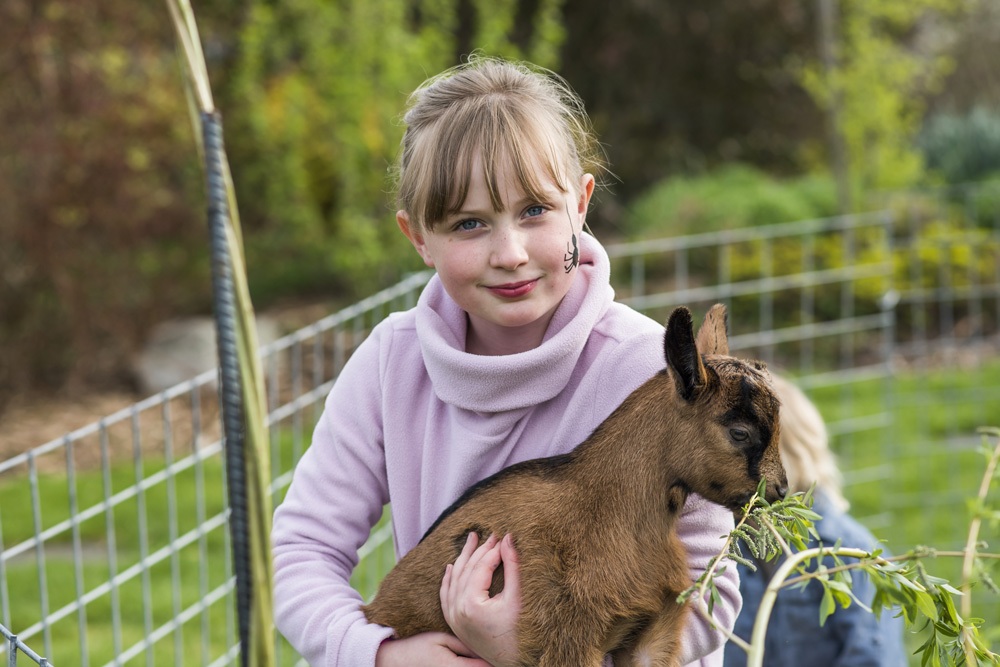
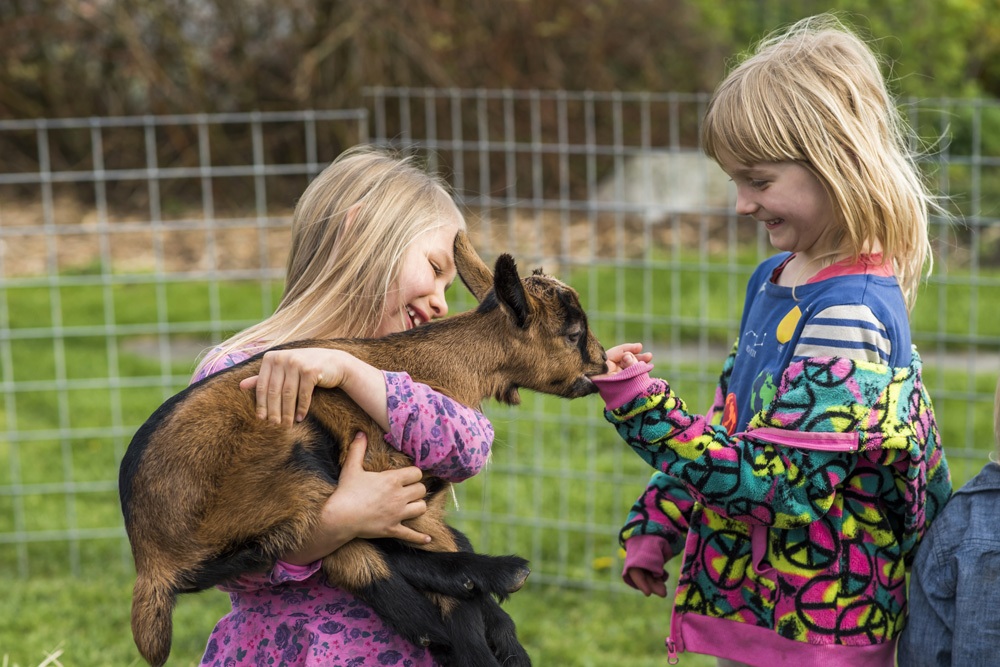

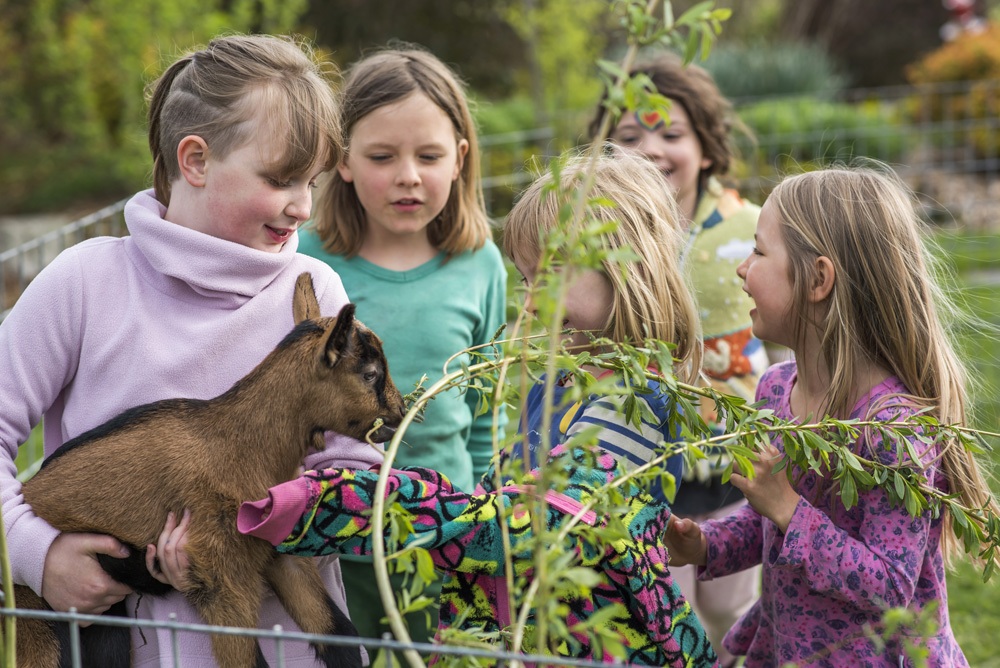

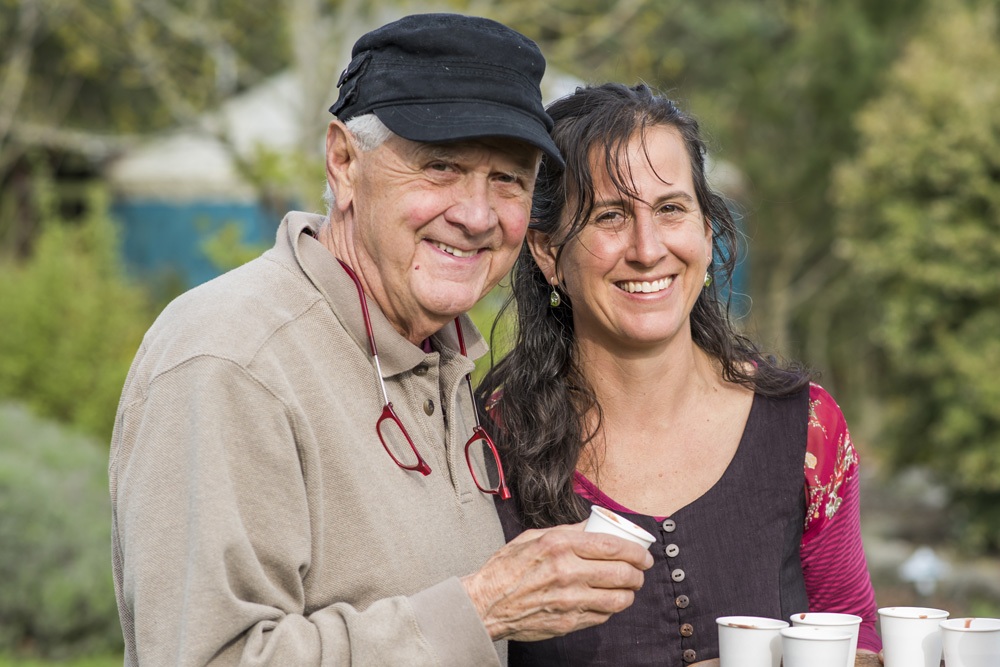
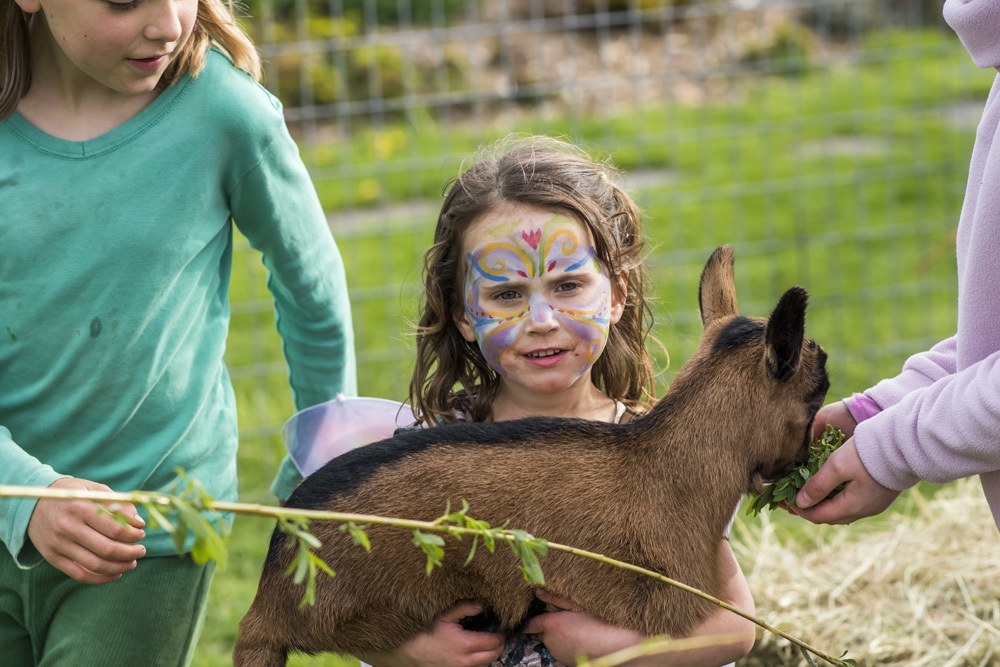

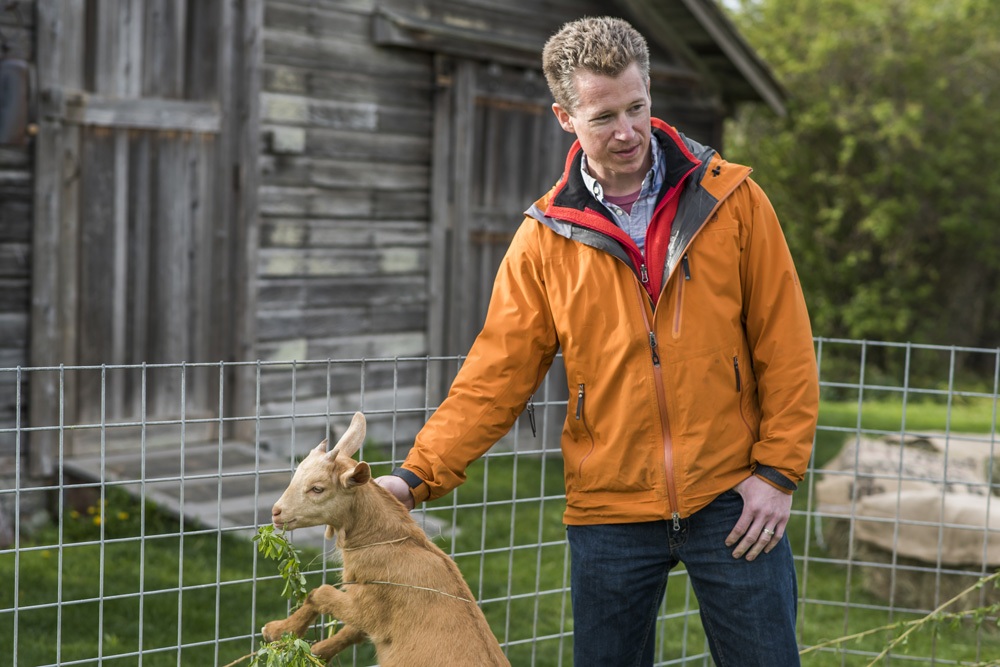
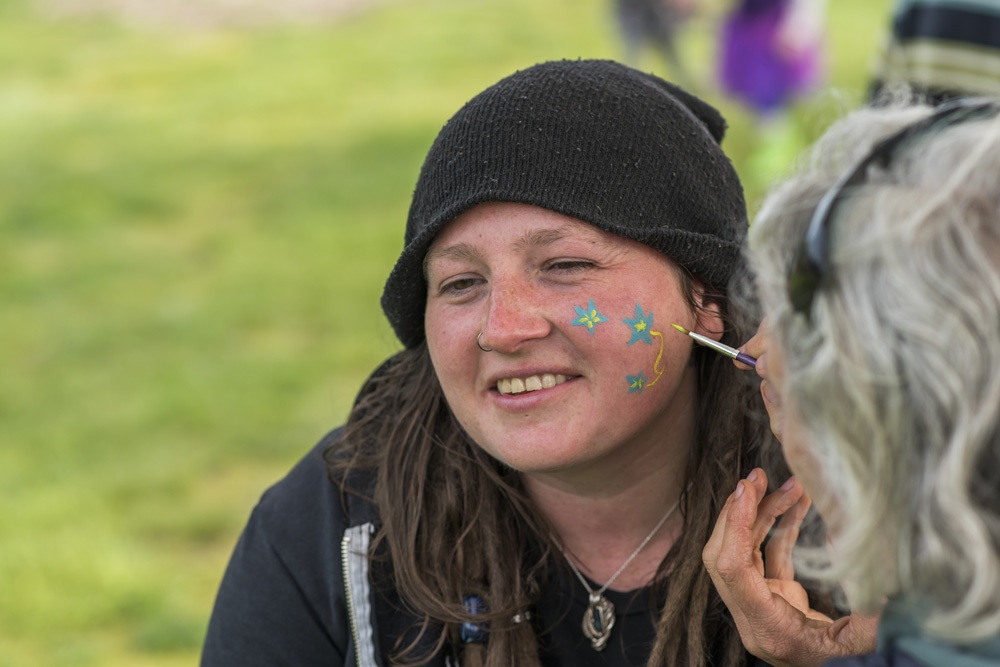
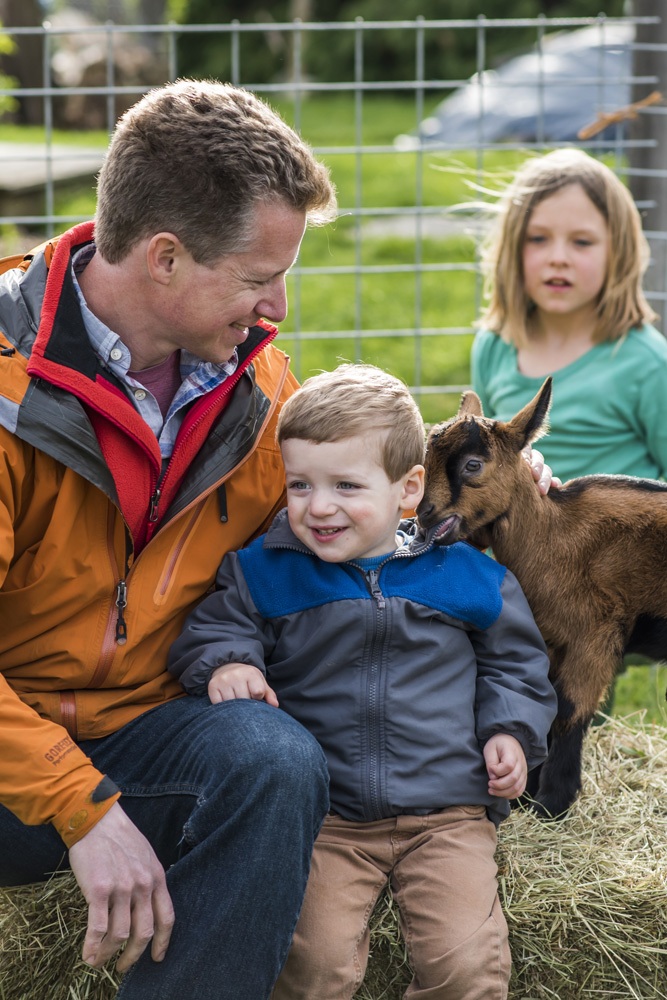
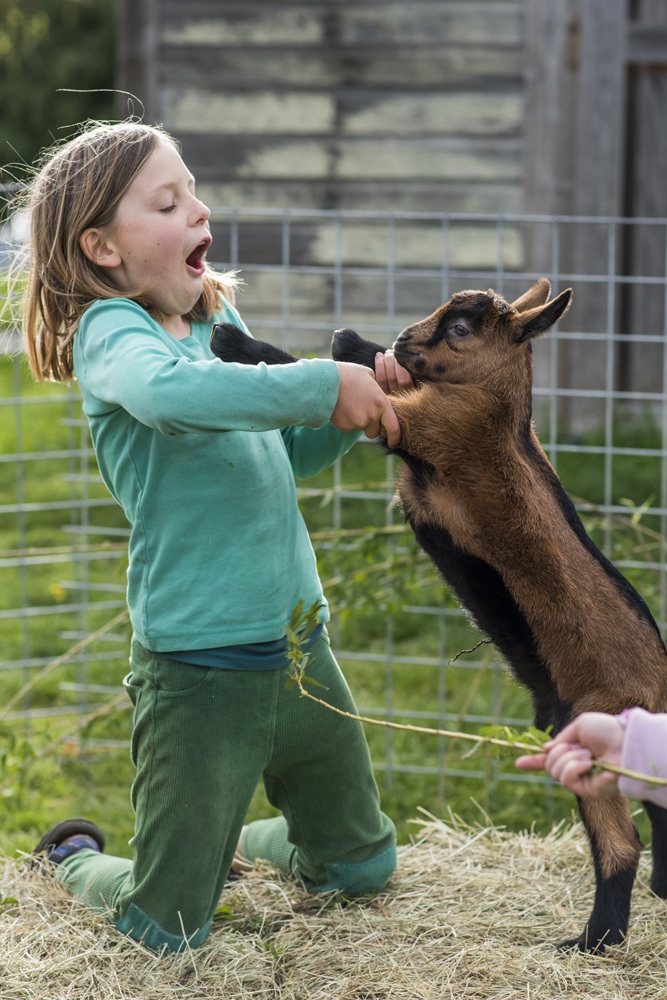
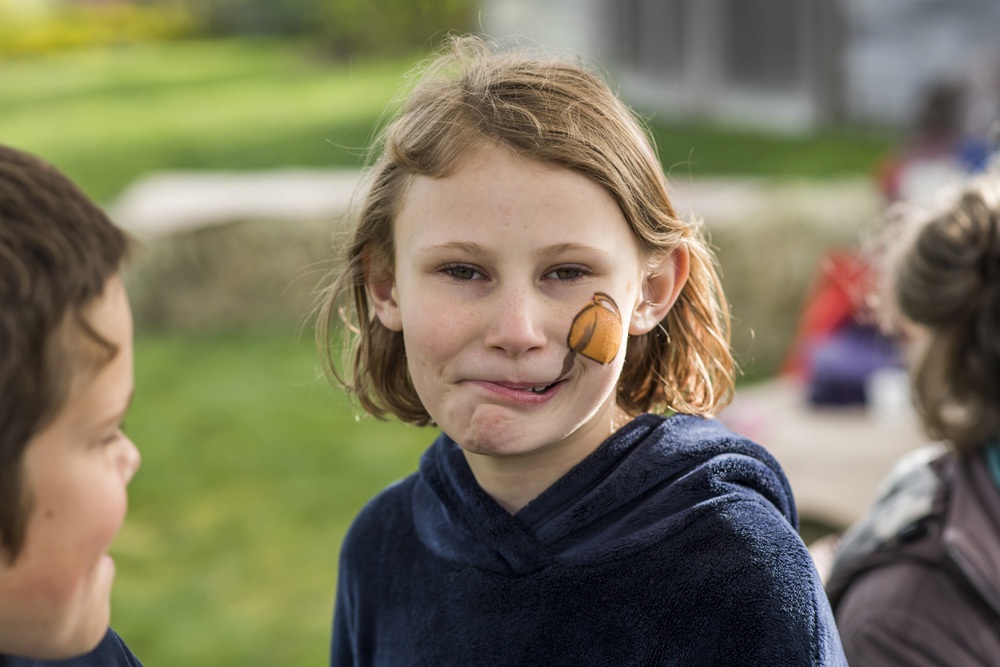
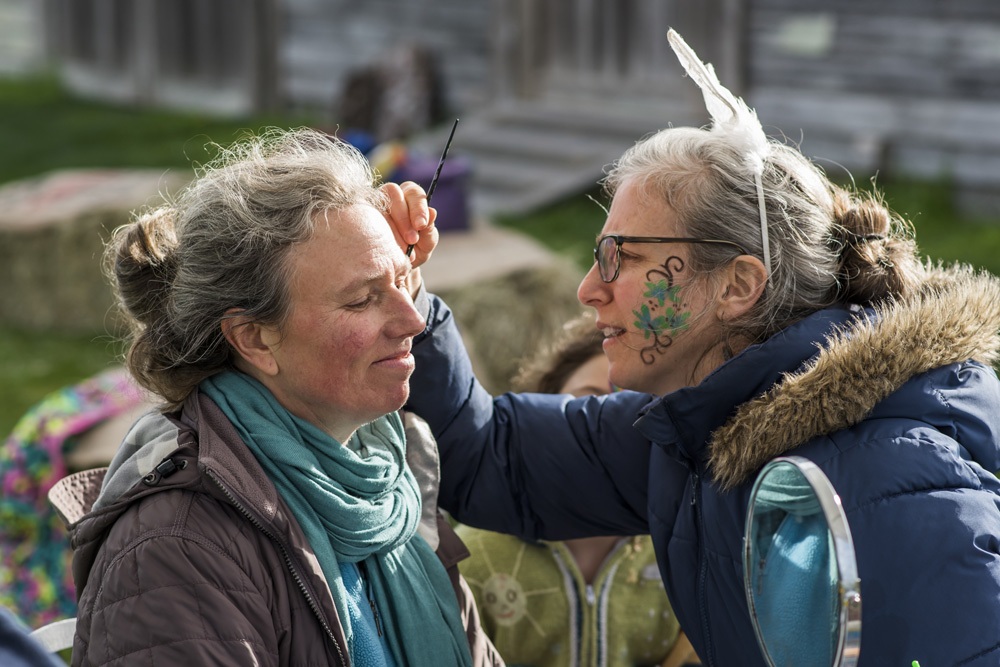
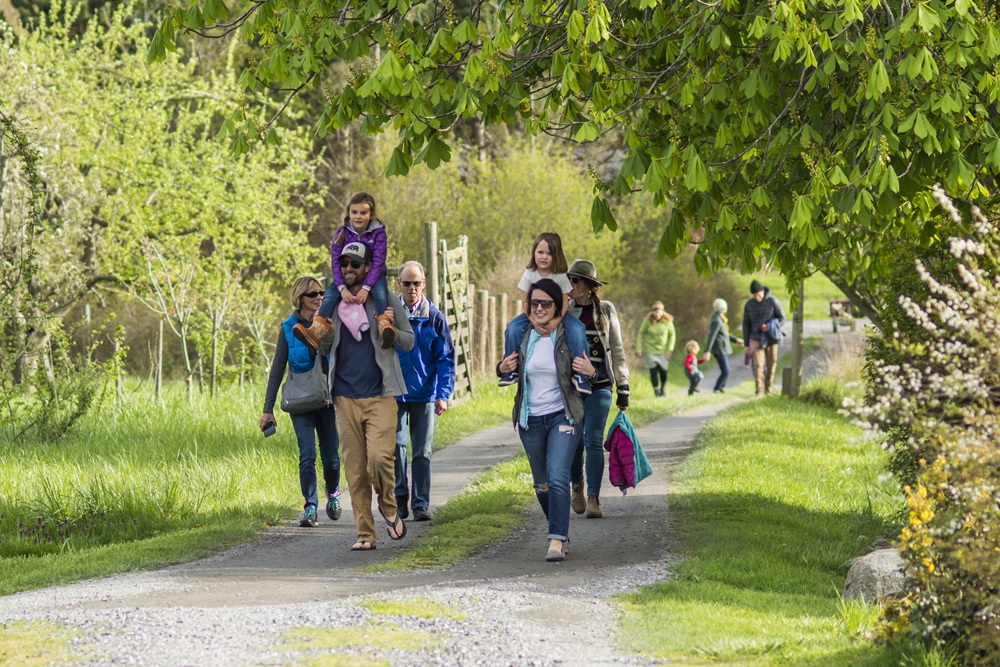
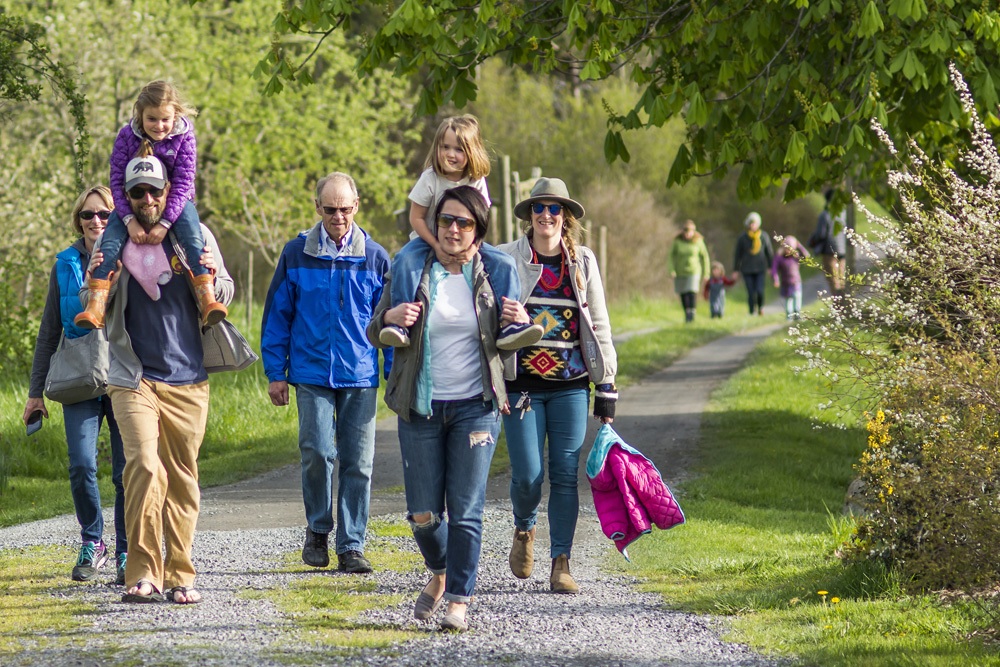
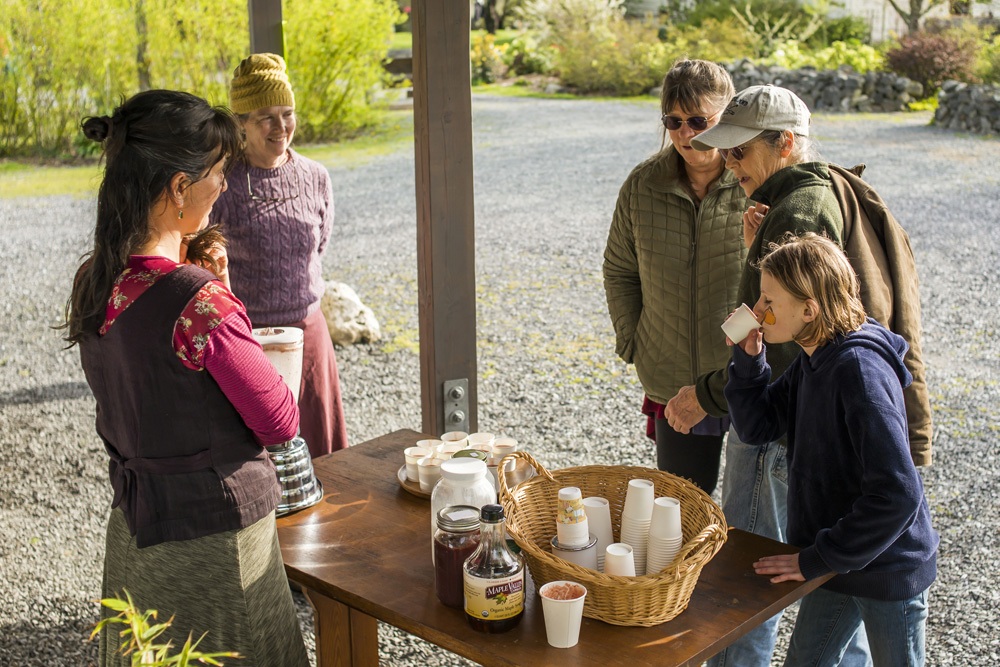
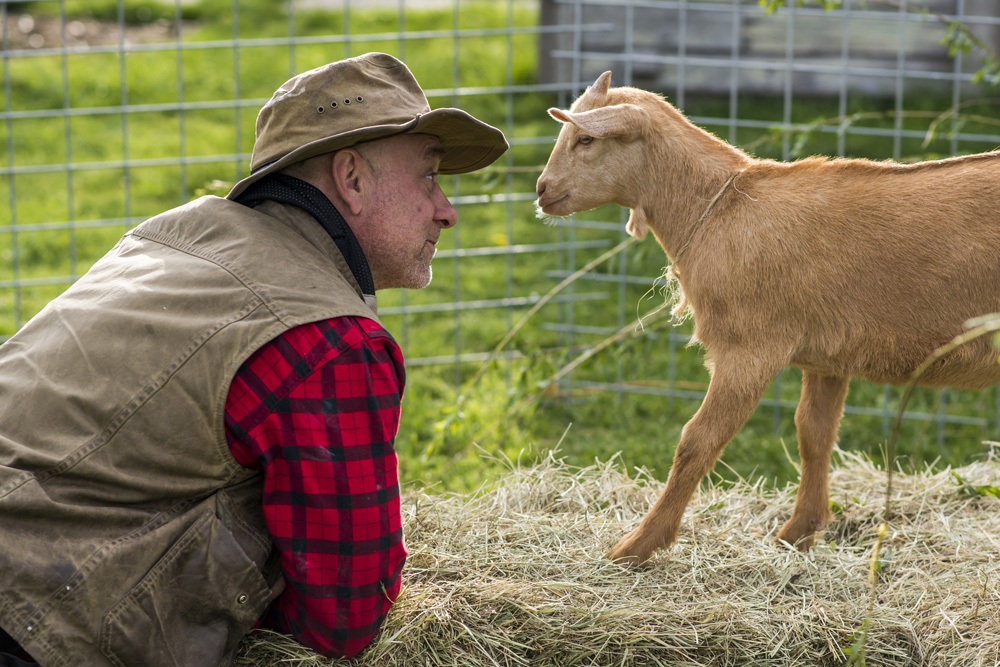
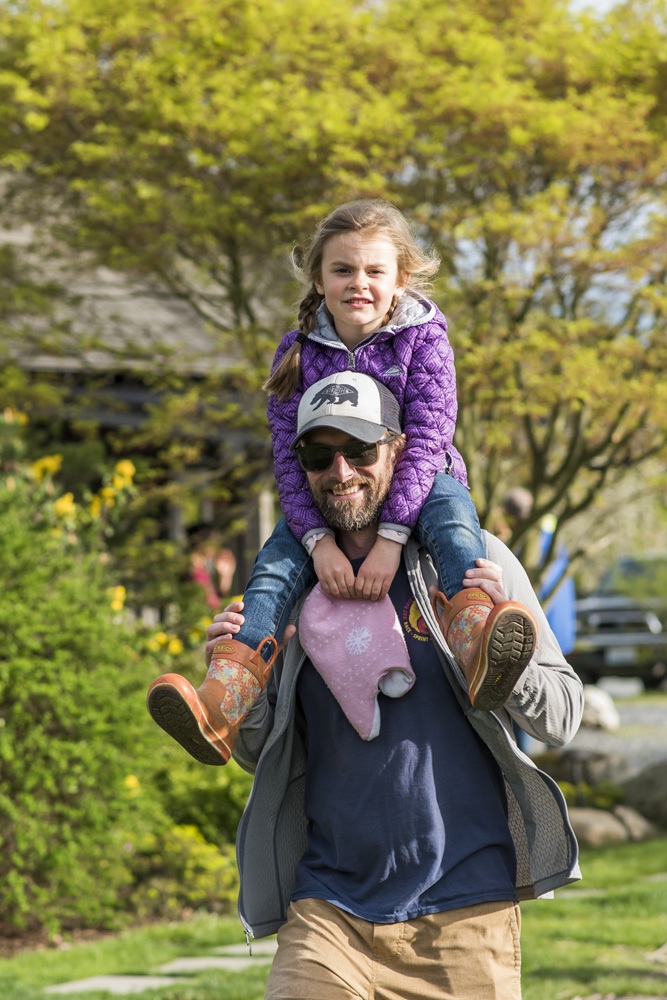

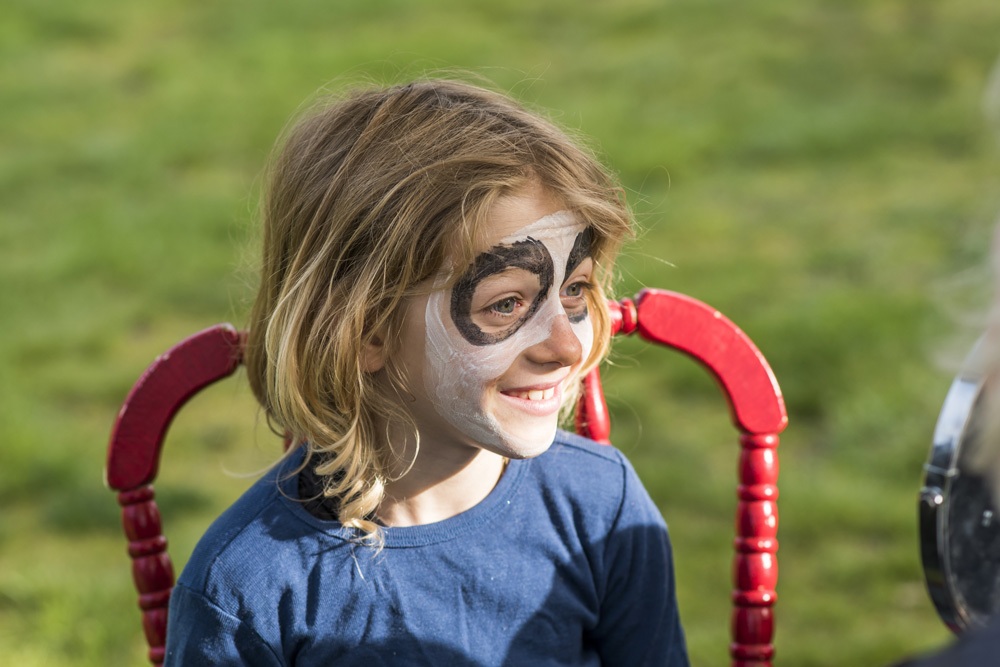
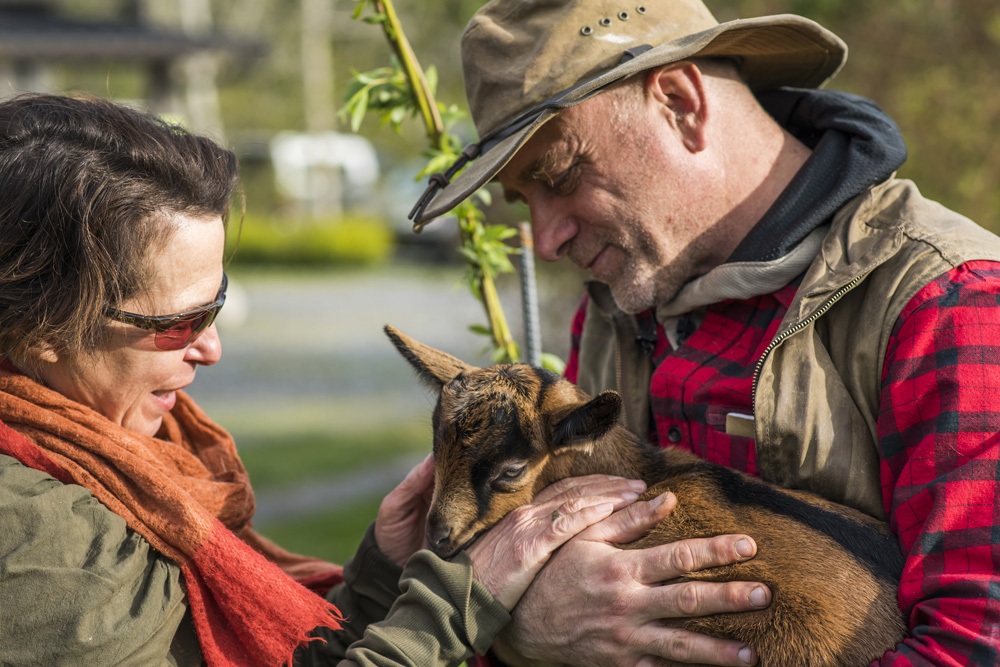
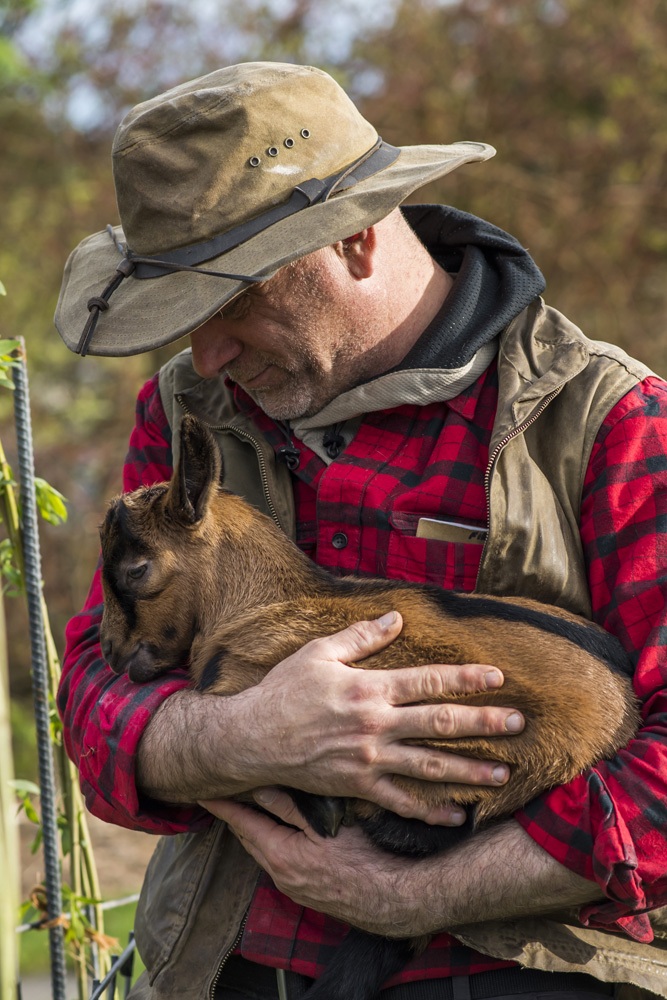
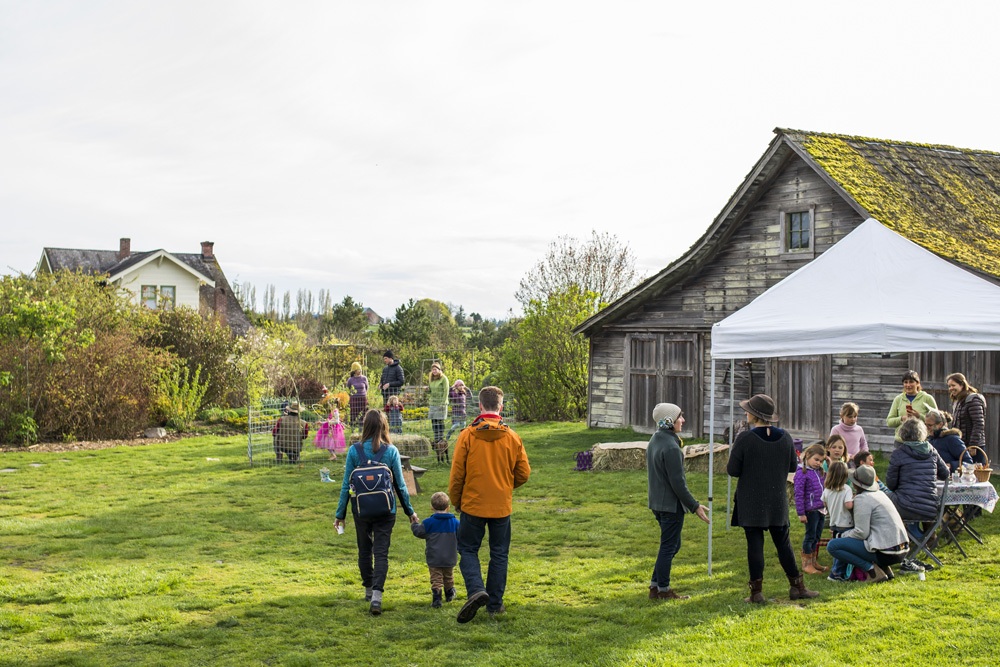
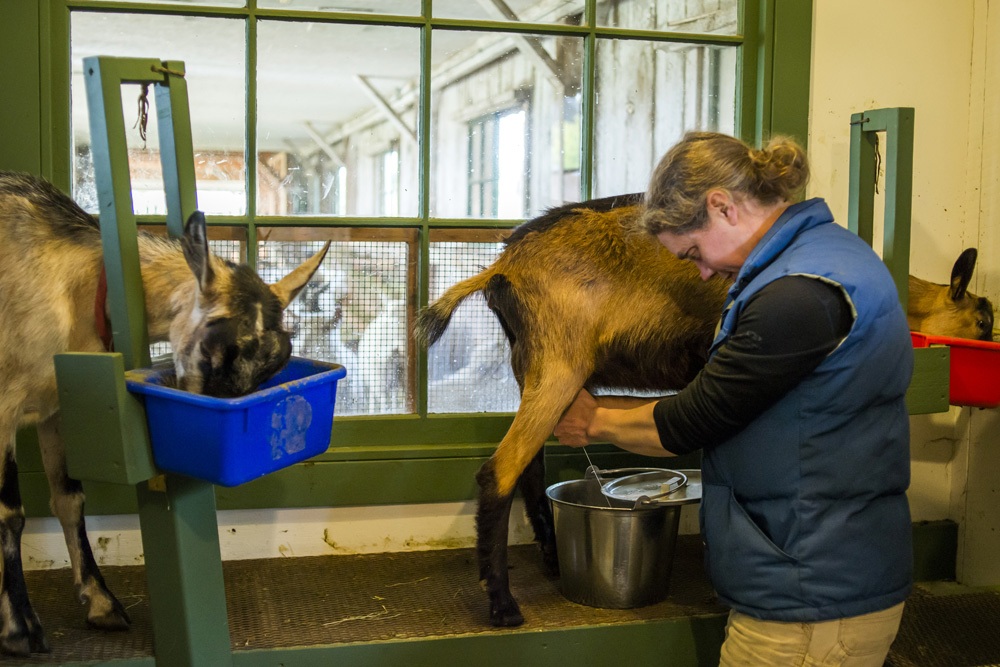
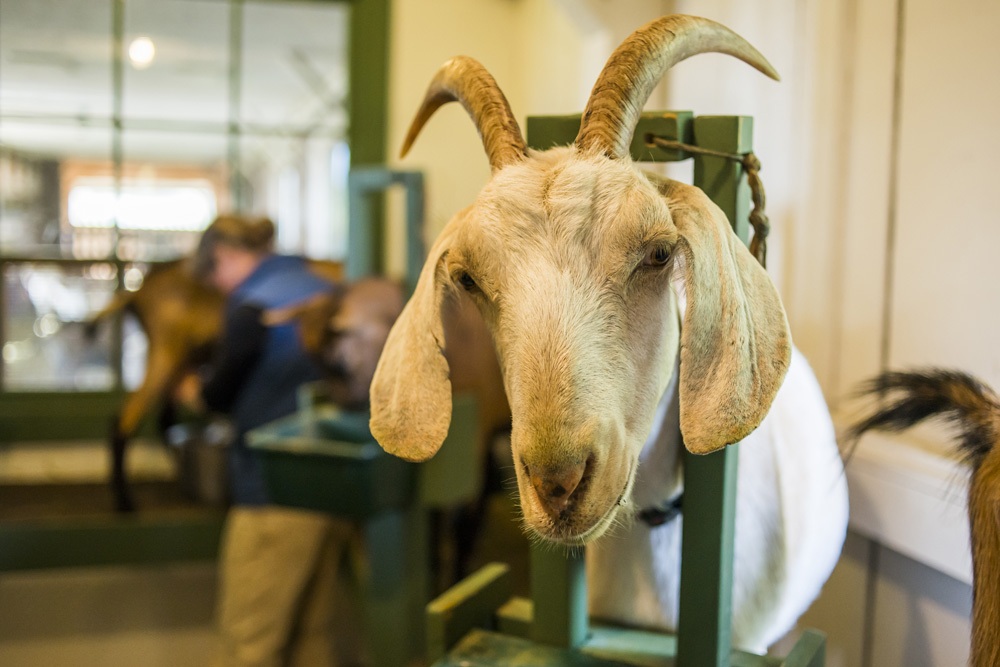
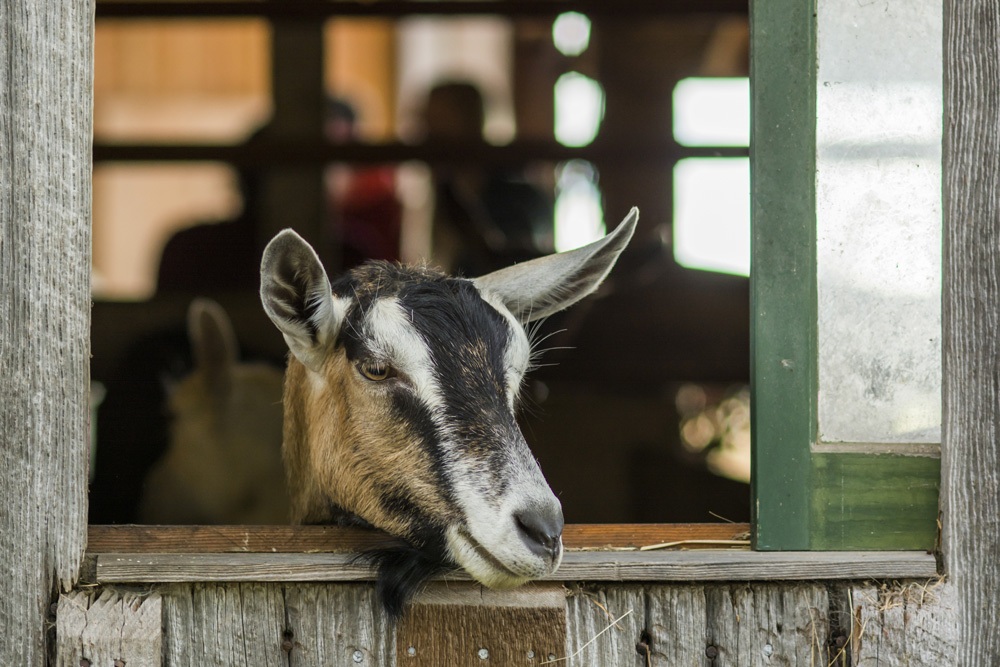
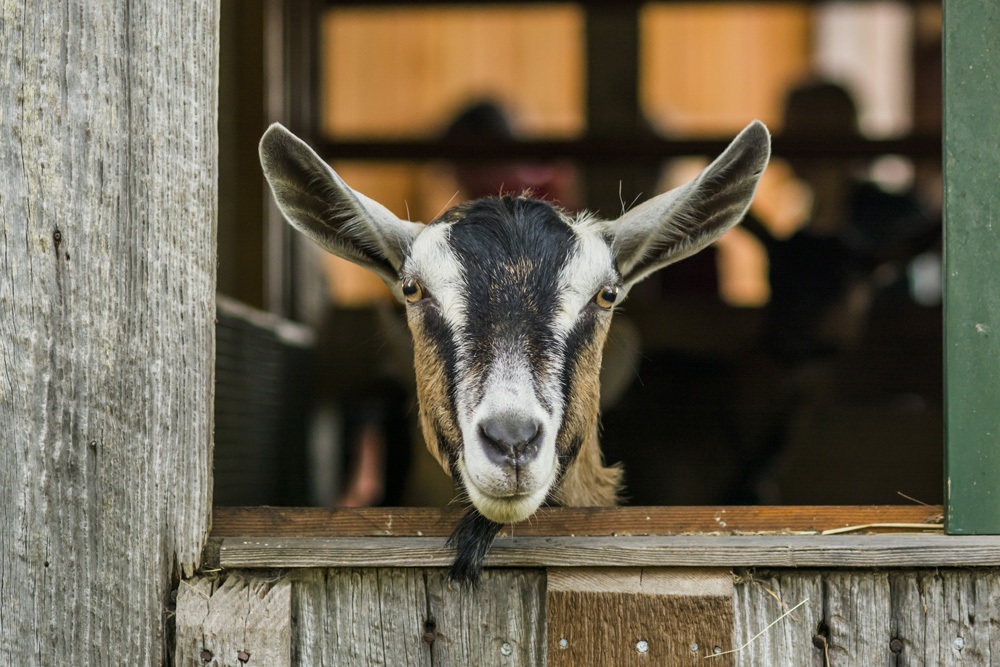
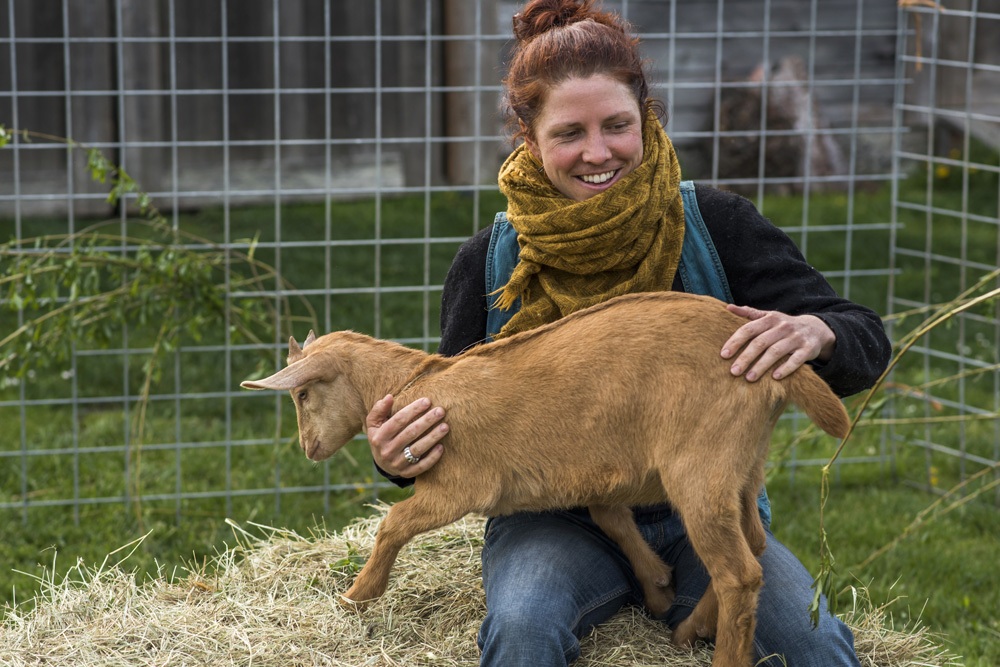
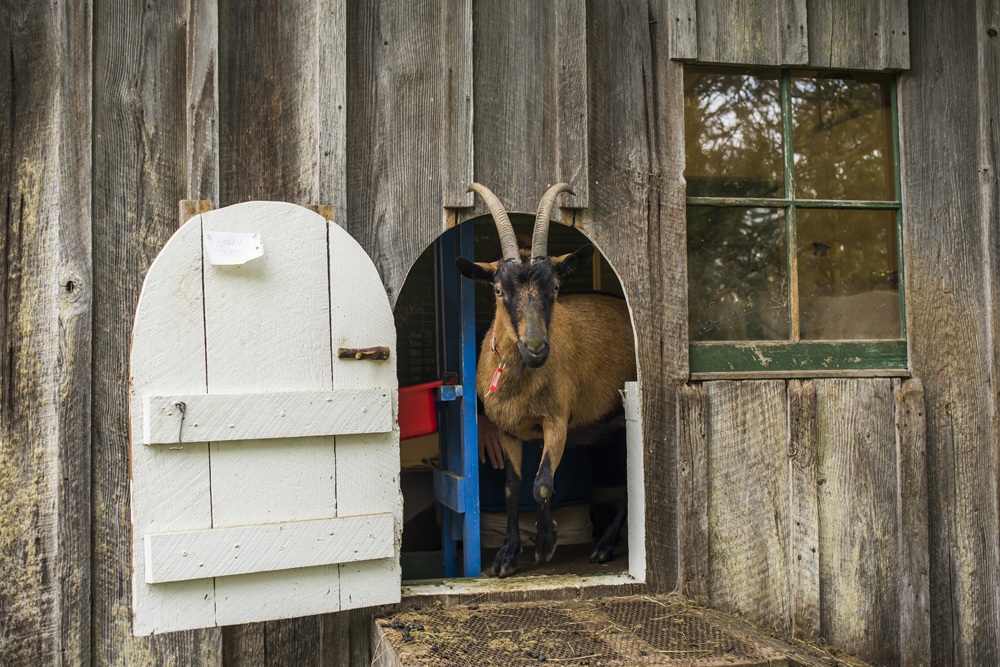

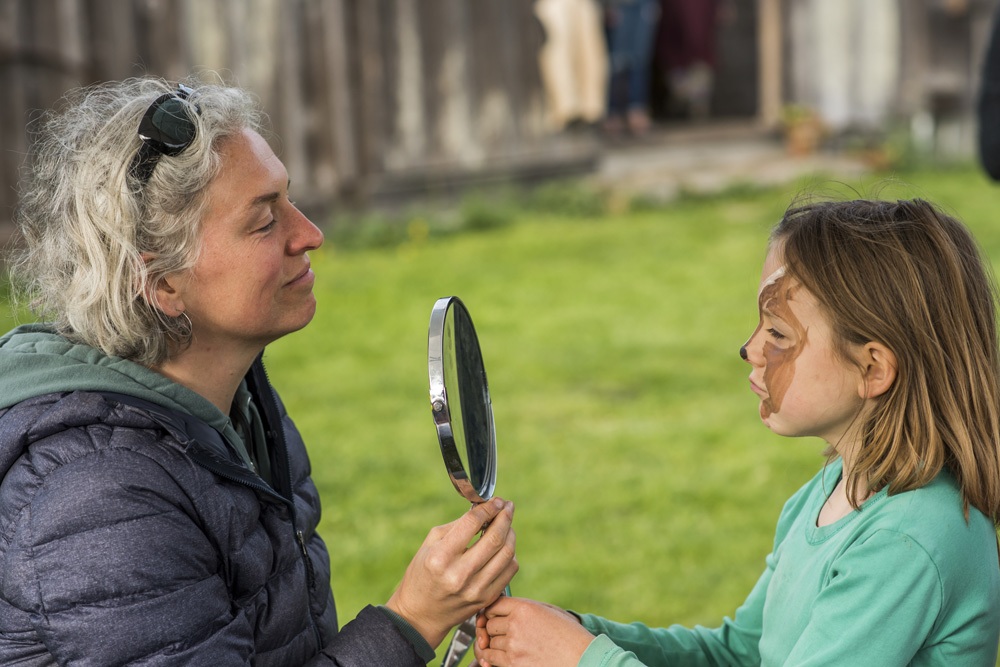
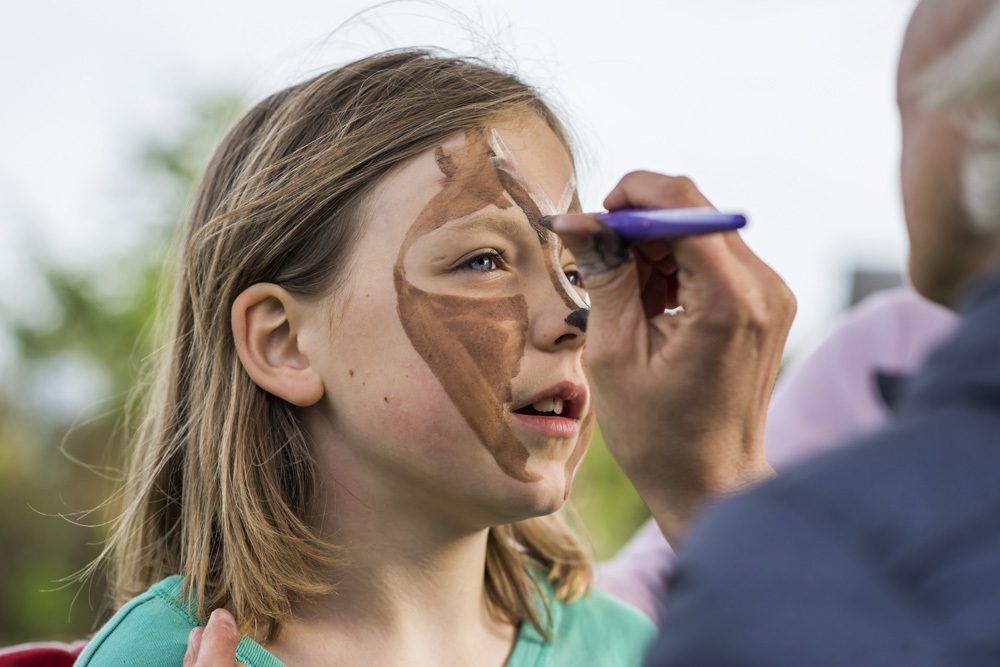
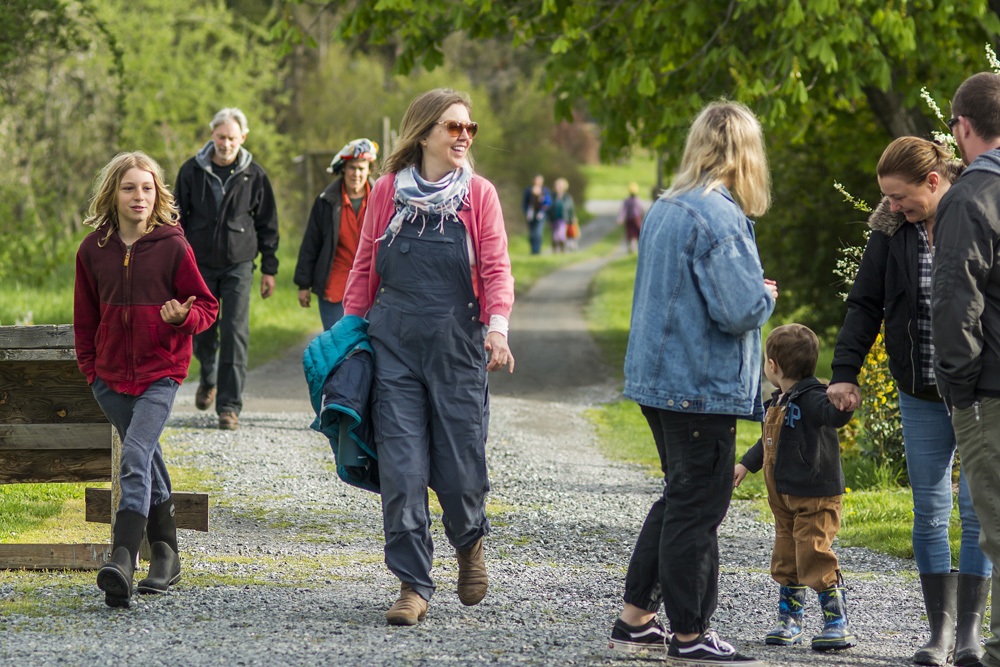
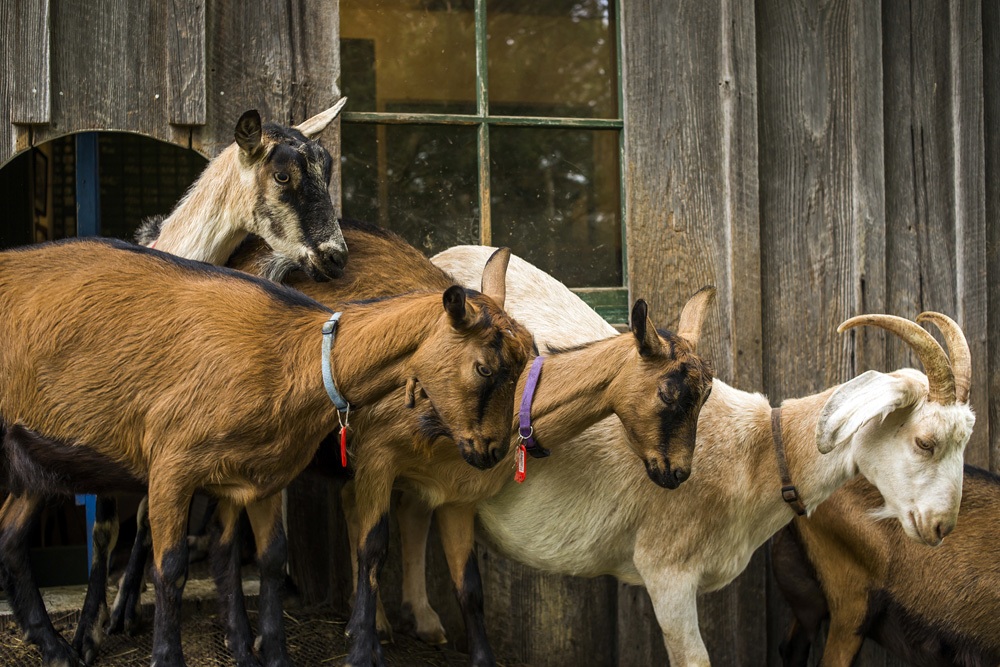
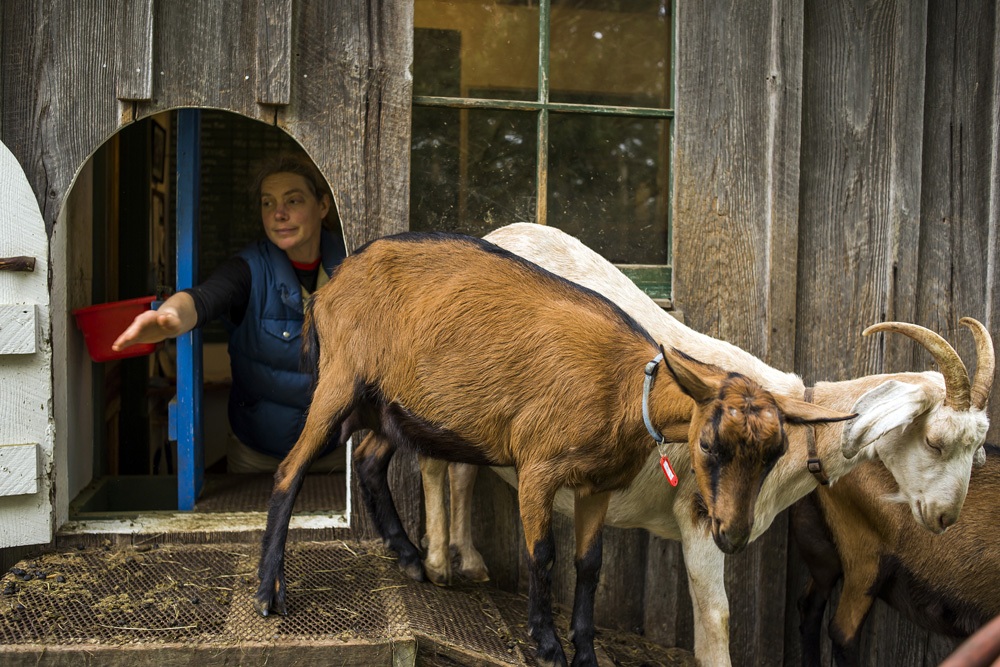
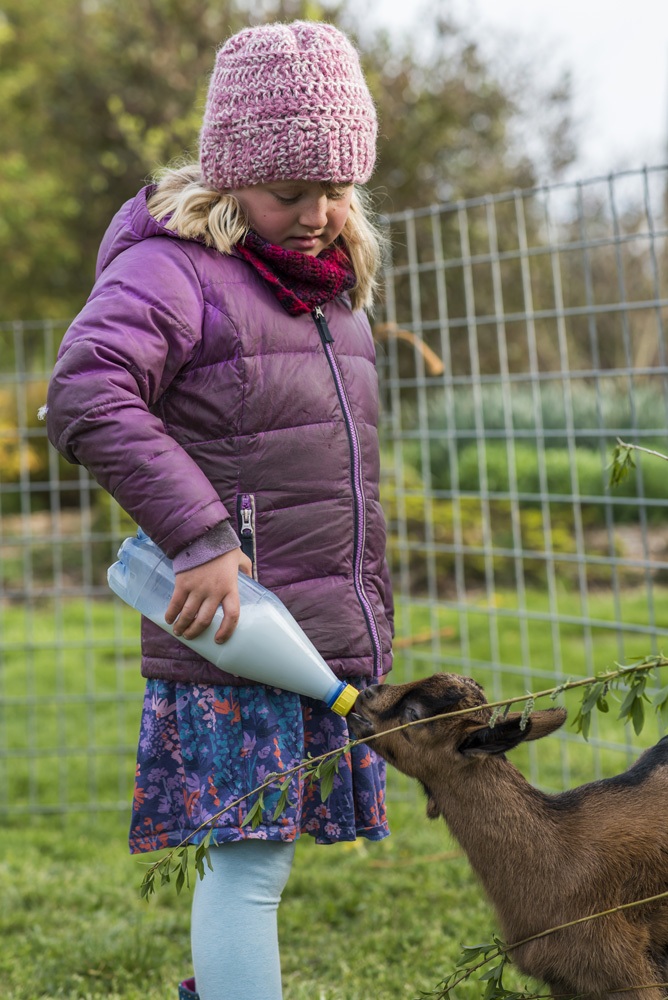
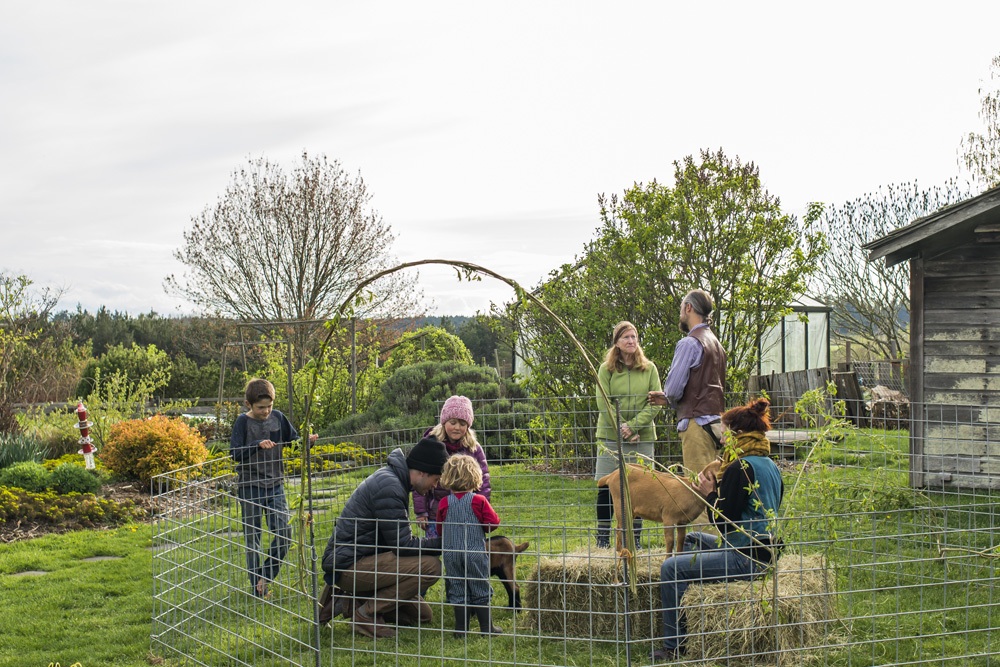

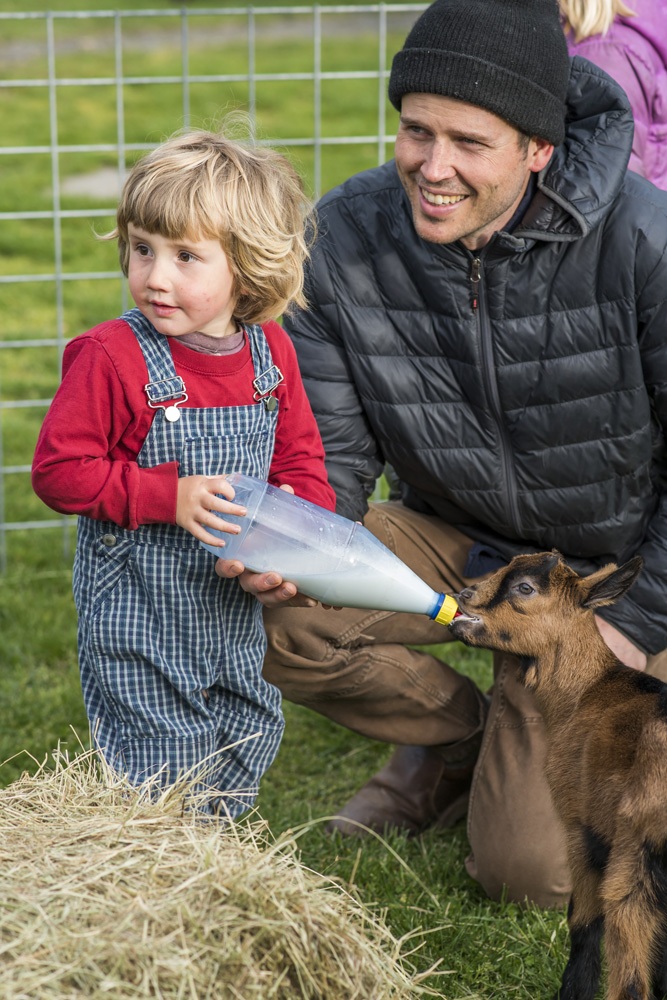
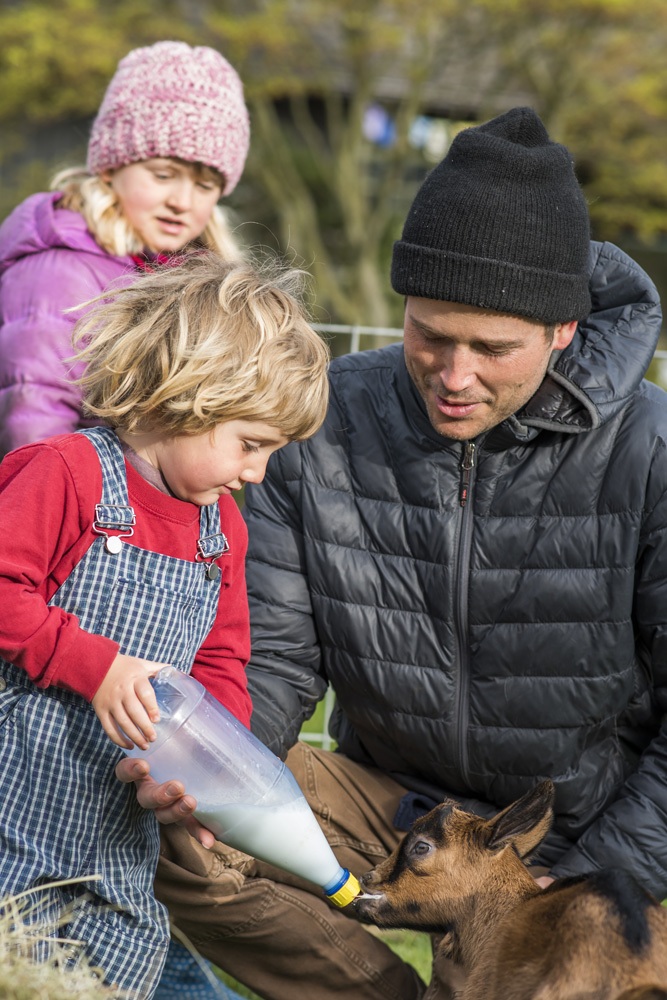
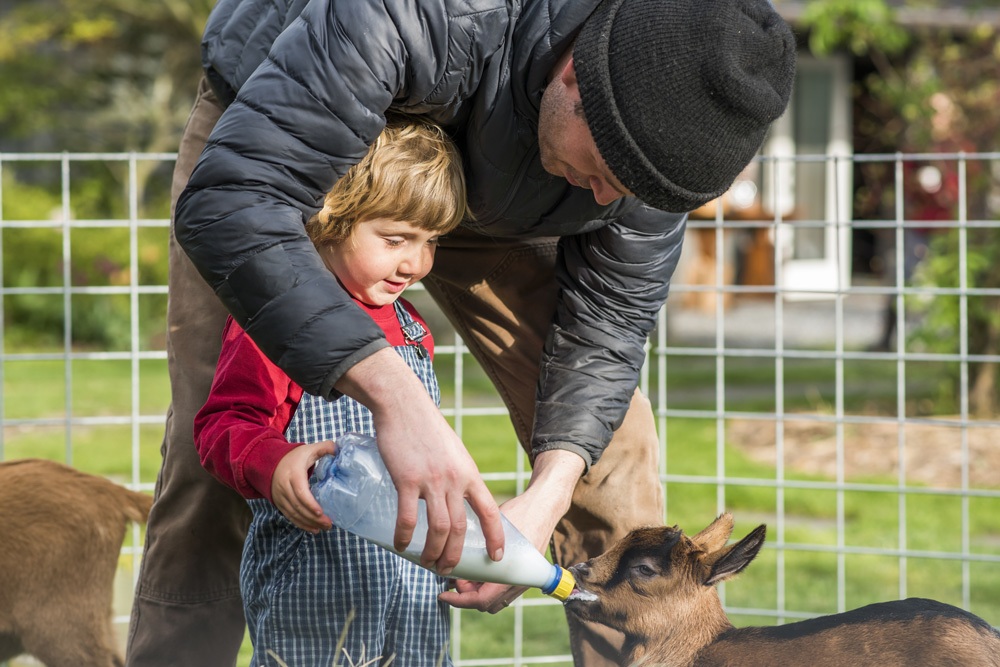
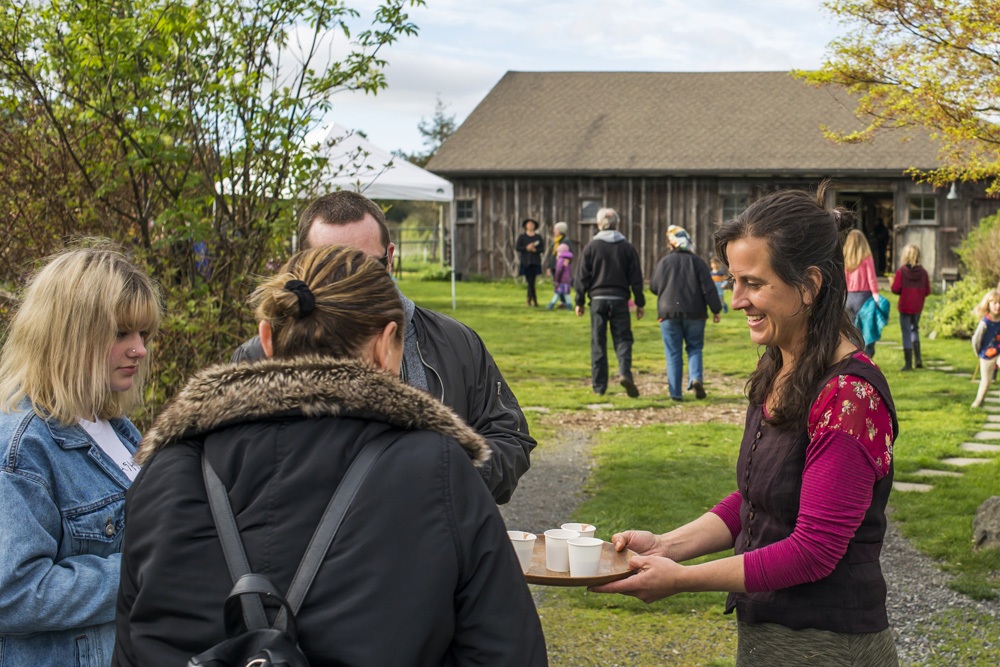
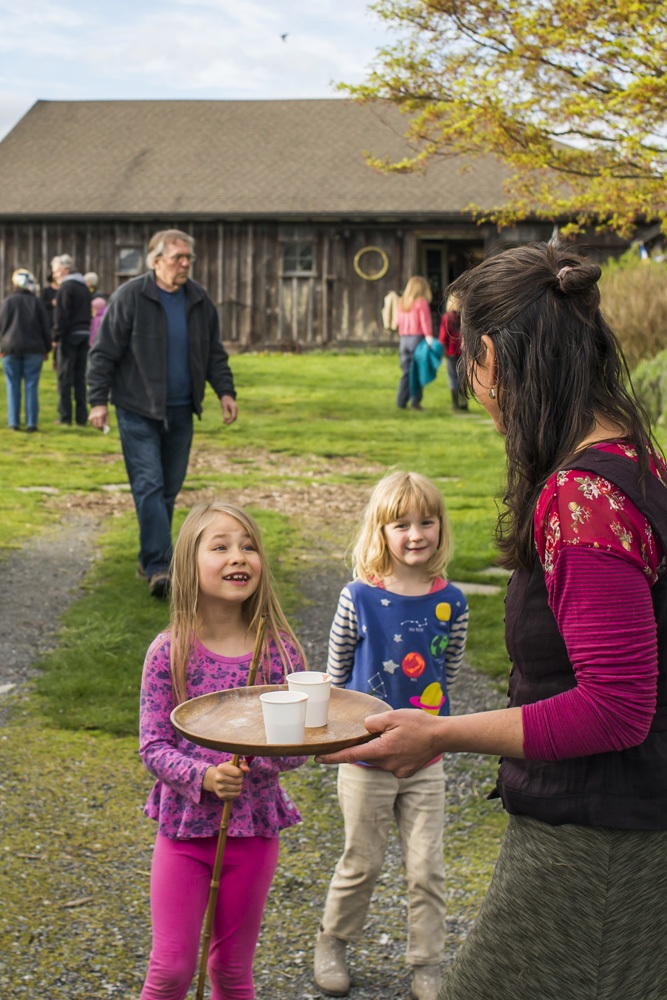
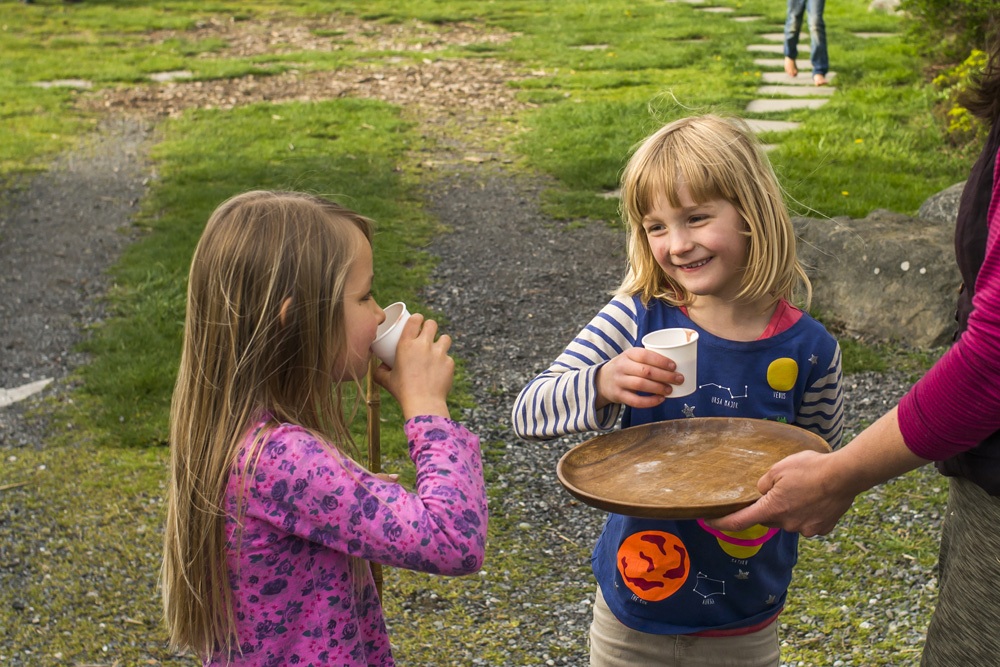
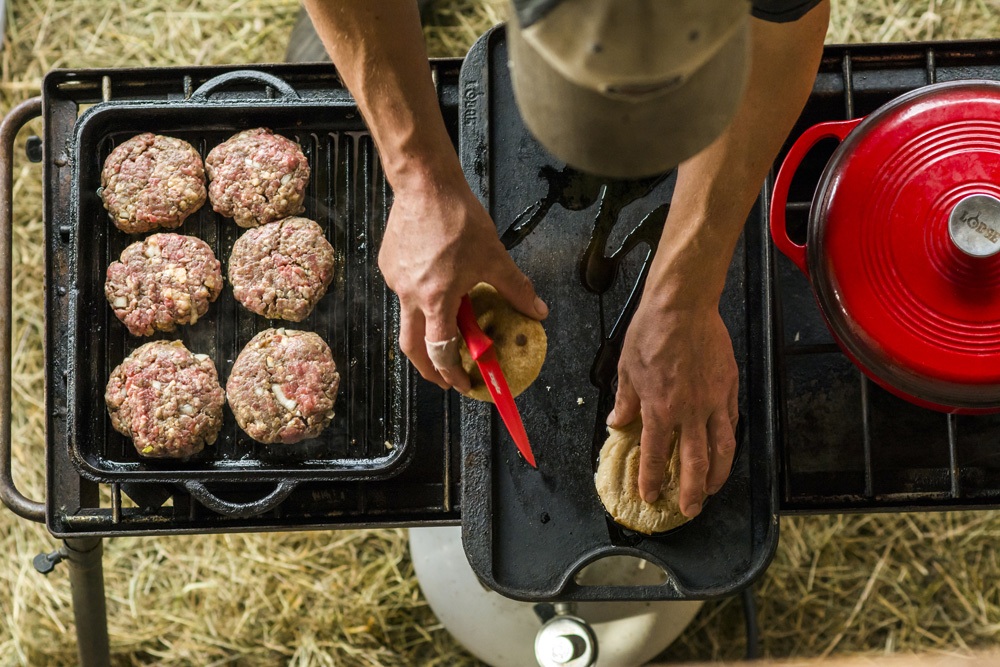
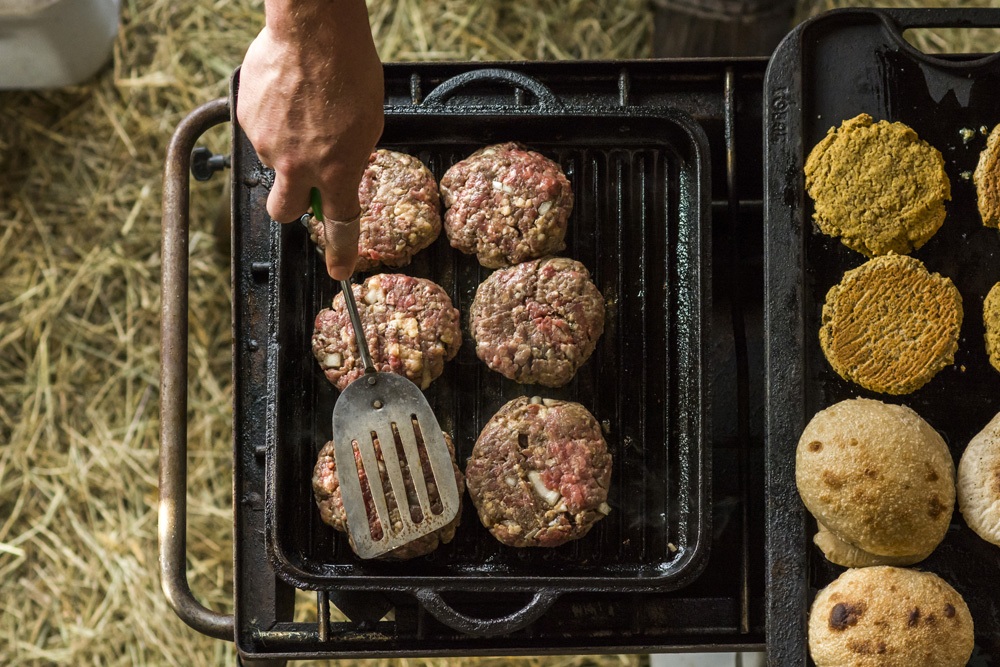
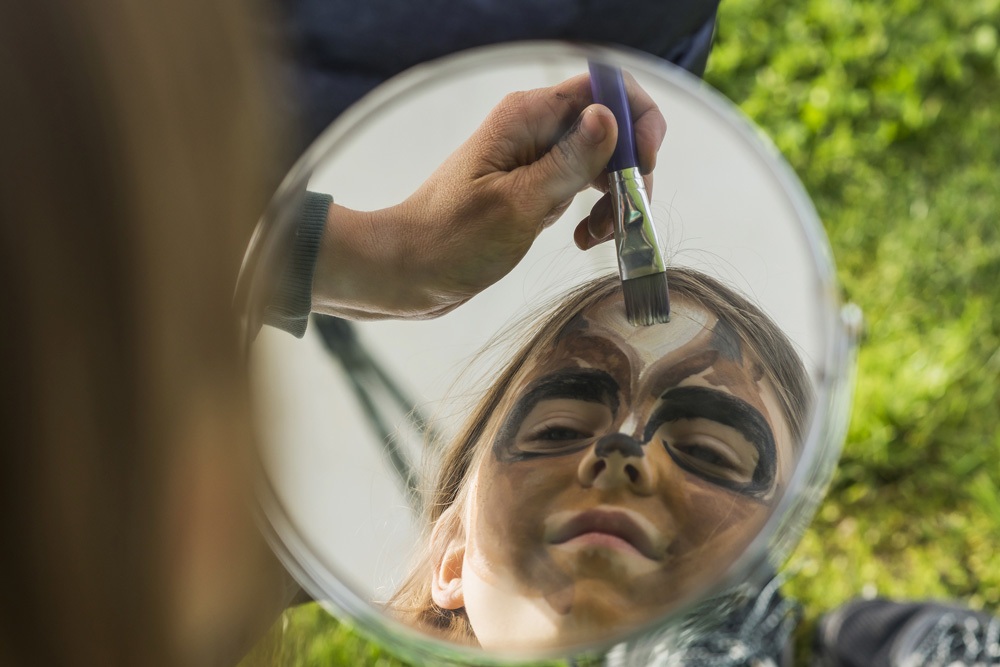
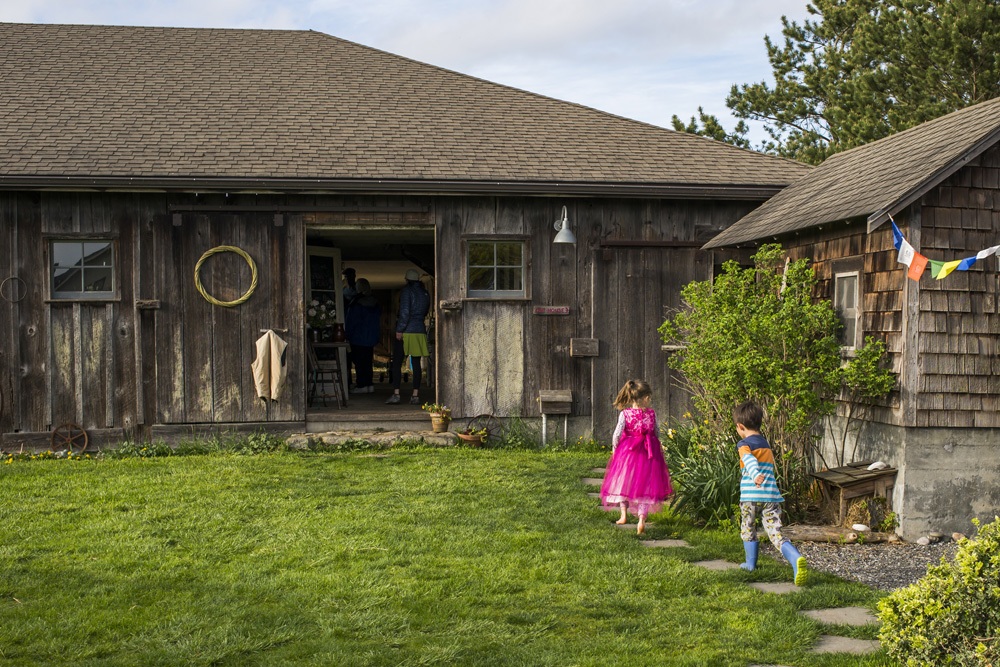

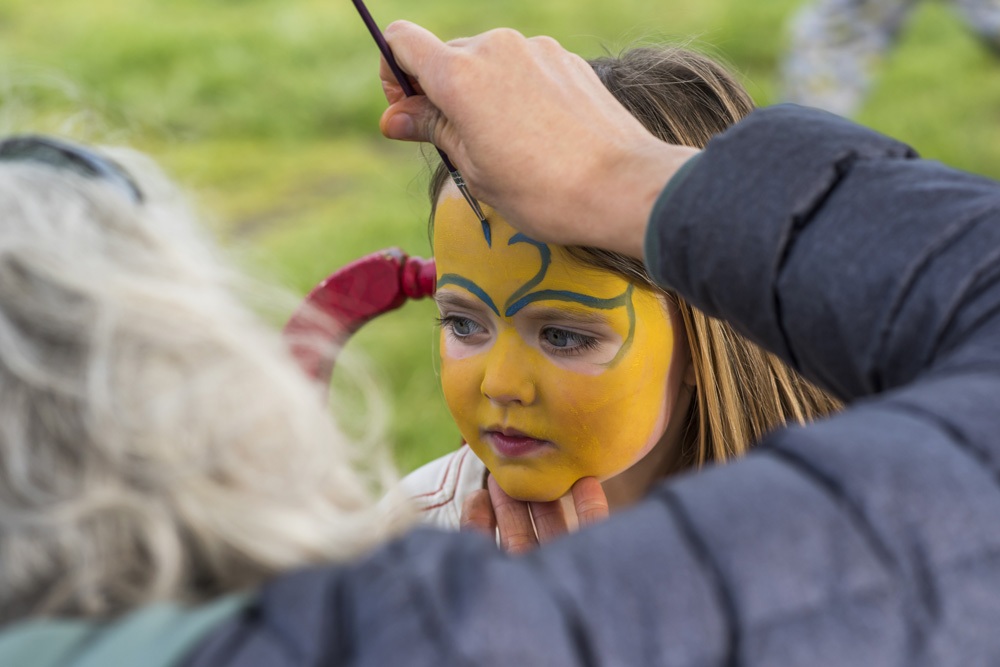
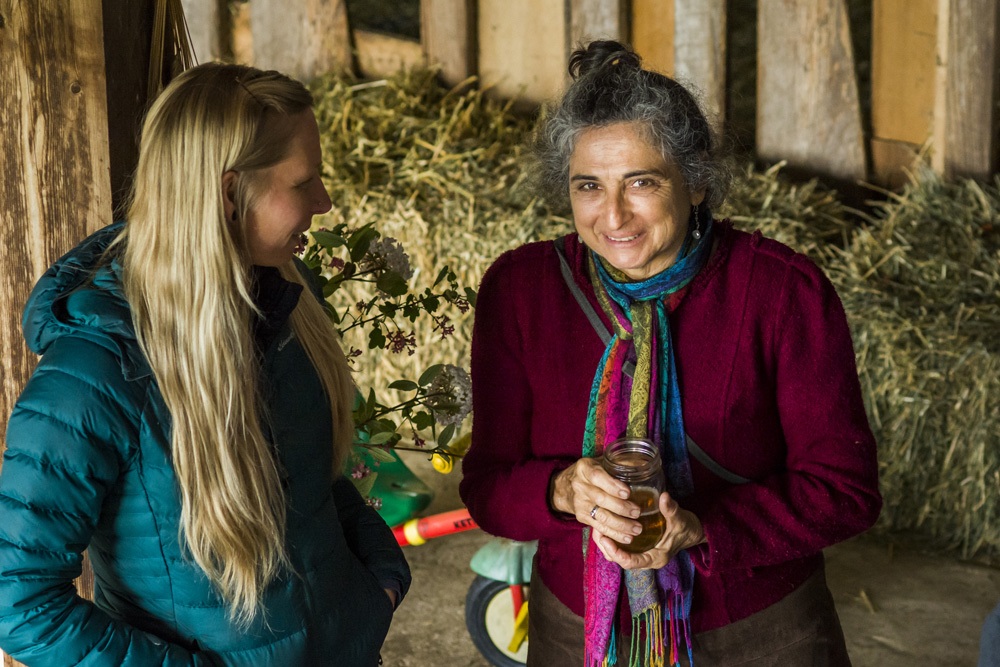
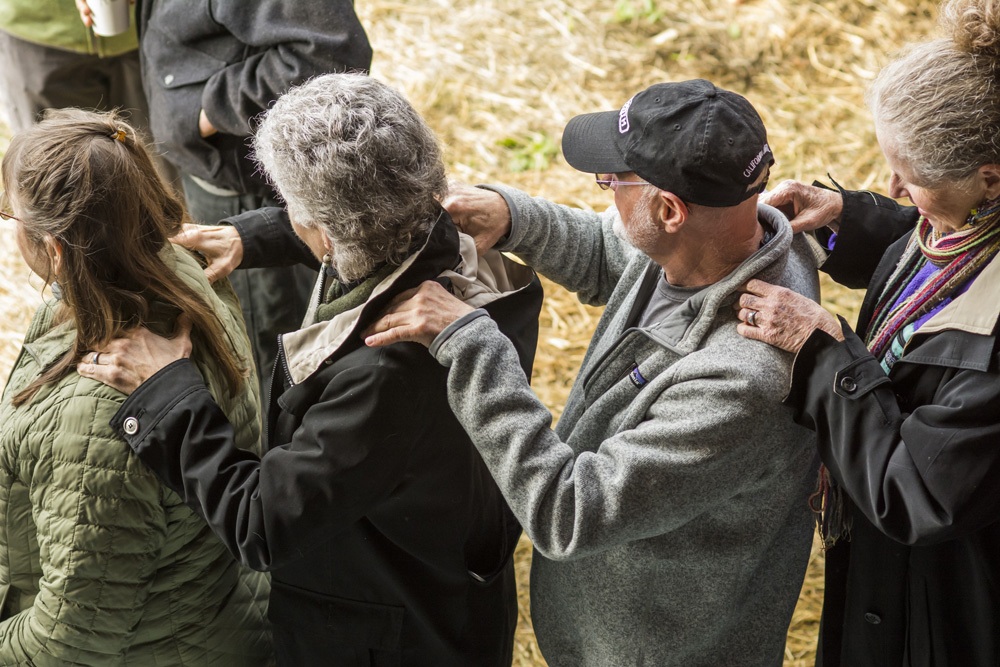
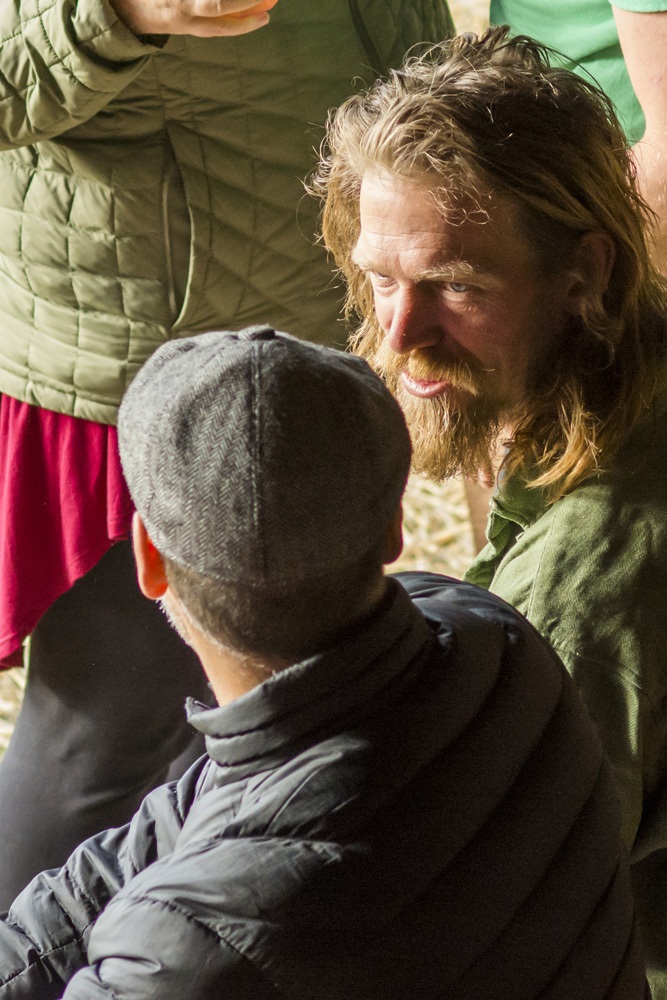
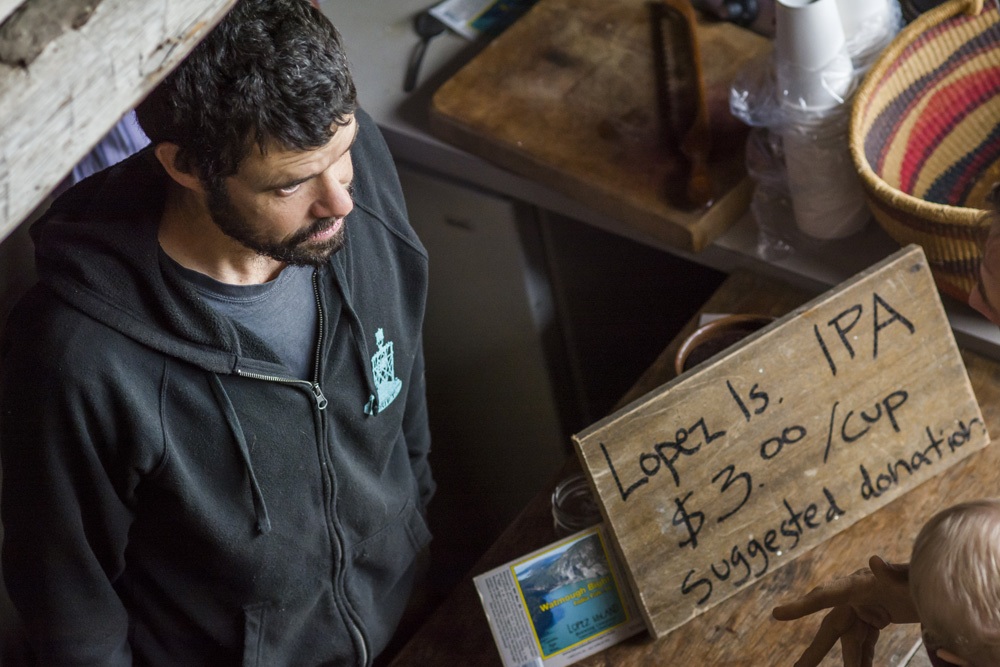
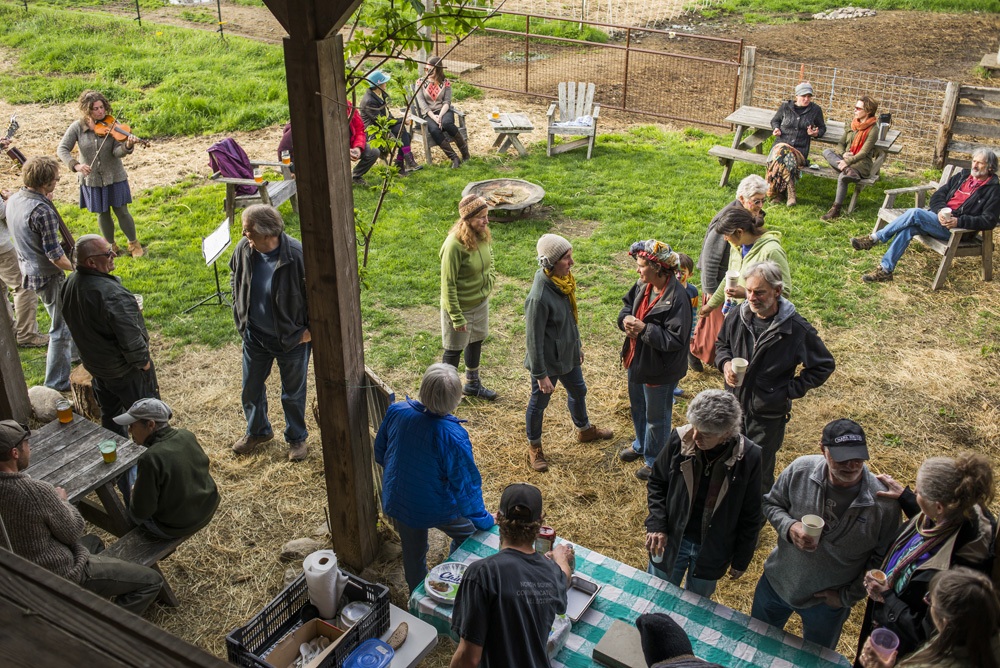

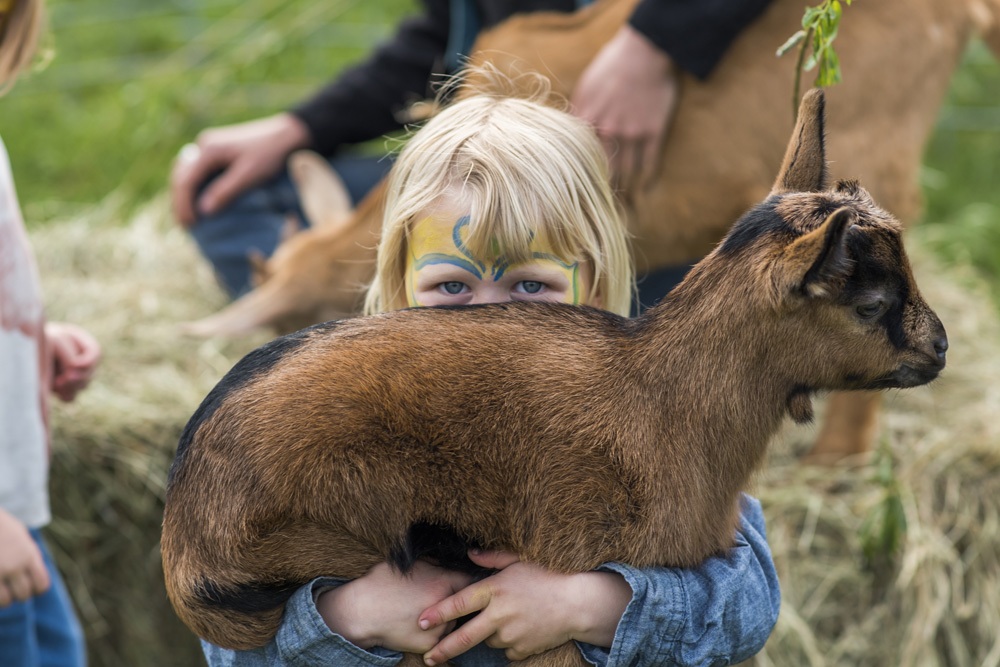
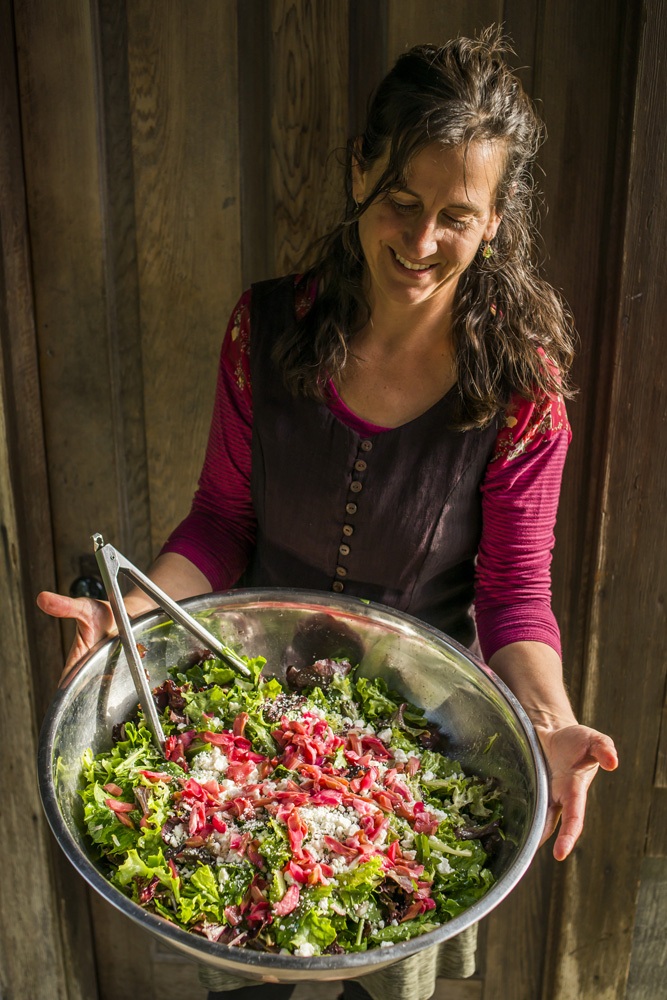
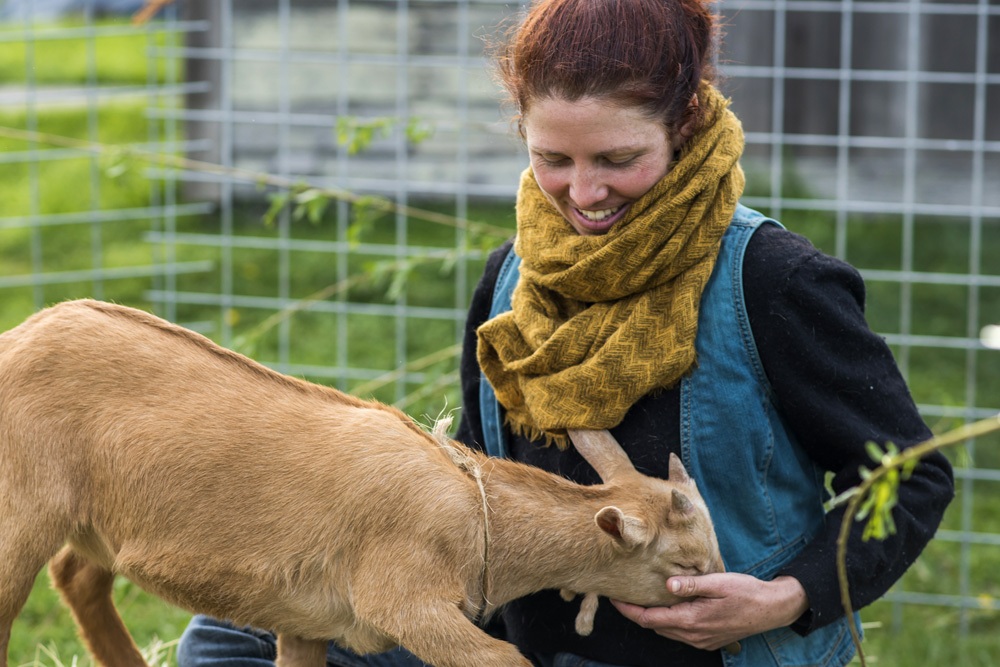
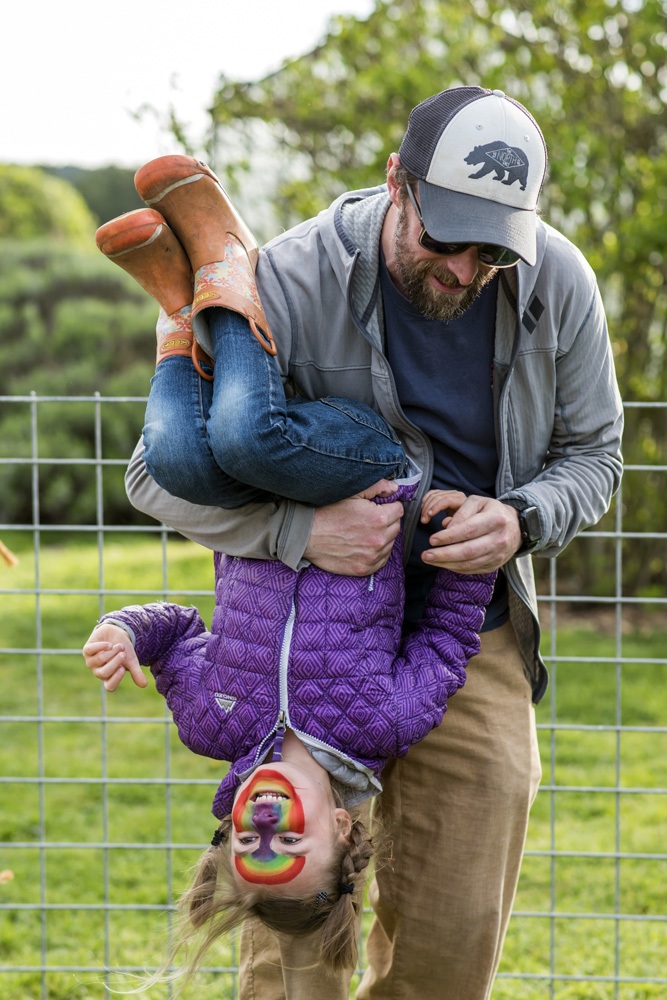
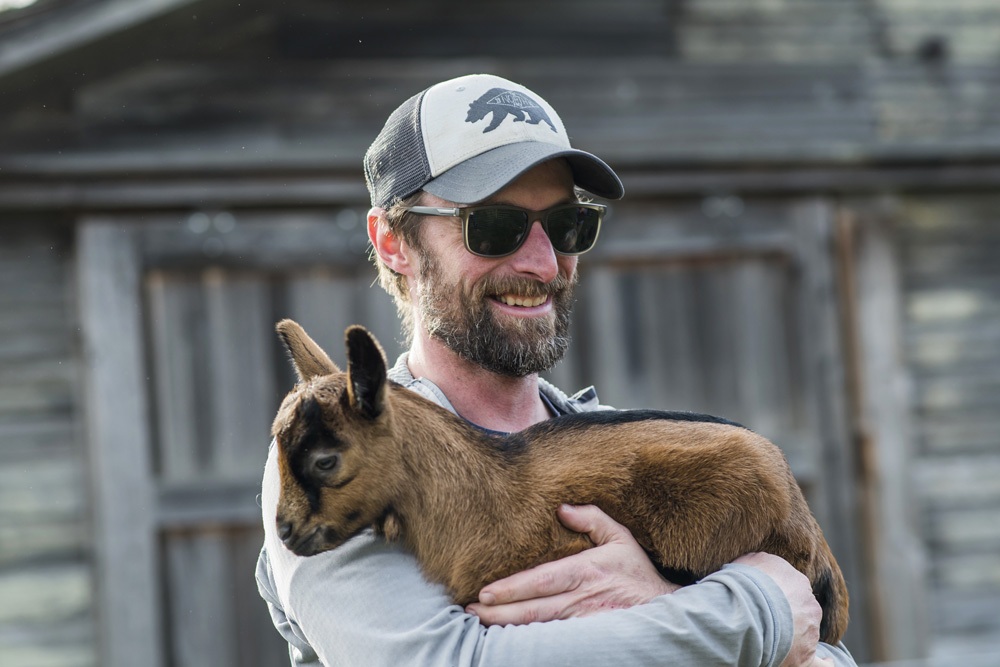

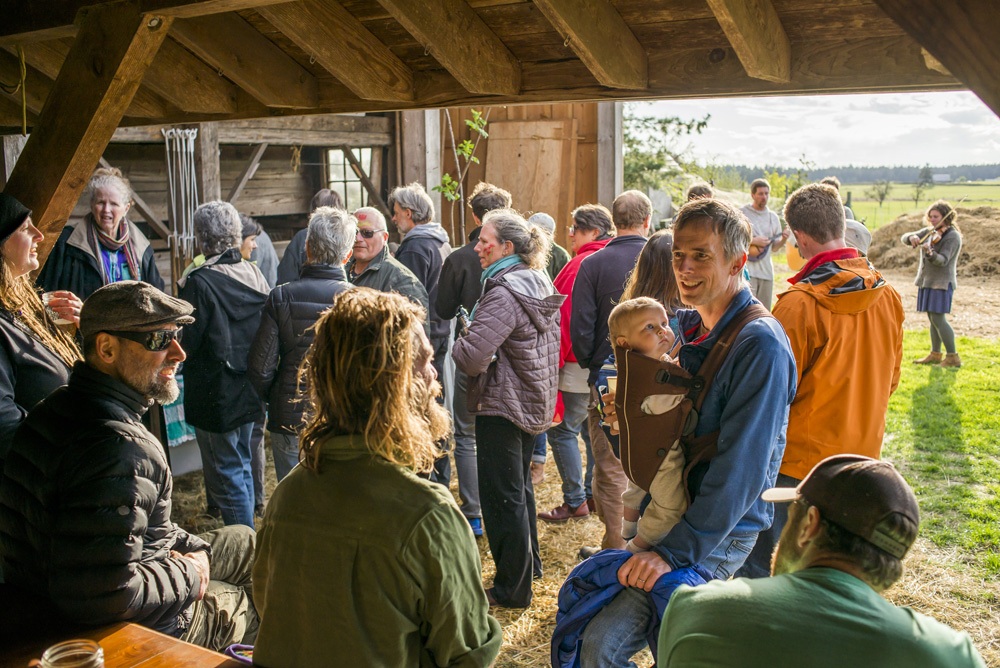
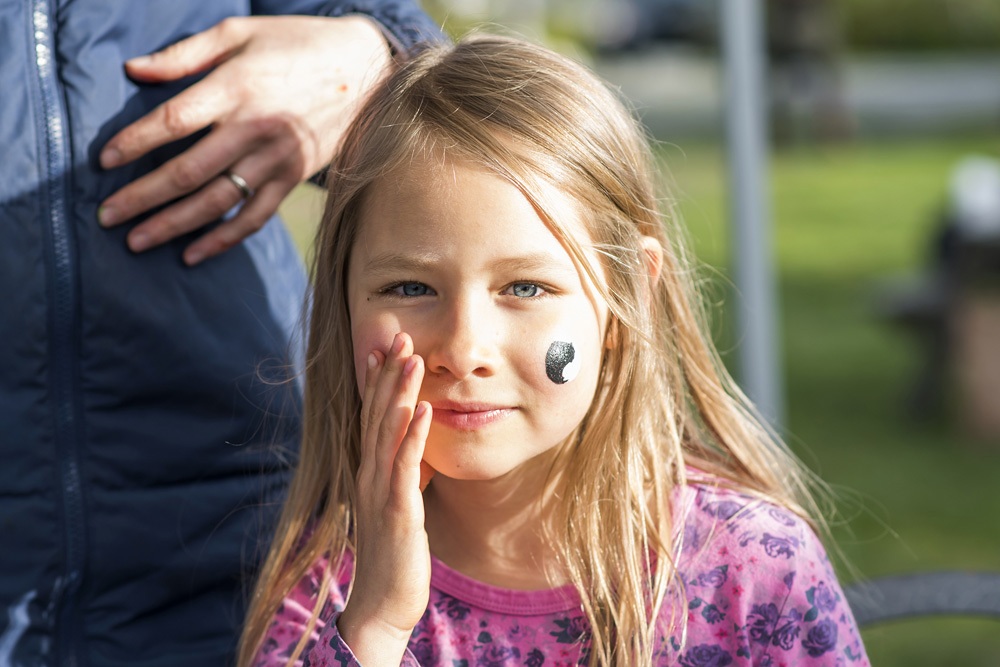

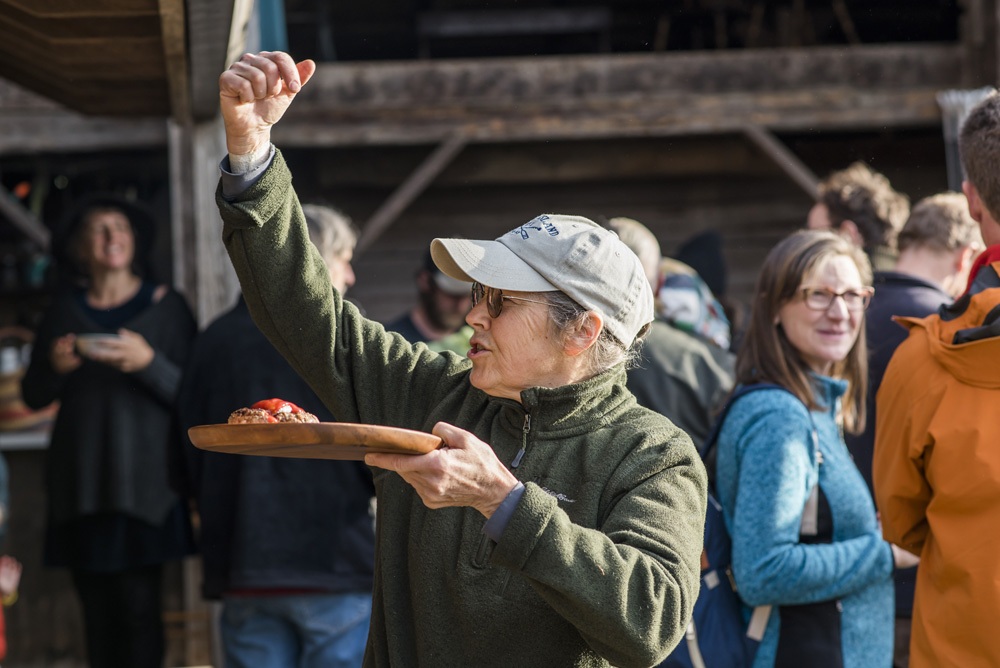


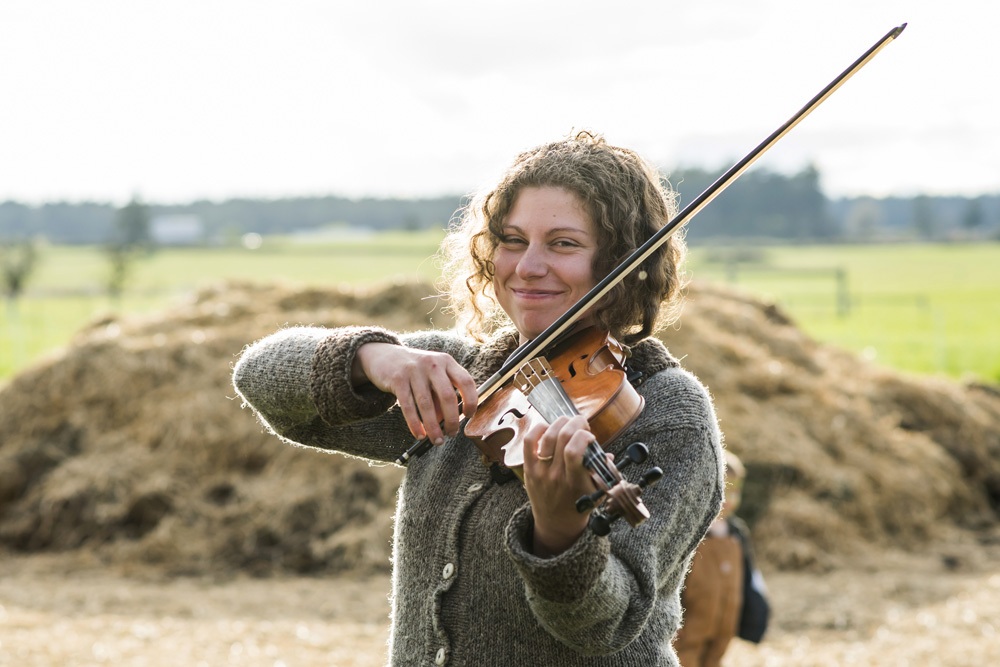
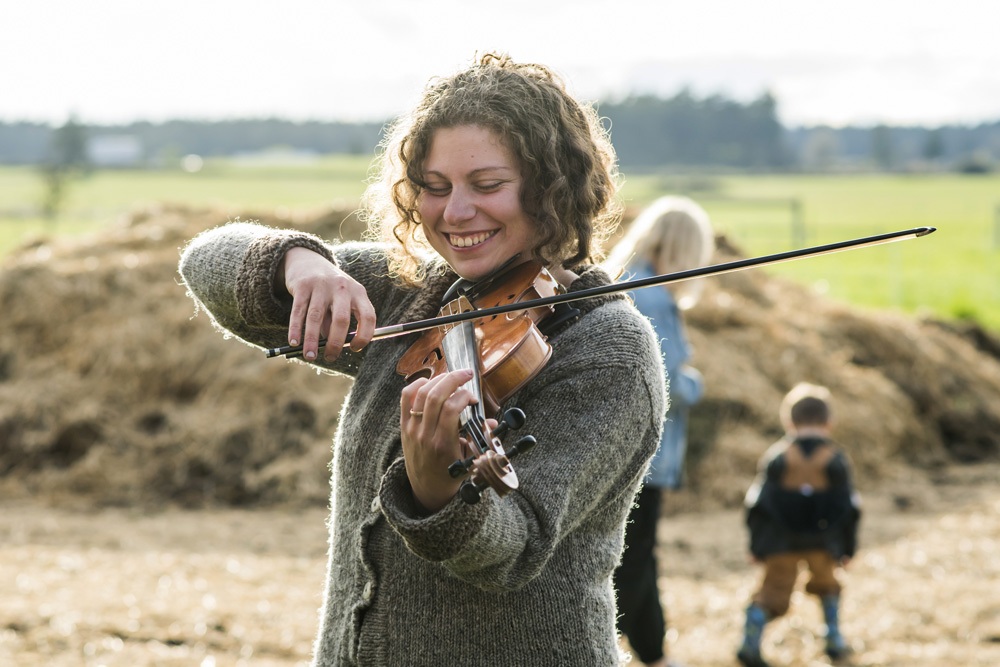
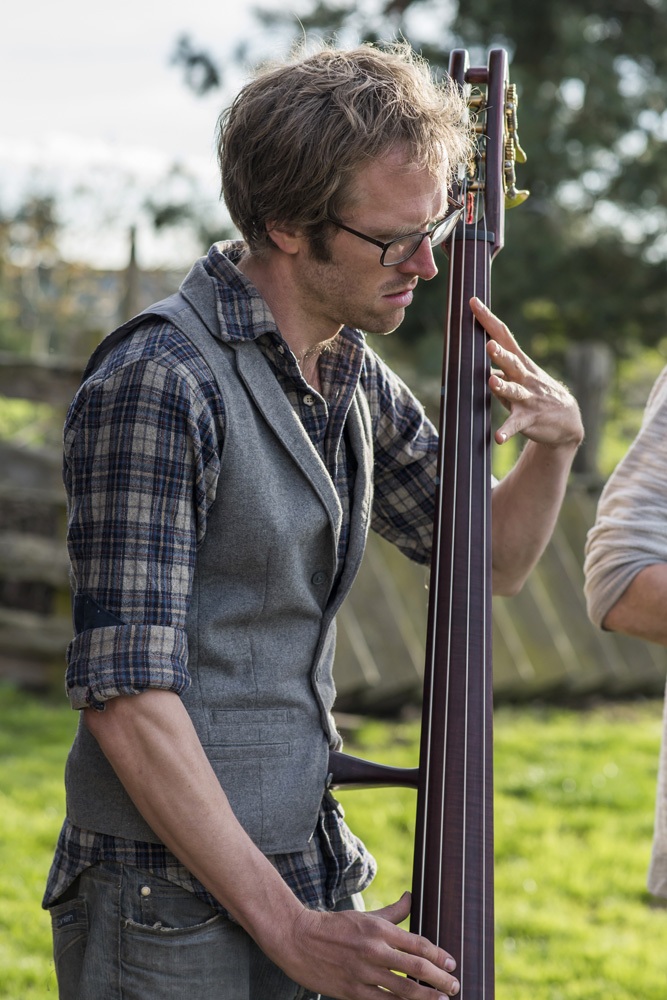
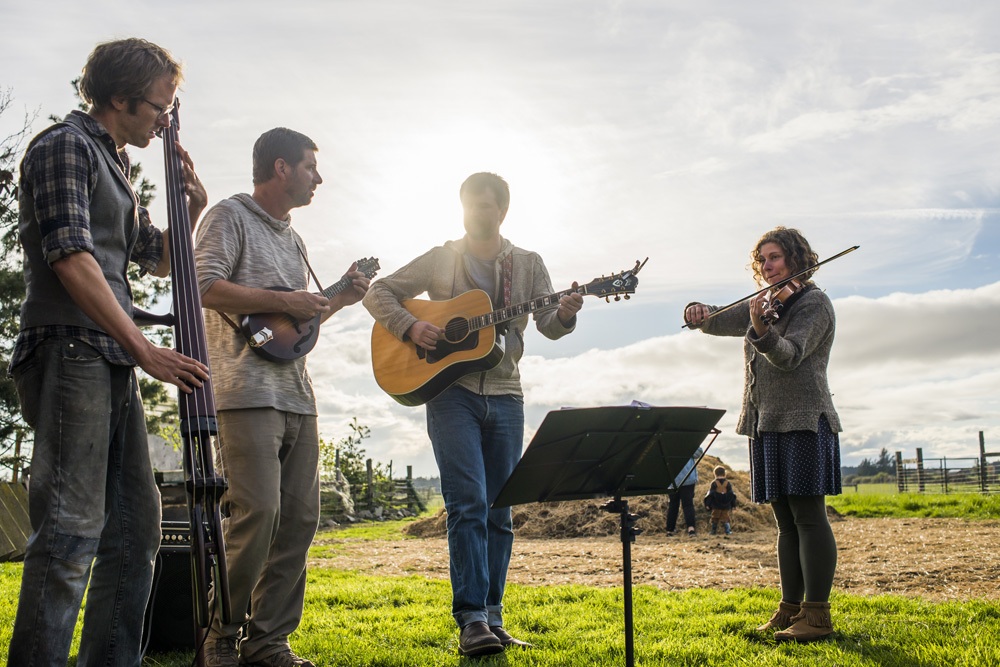
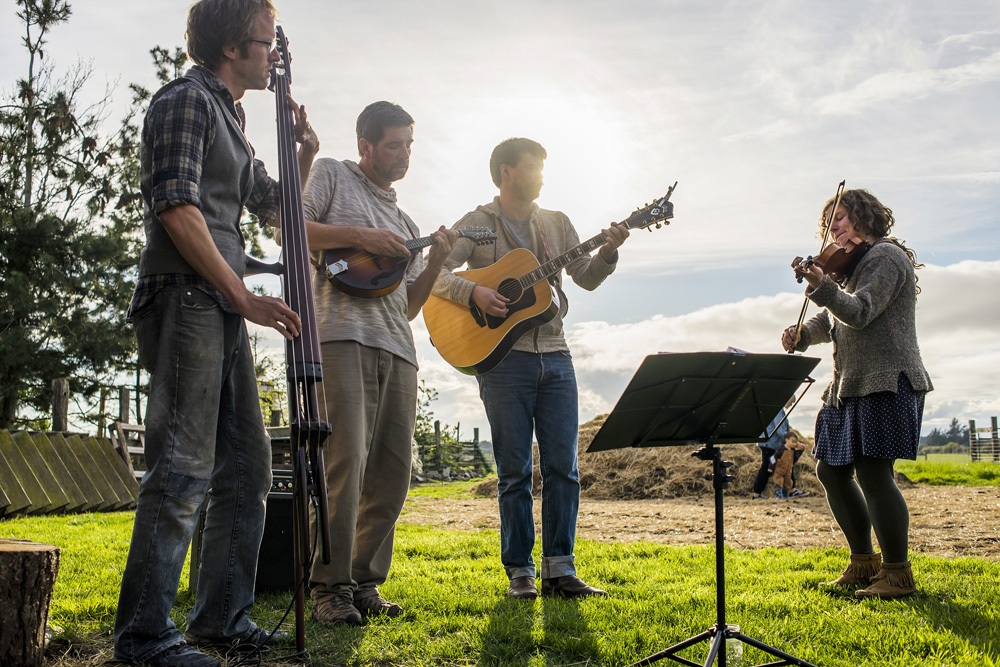
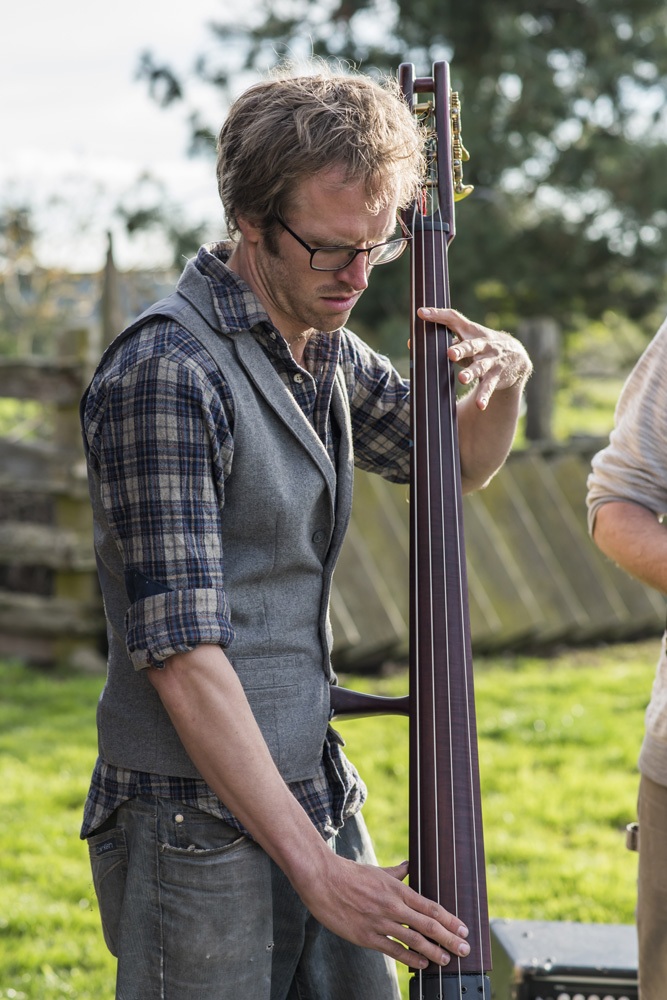
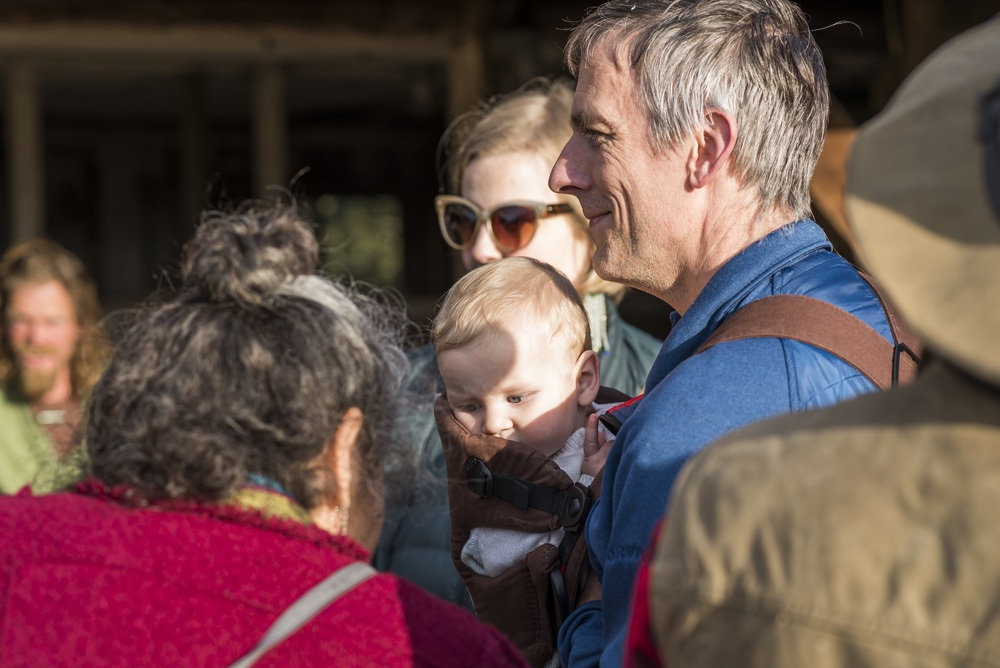
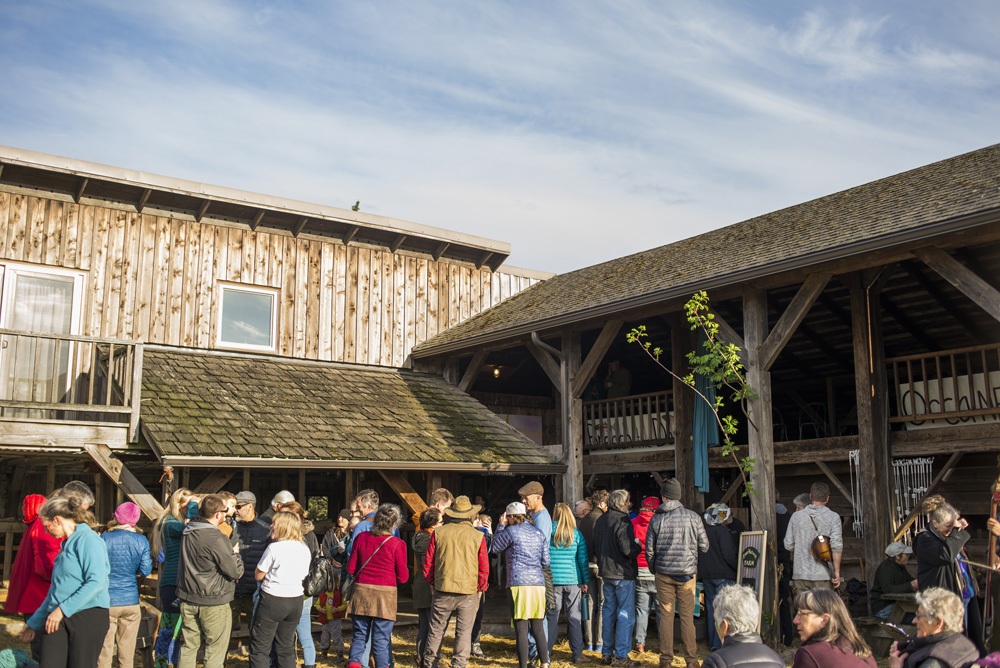


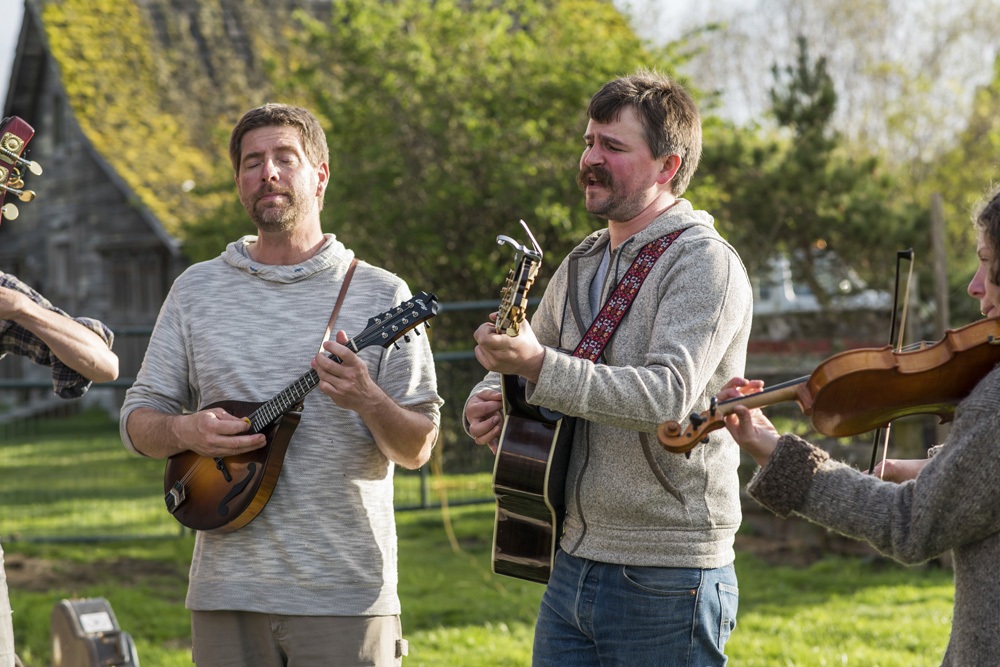

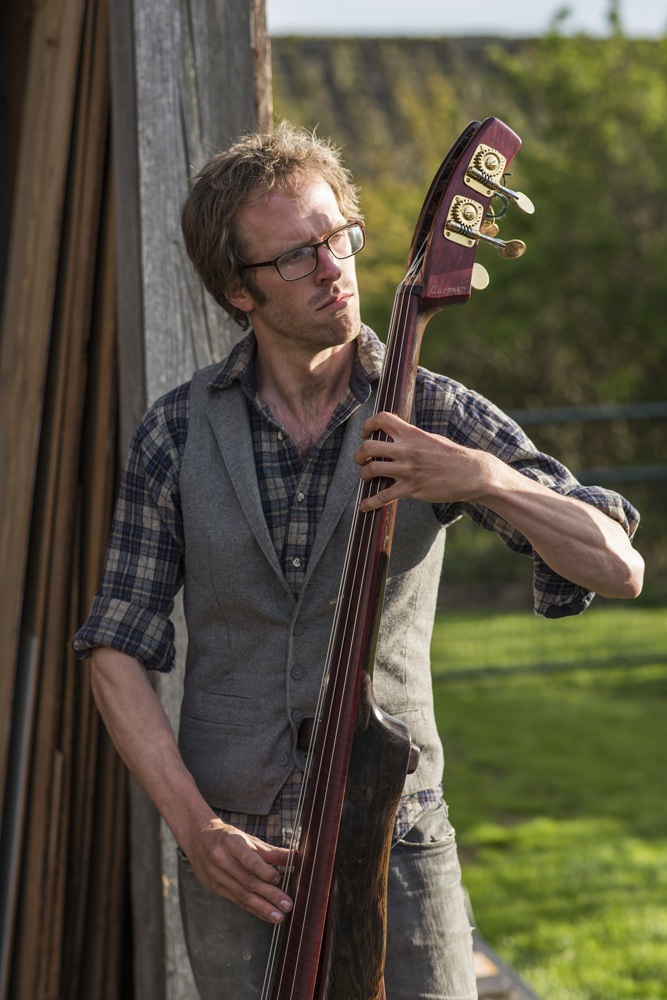
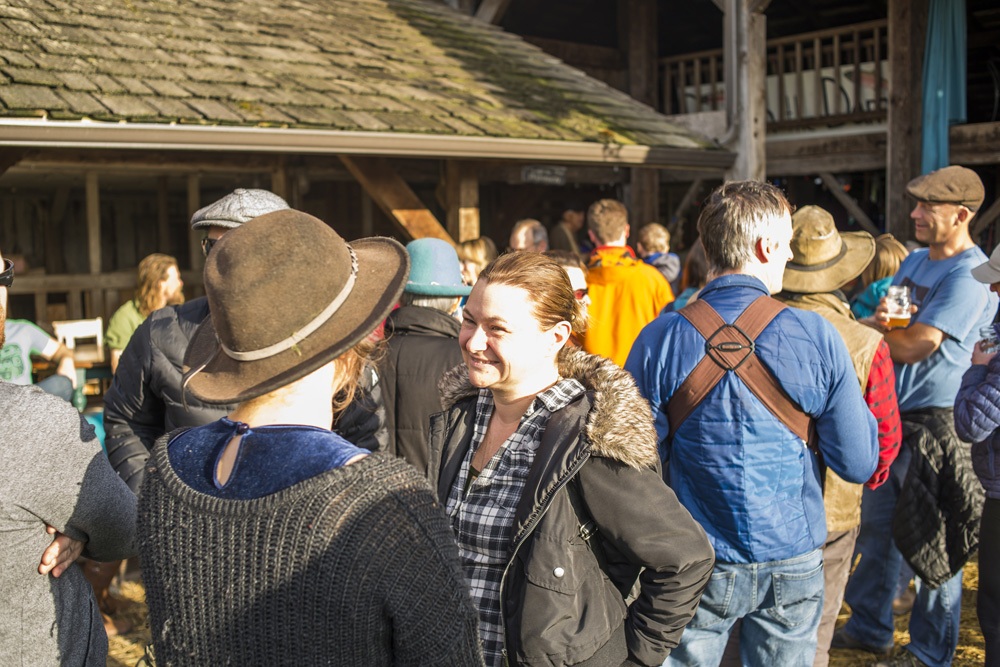
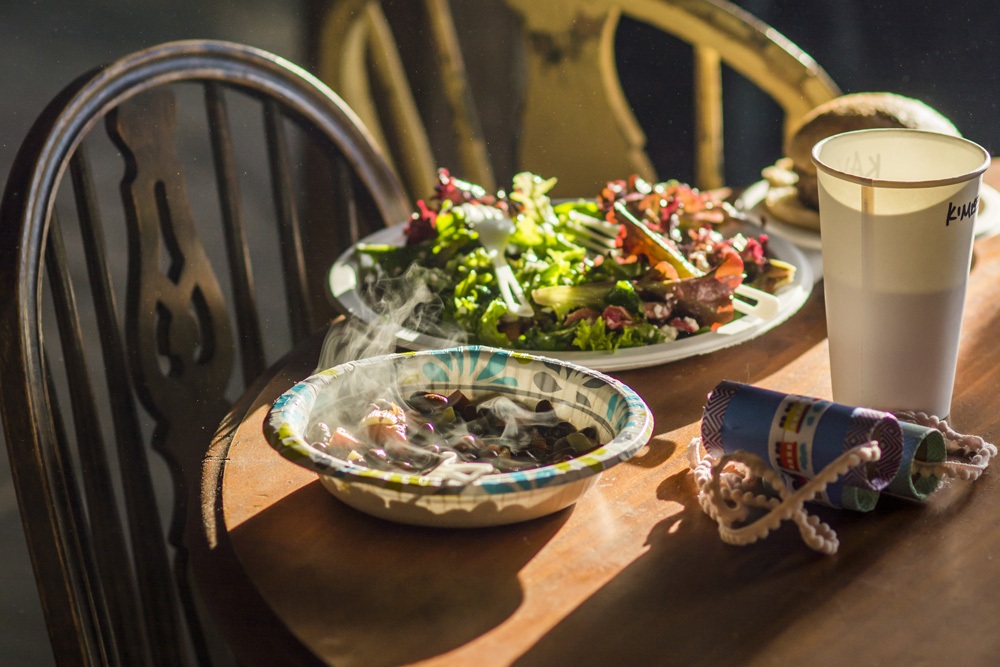
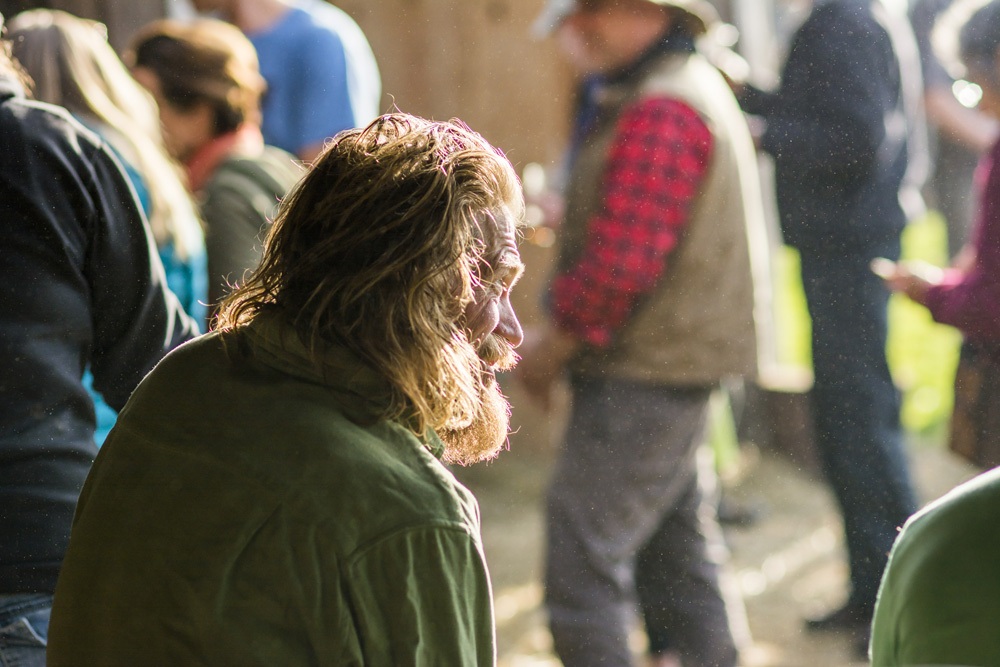
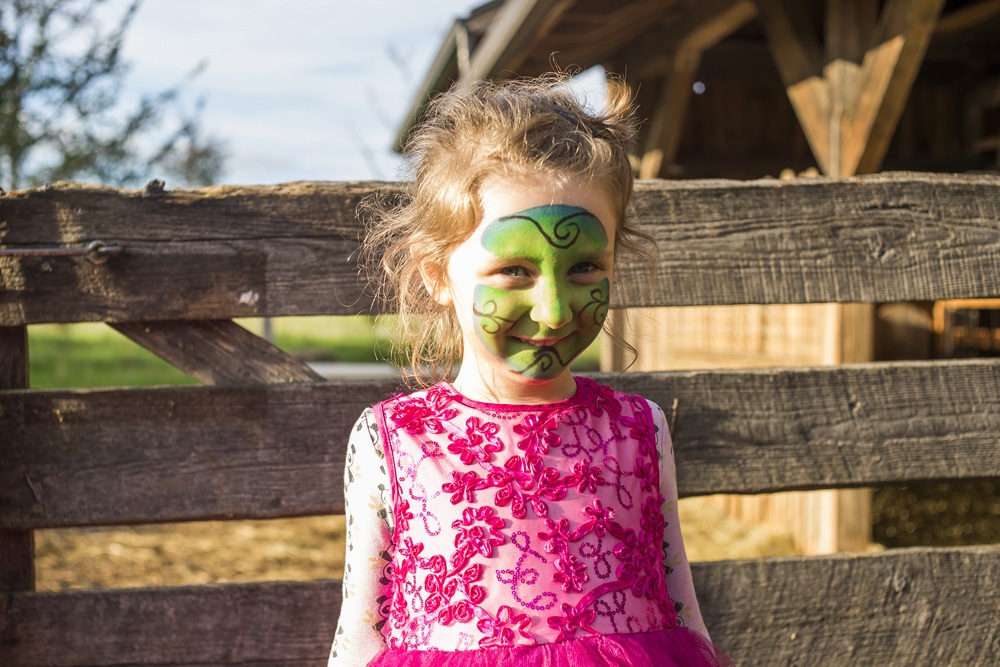
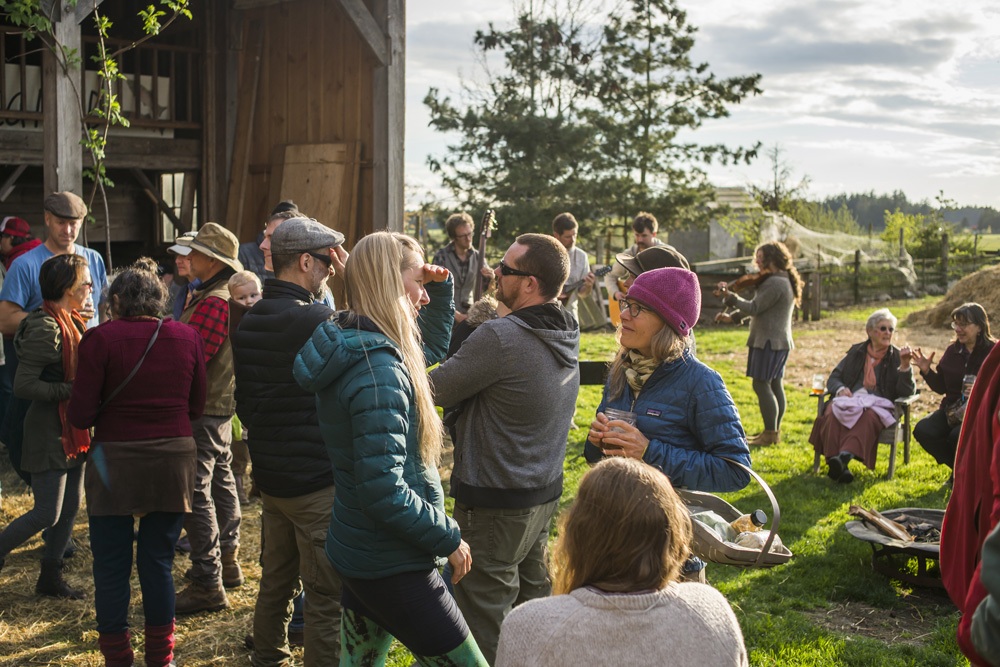
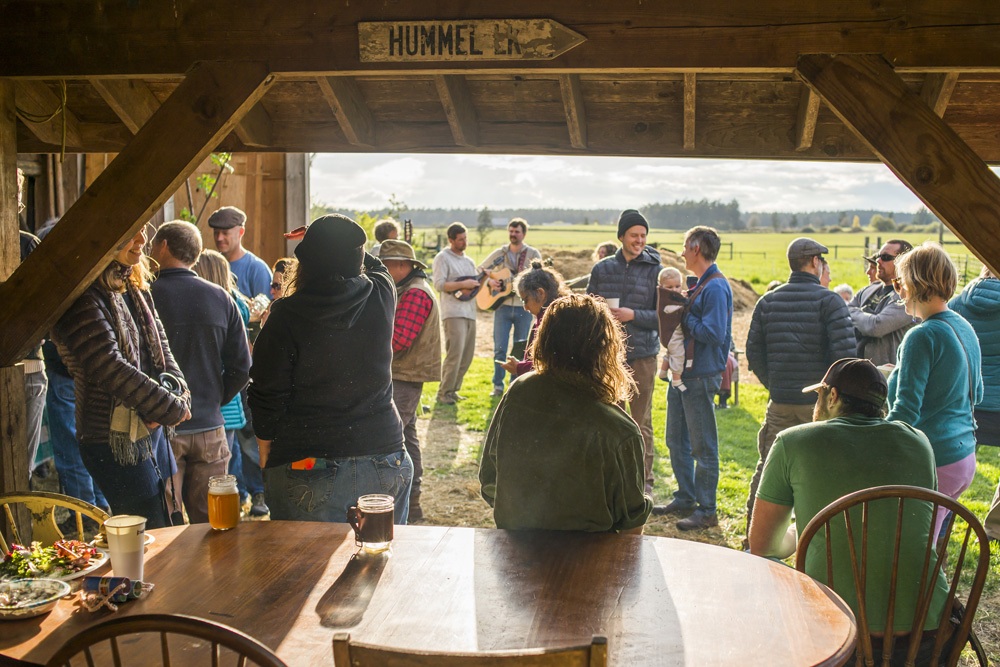
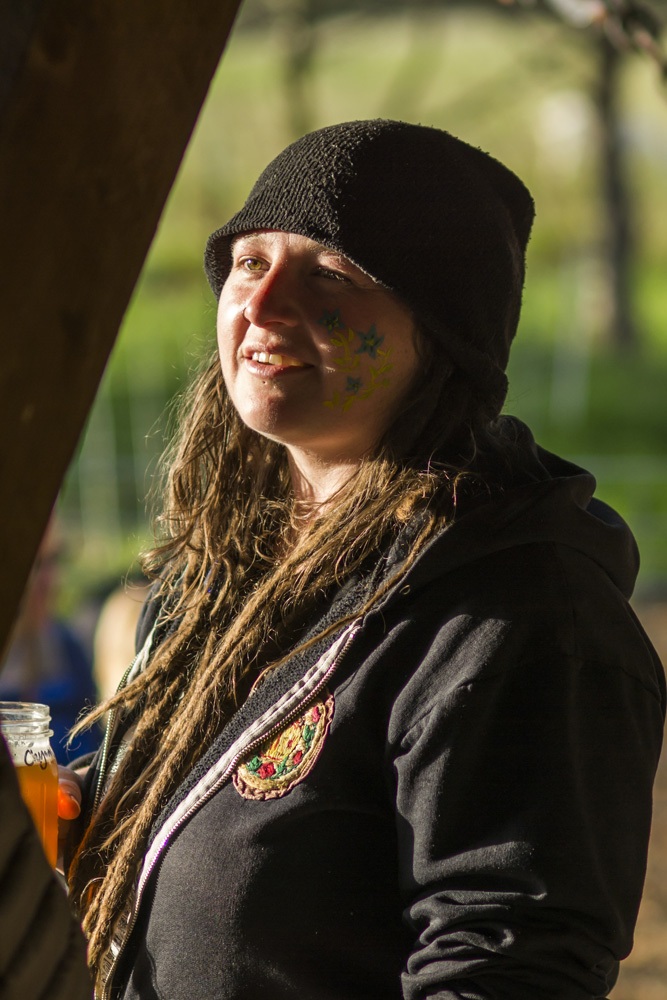
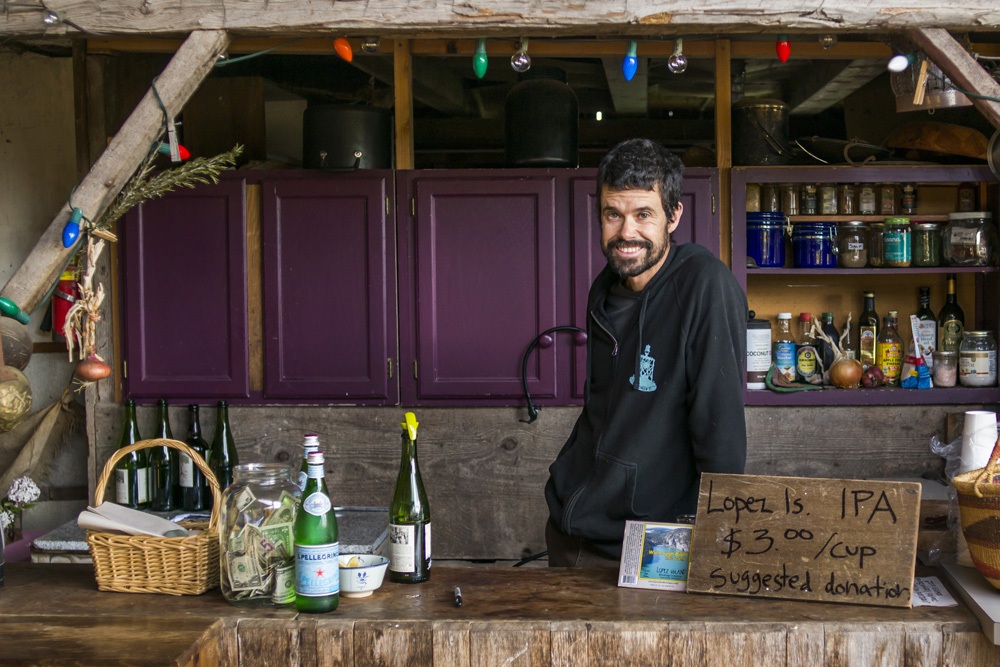
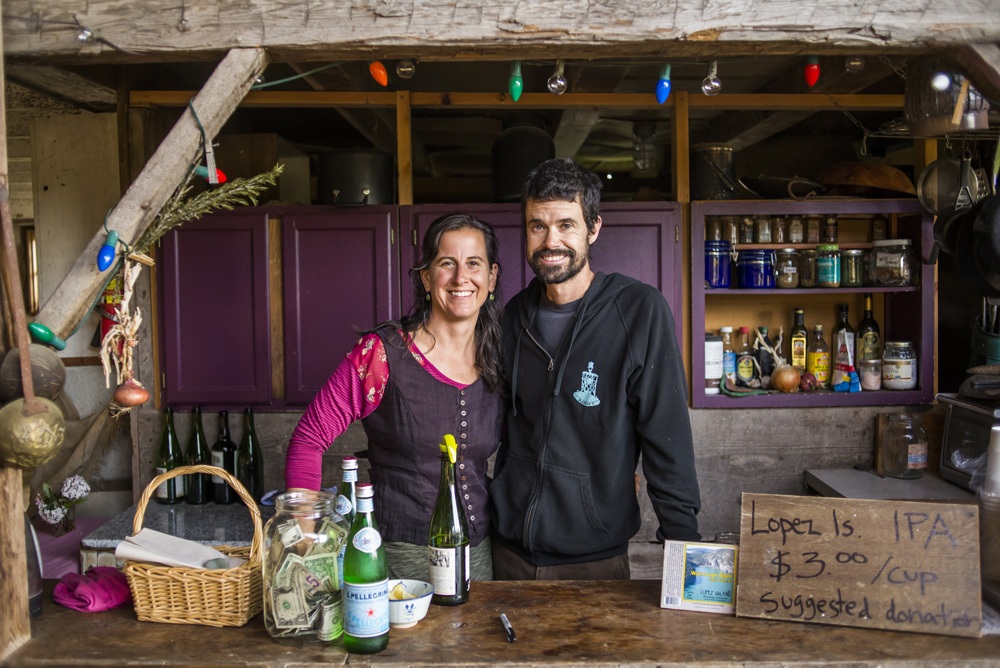
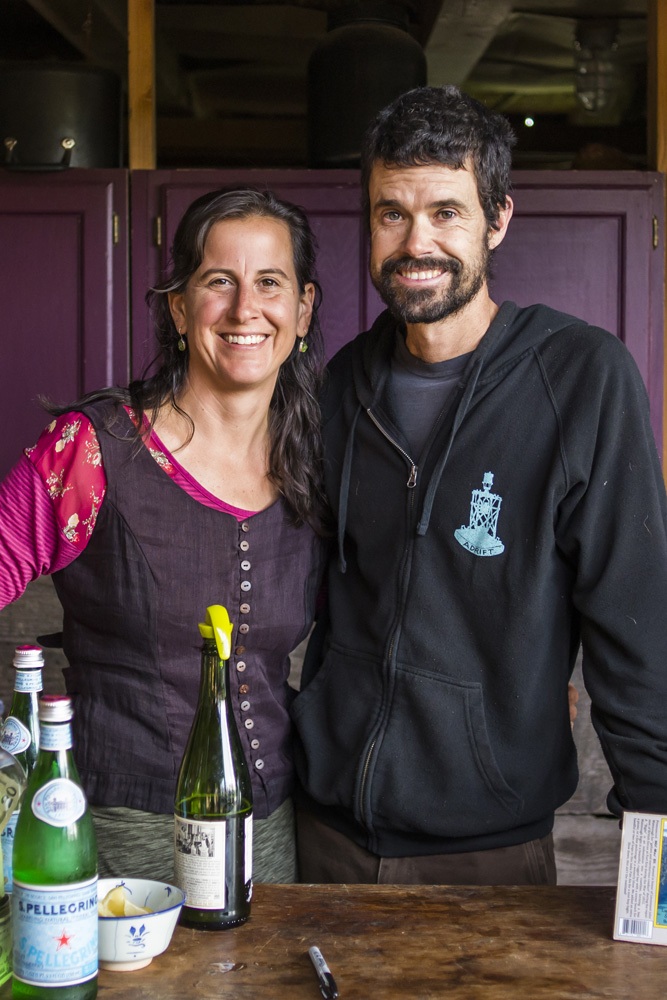


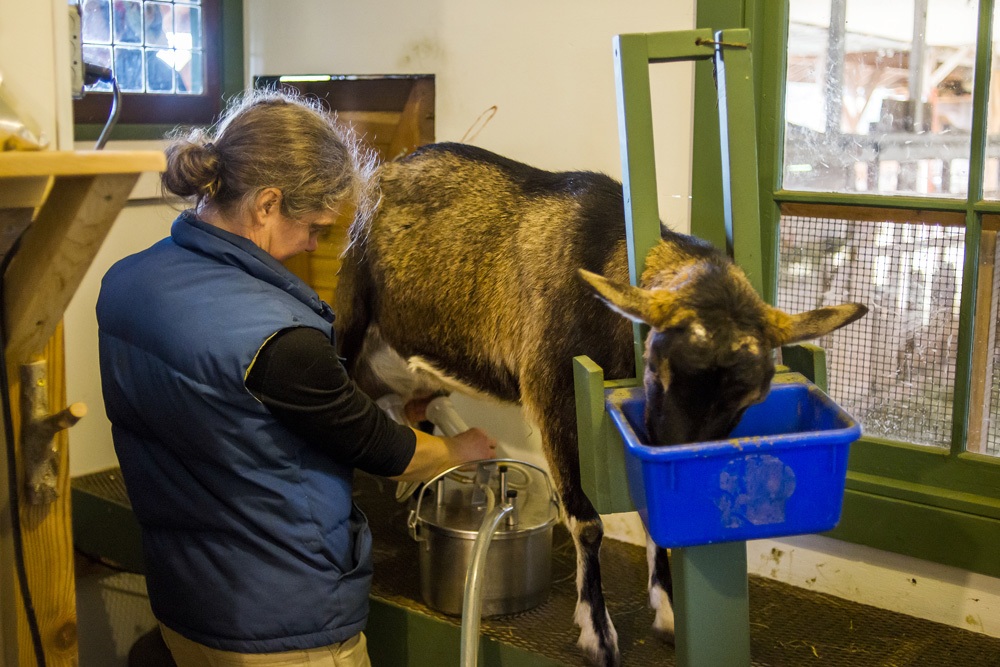
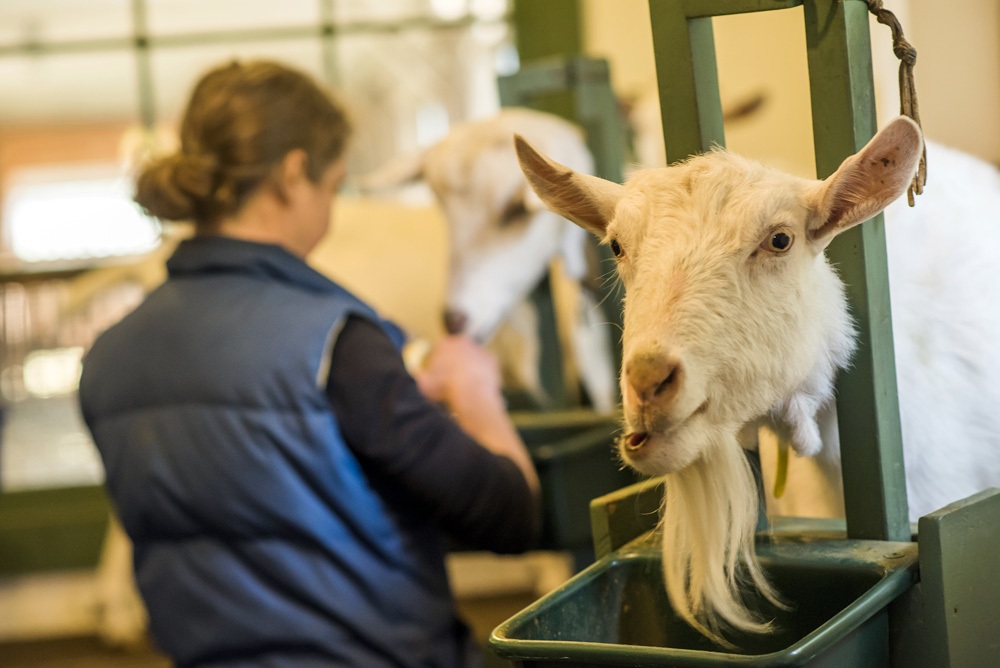
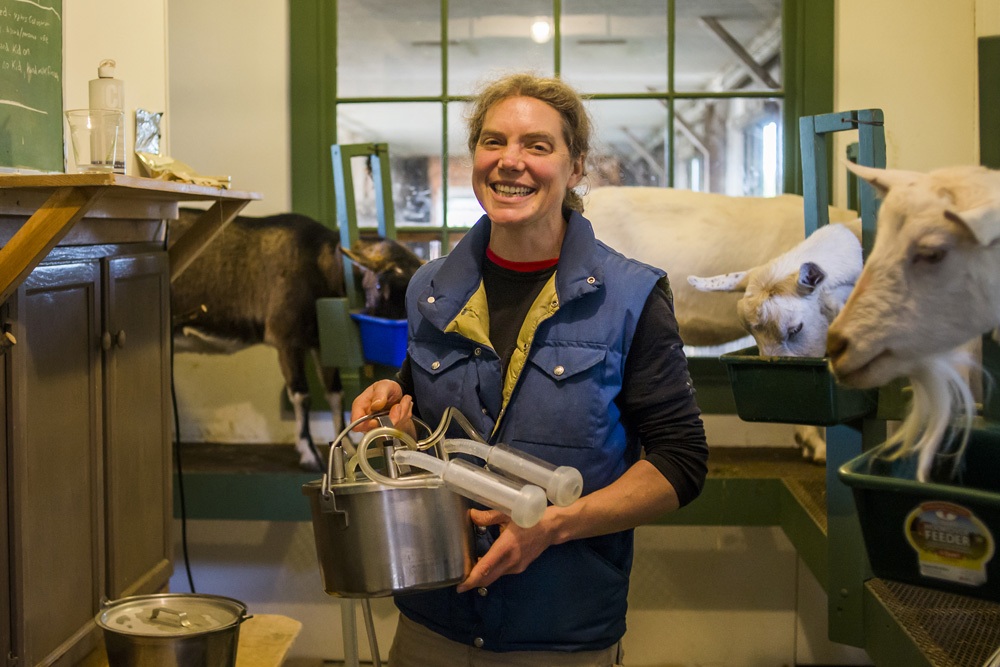

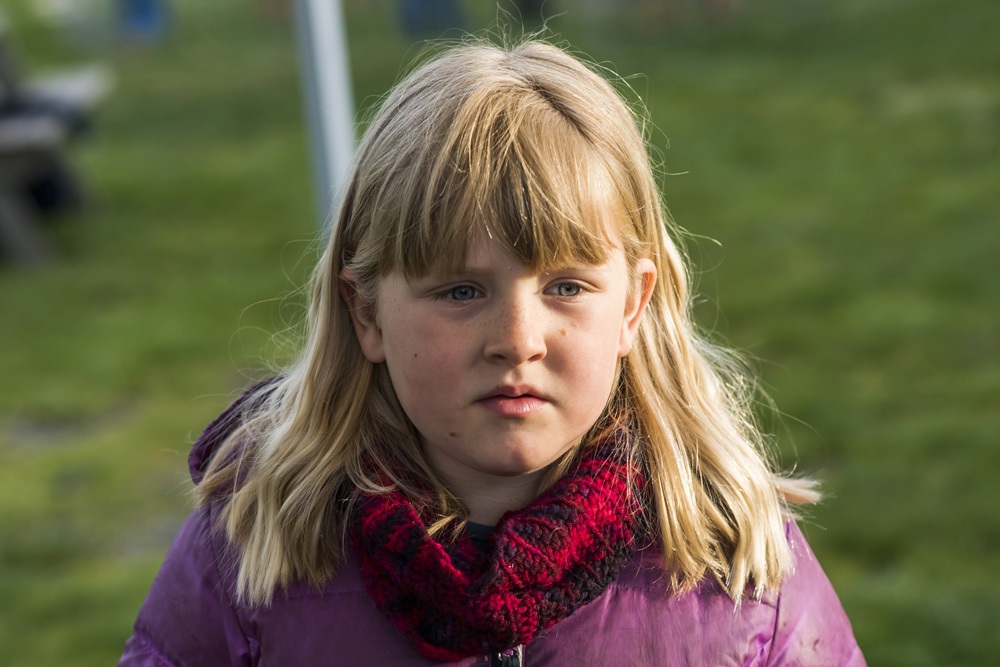
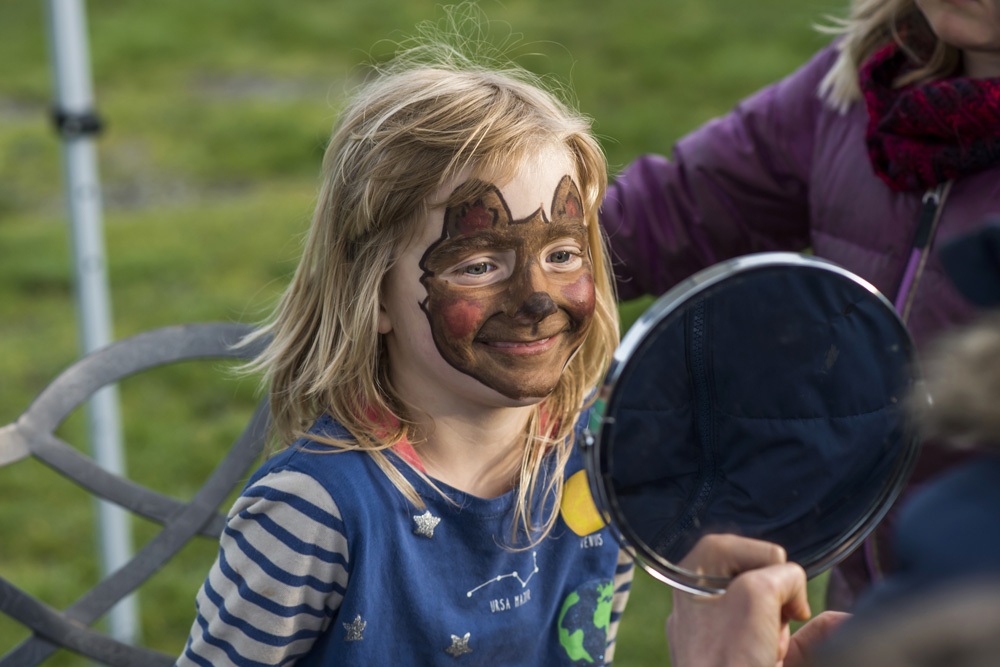
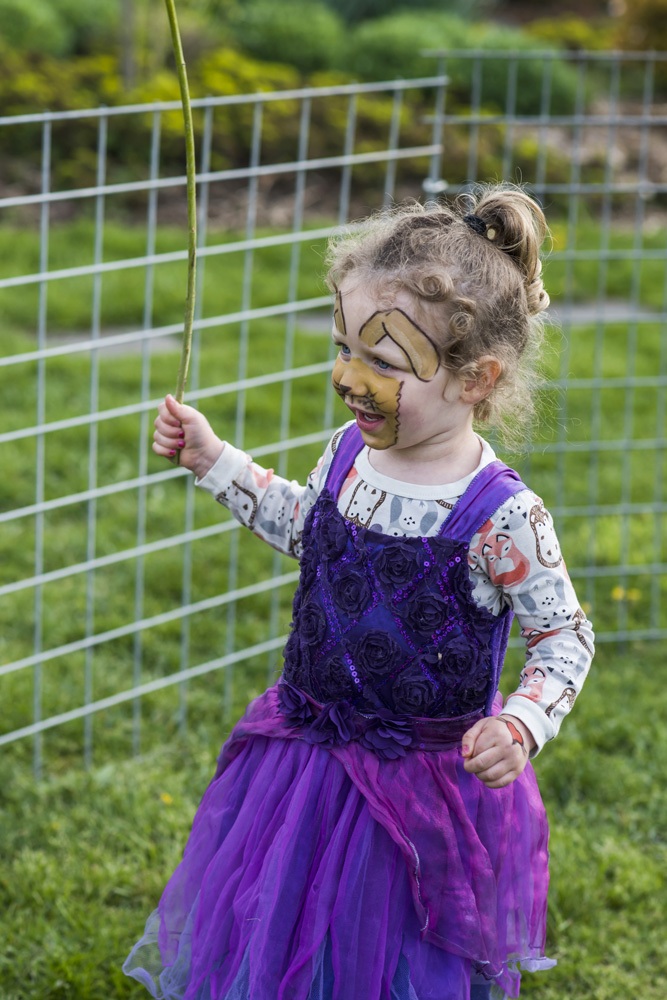
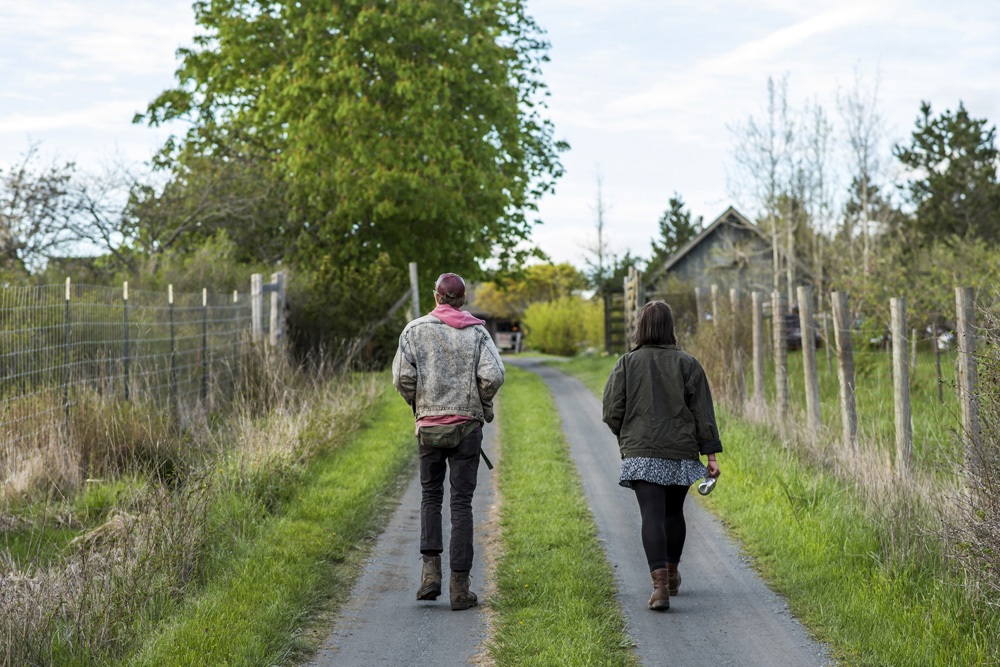
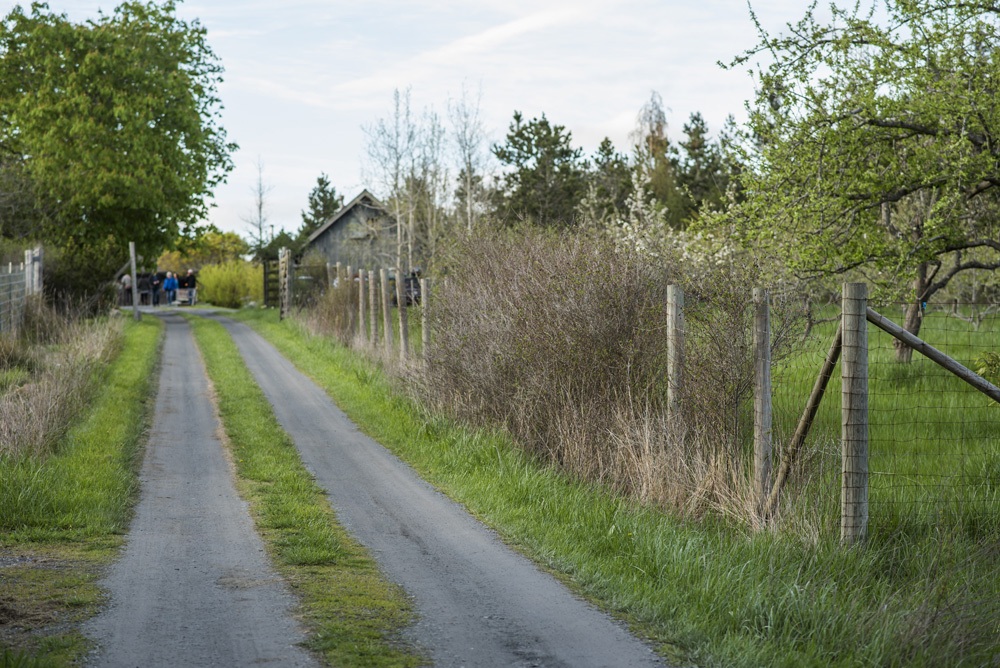
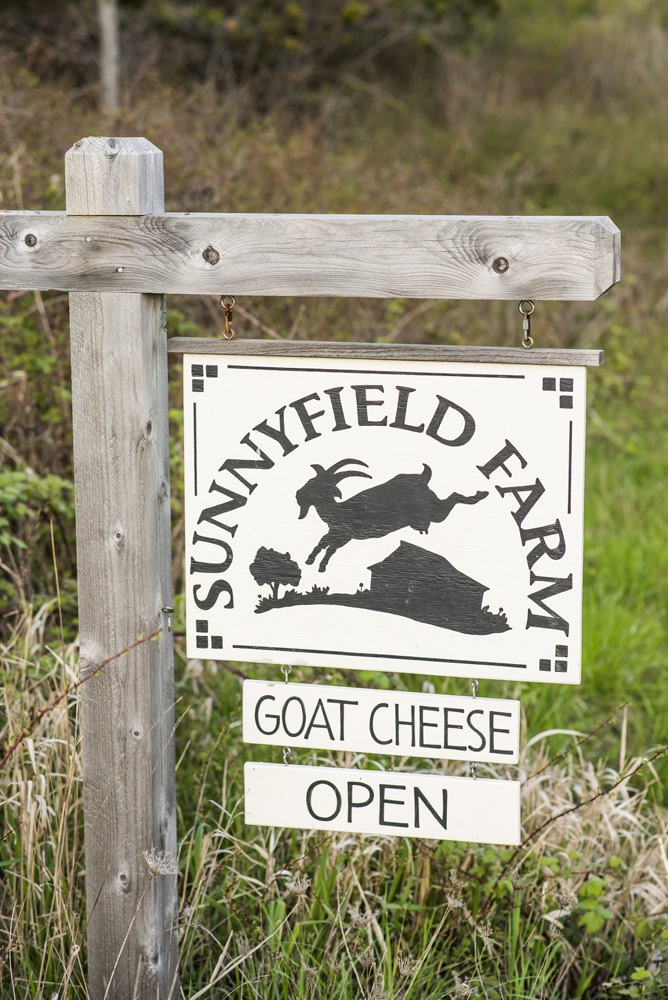
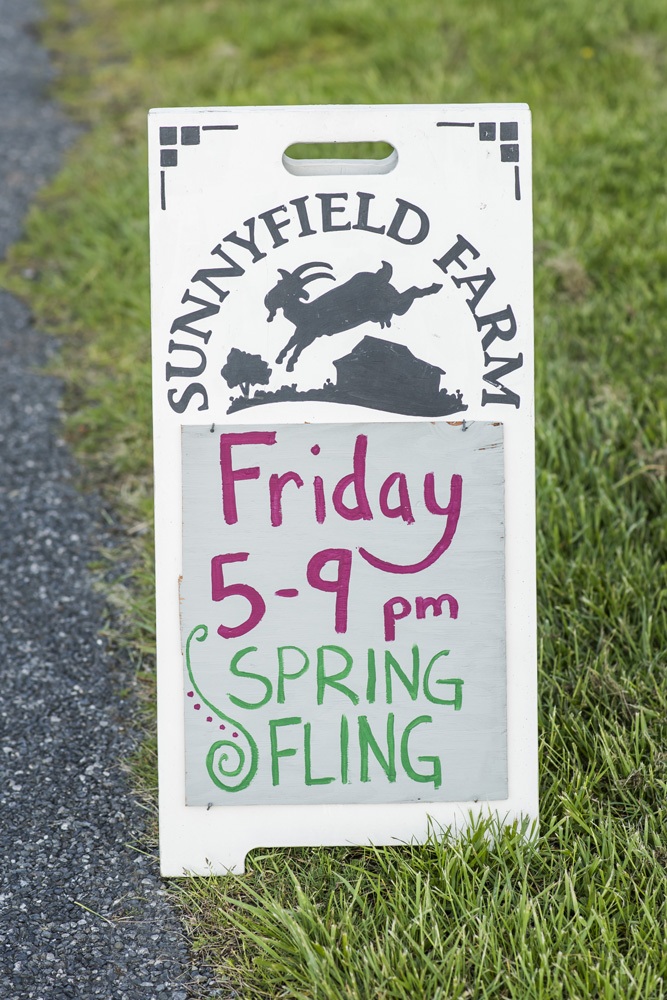
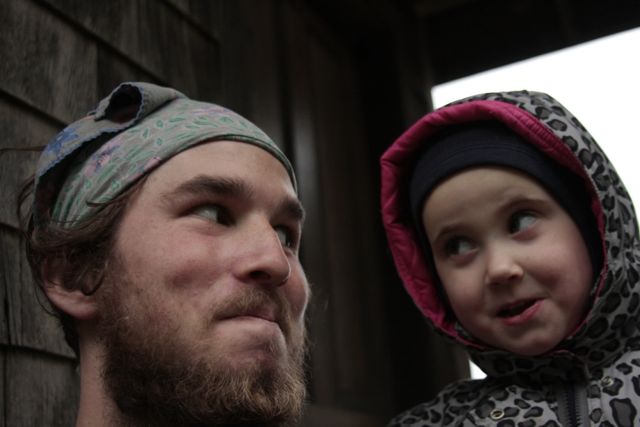
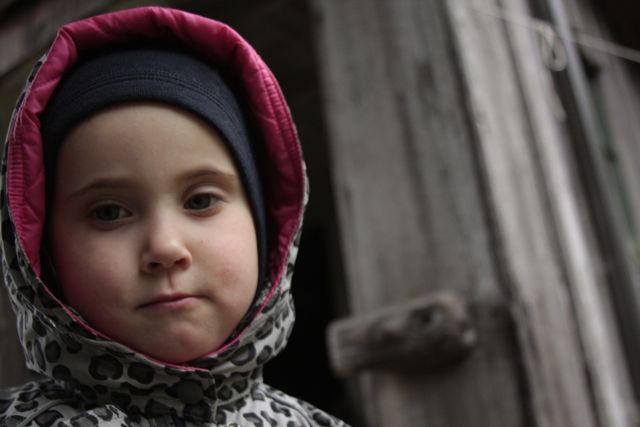
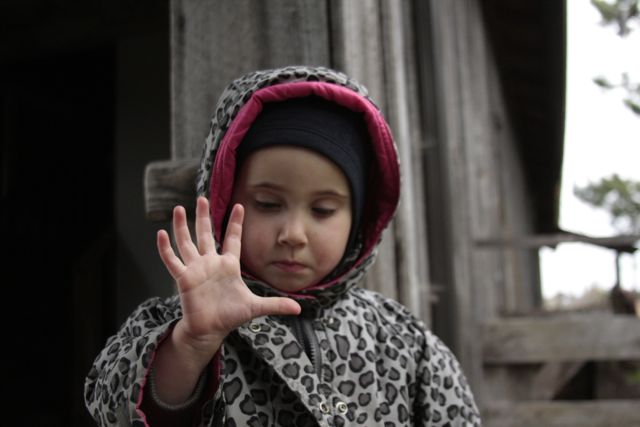
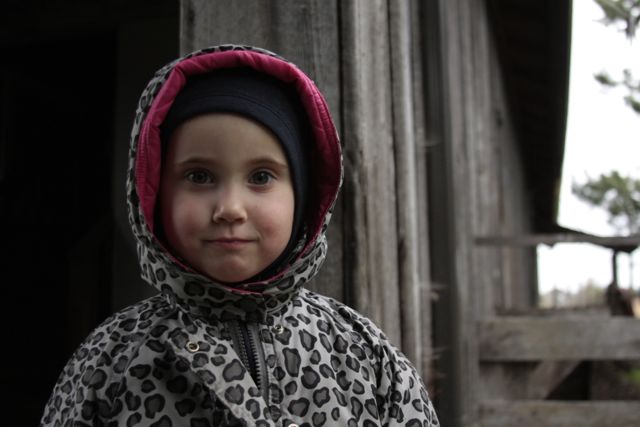
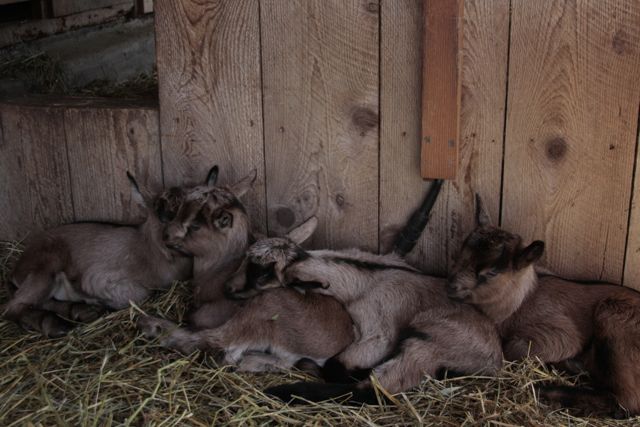
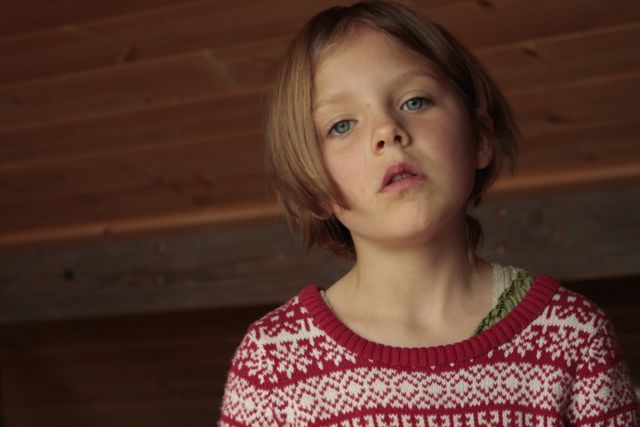
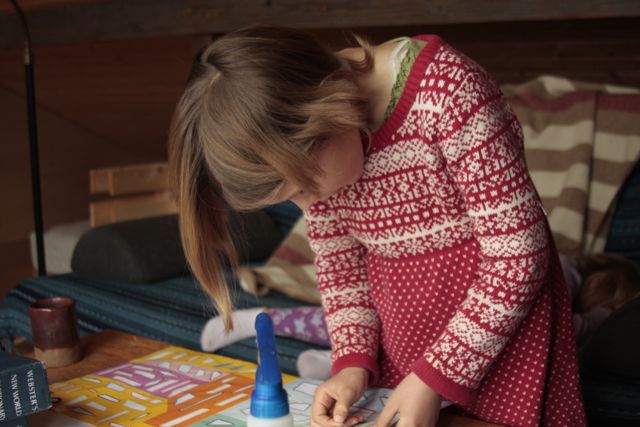
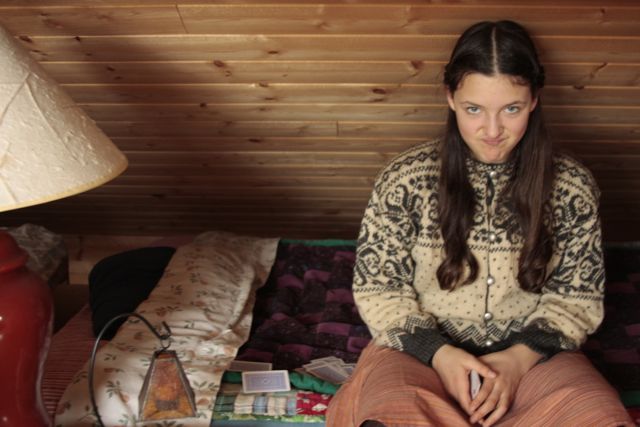
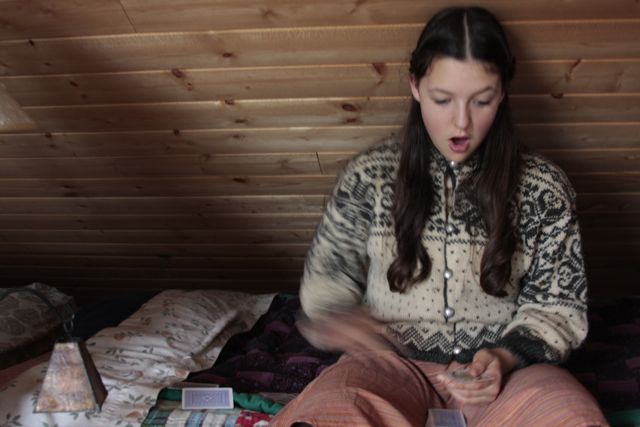

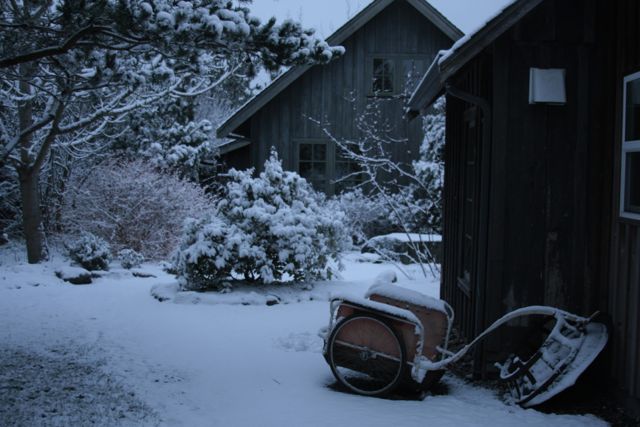
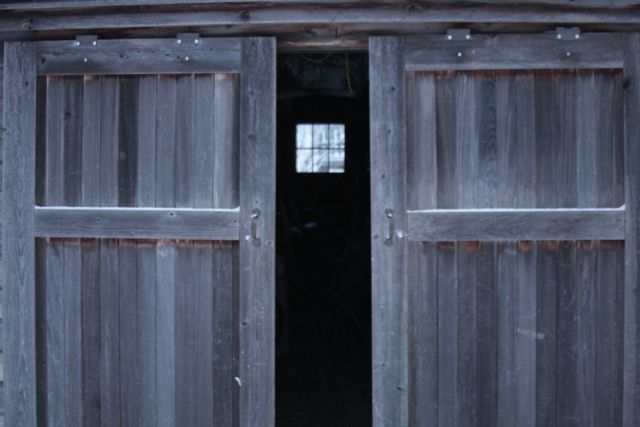
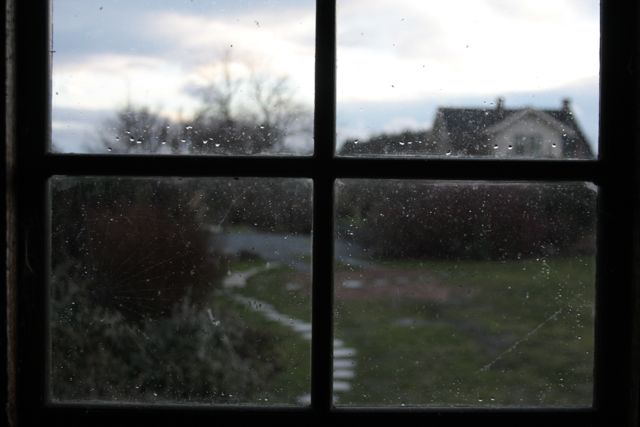
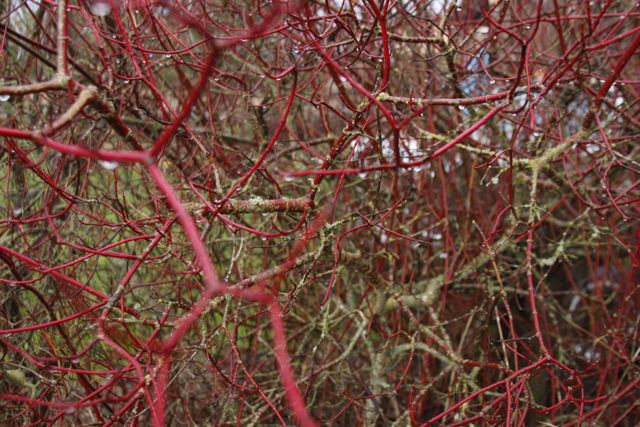
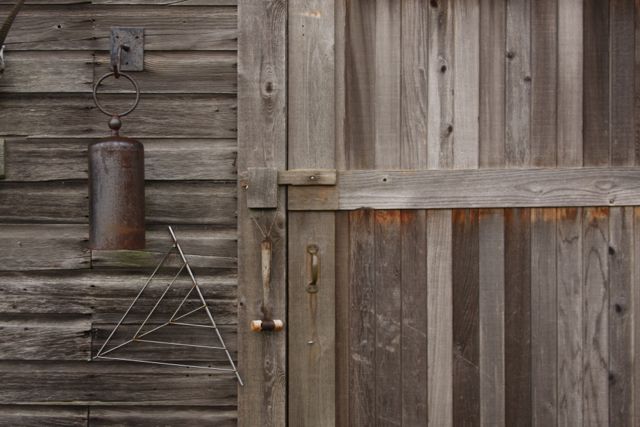
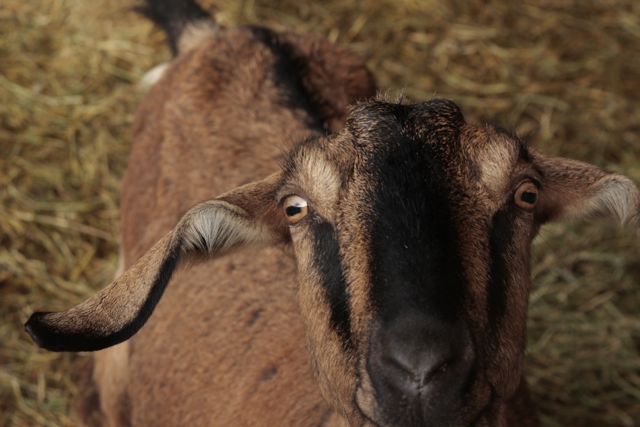
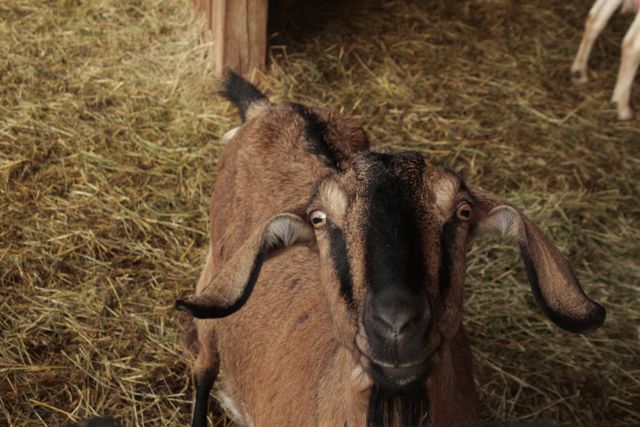
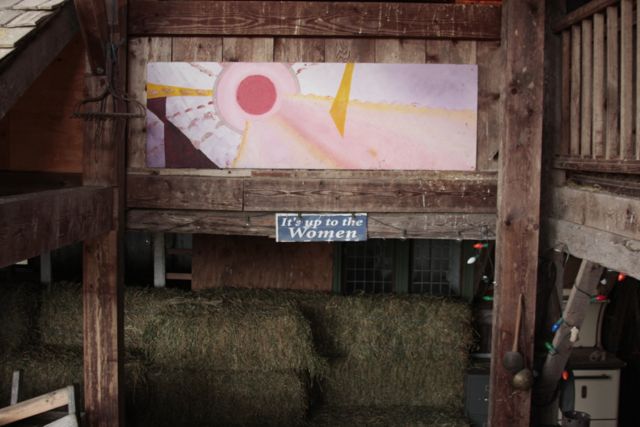
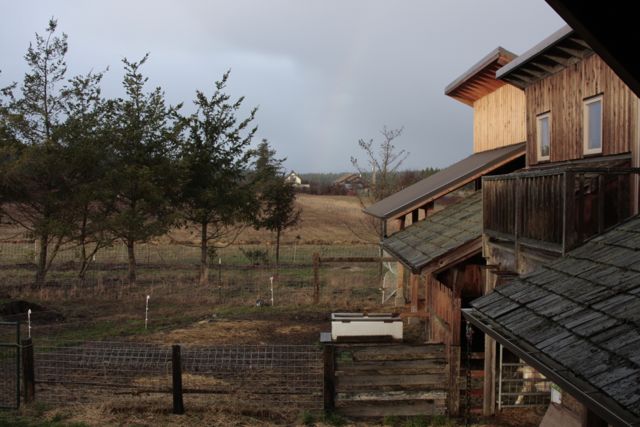
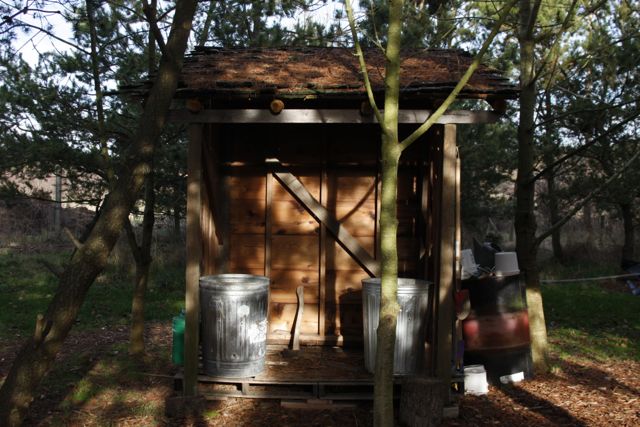
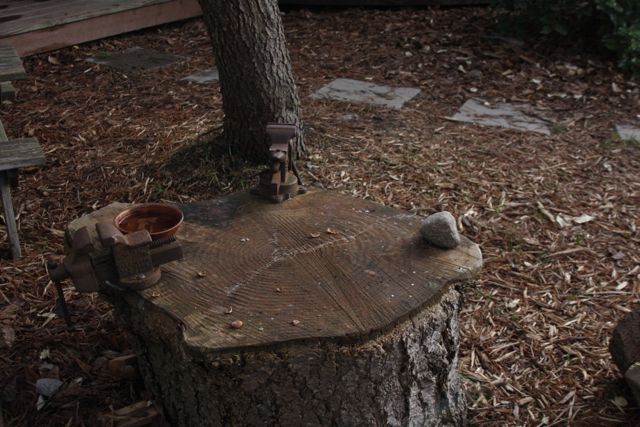
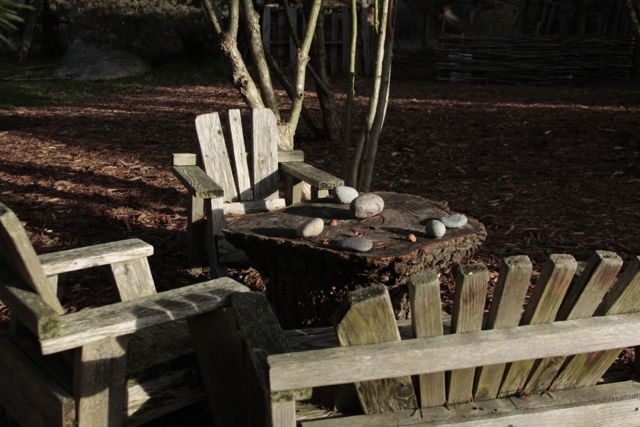
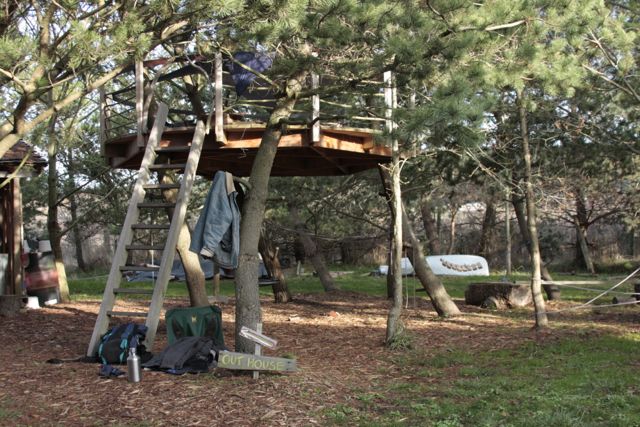
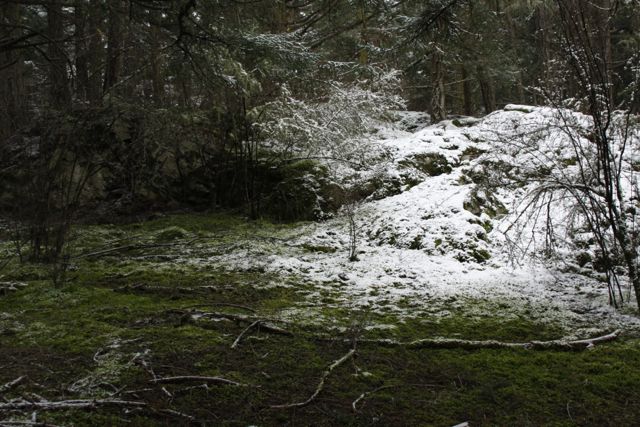
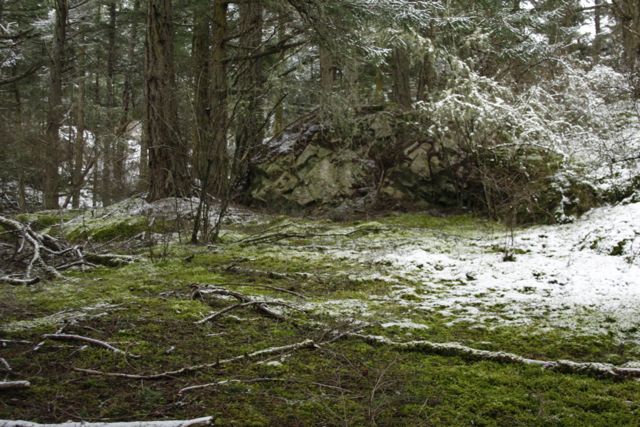
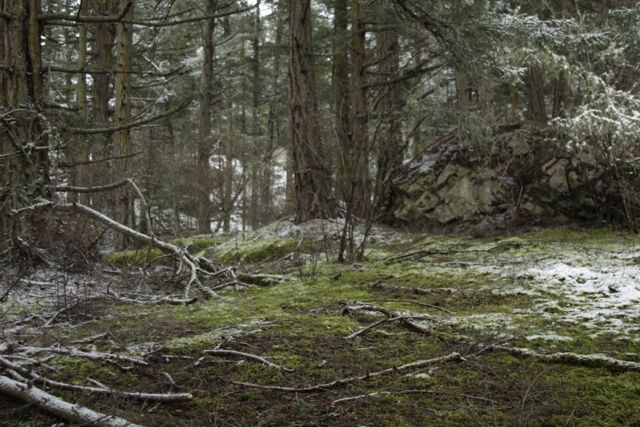
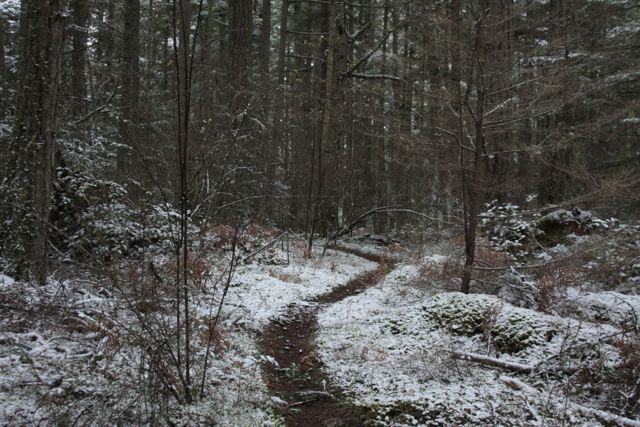
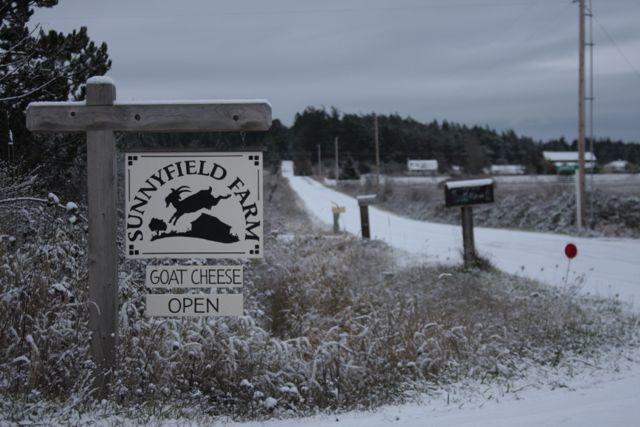
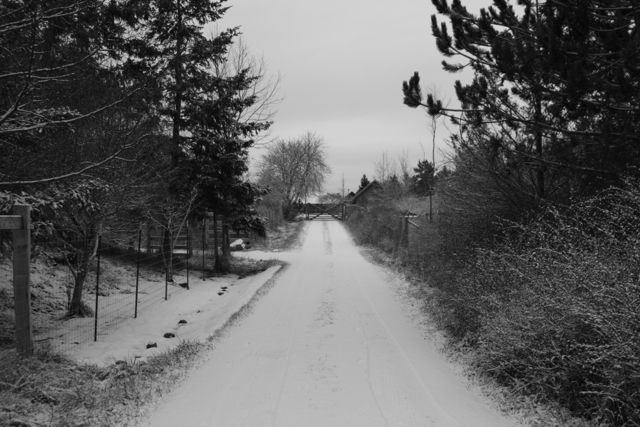
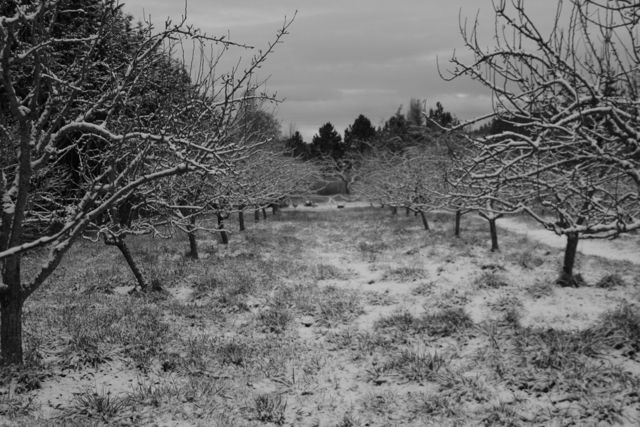
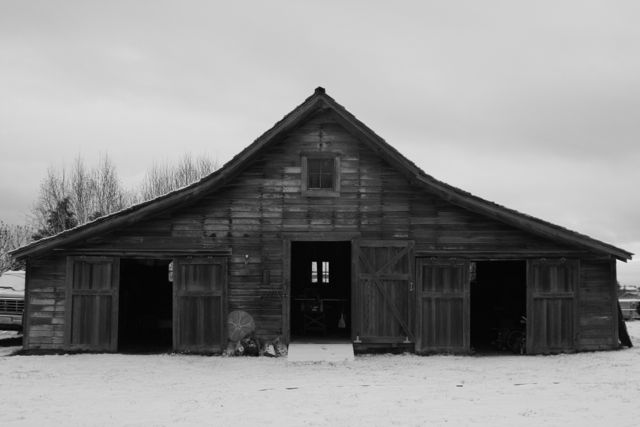
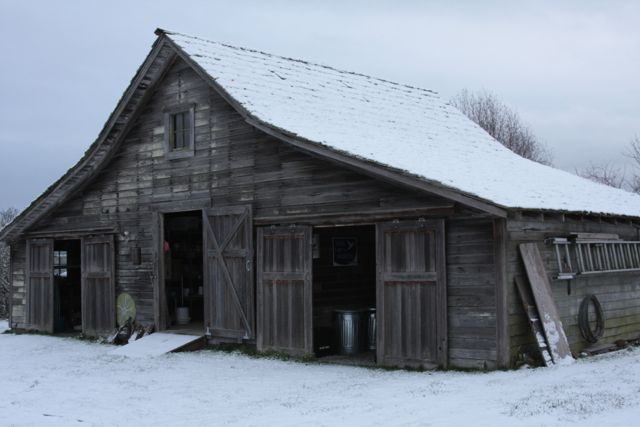
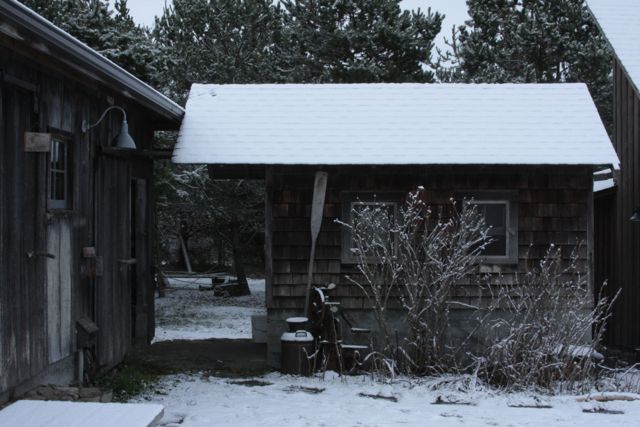
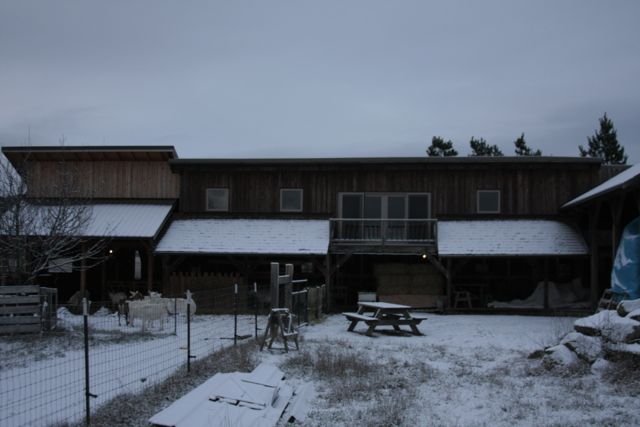
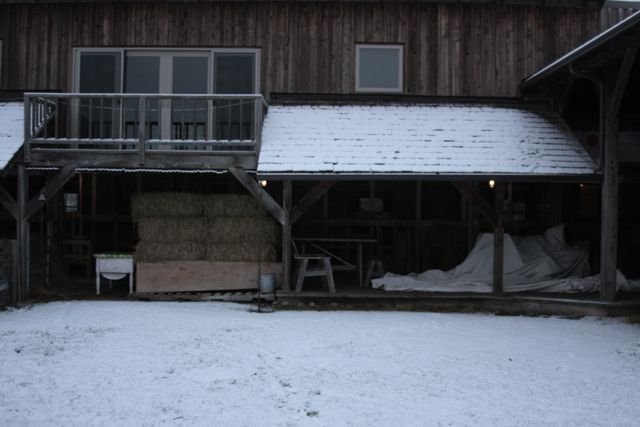
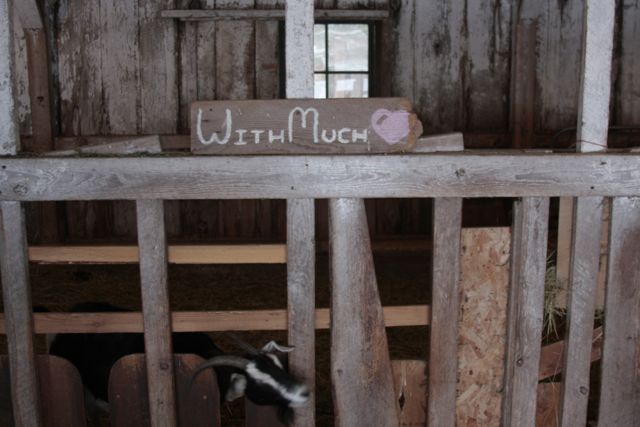
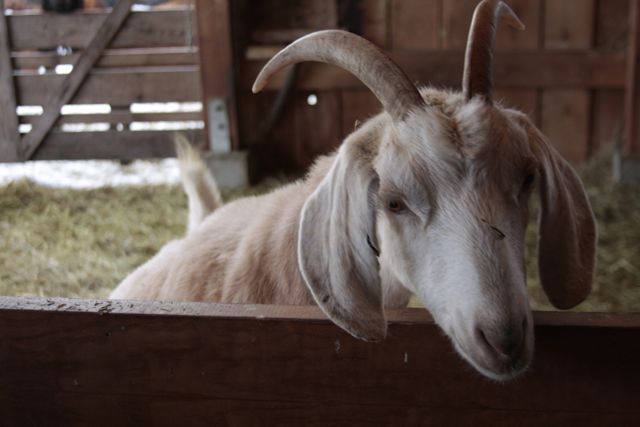
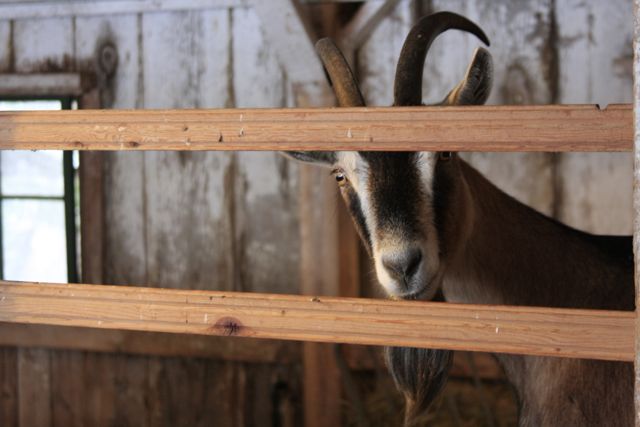






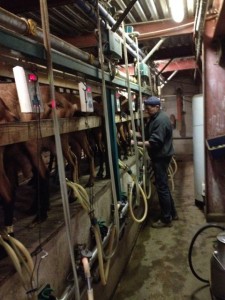
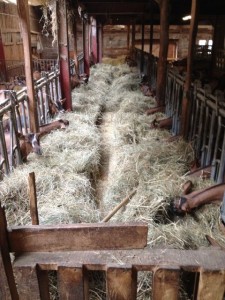

![image[1]](http://sunnyfieldonlopez.com/wp-content/uploads/2017/03/image1-300x225.jpg)
